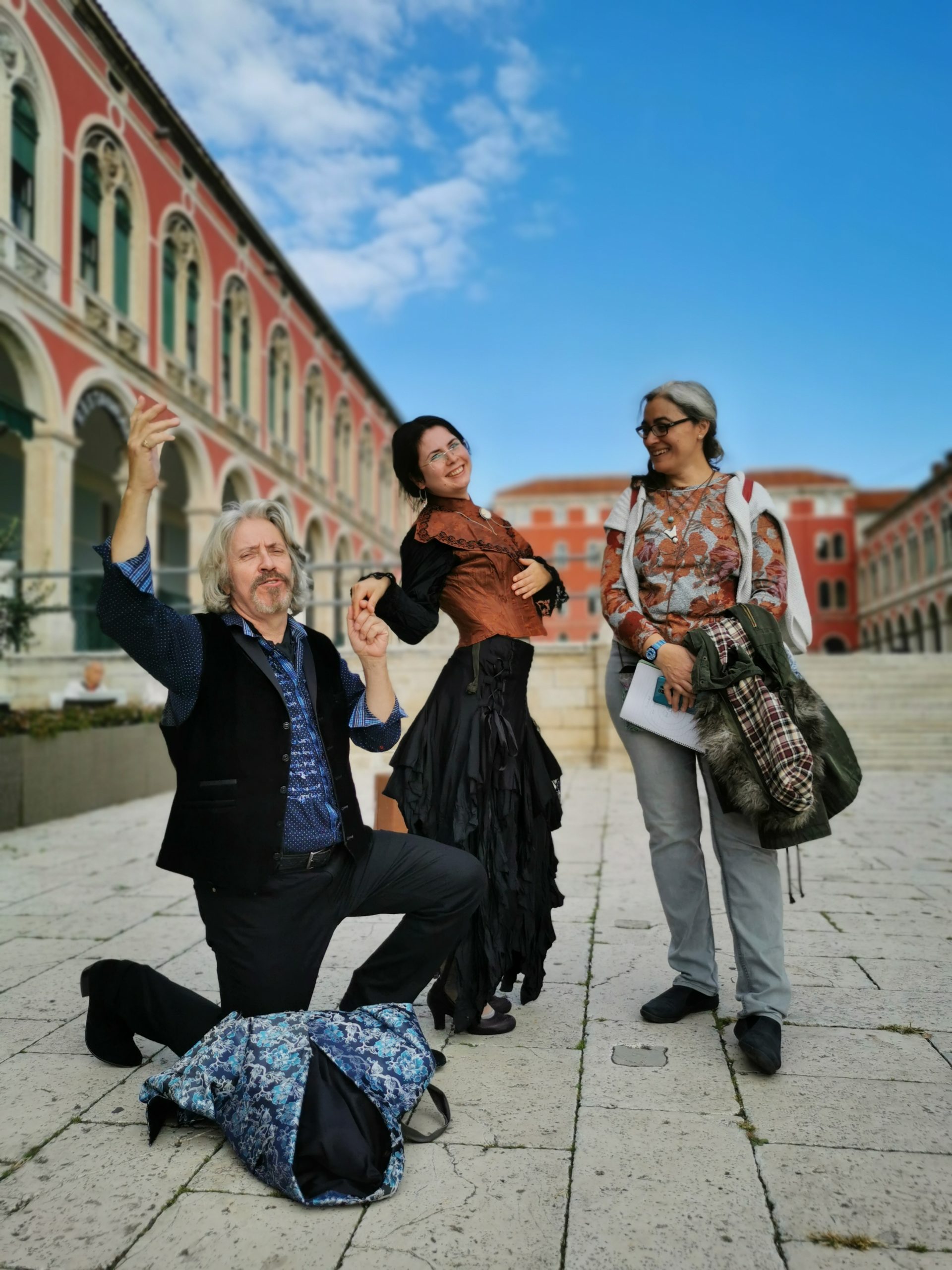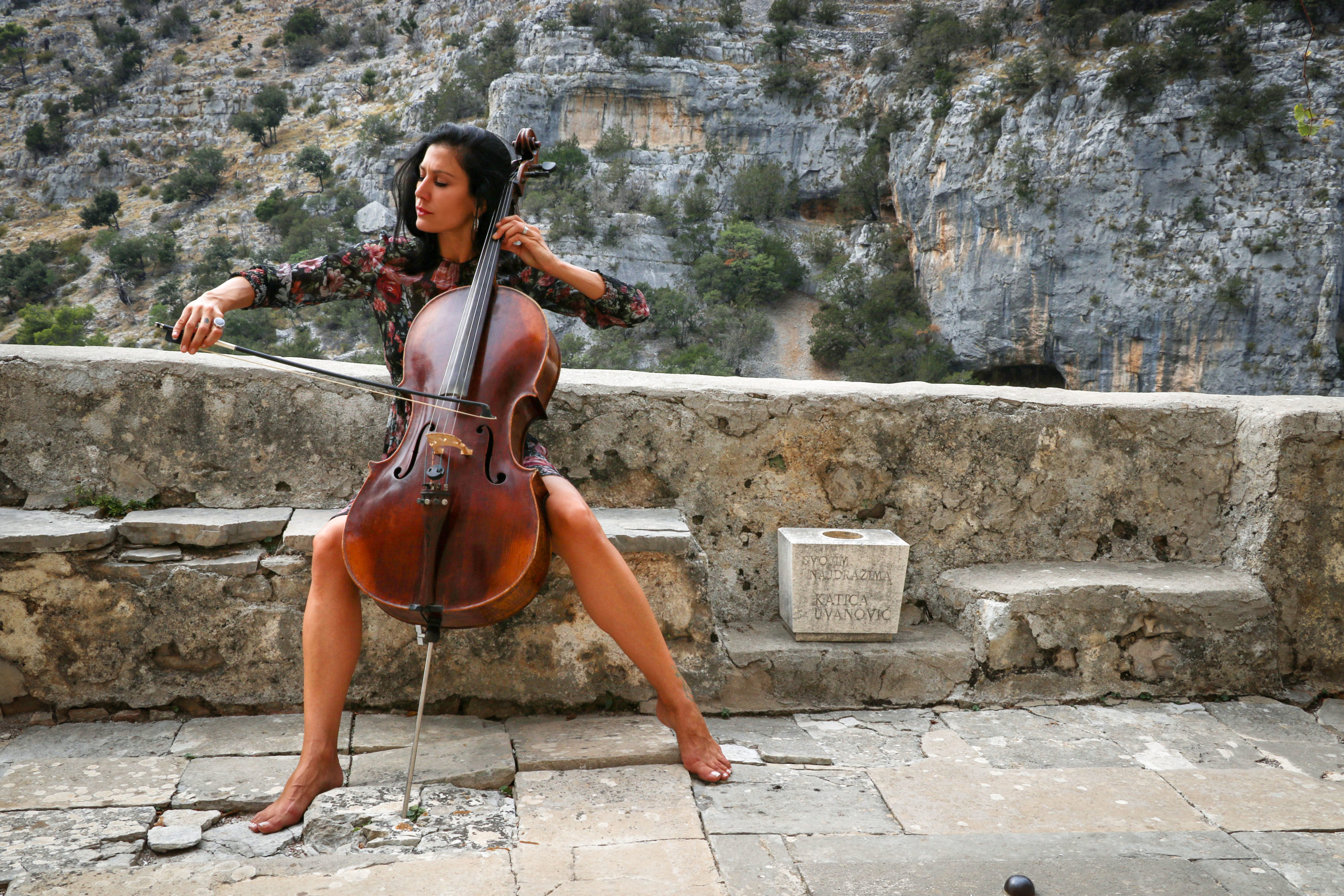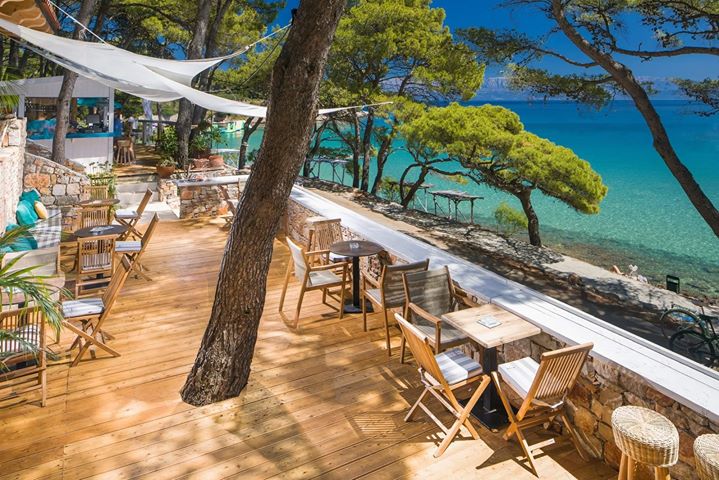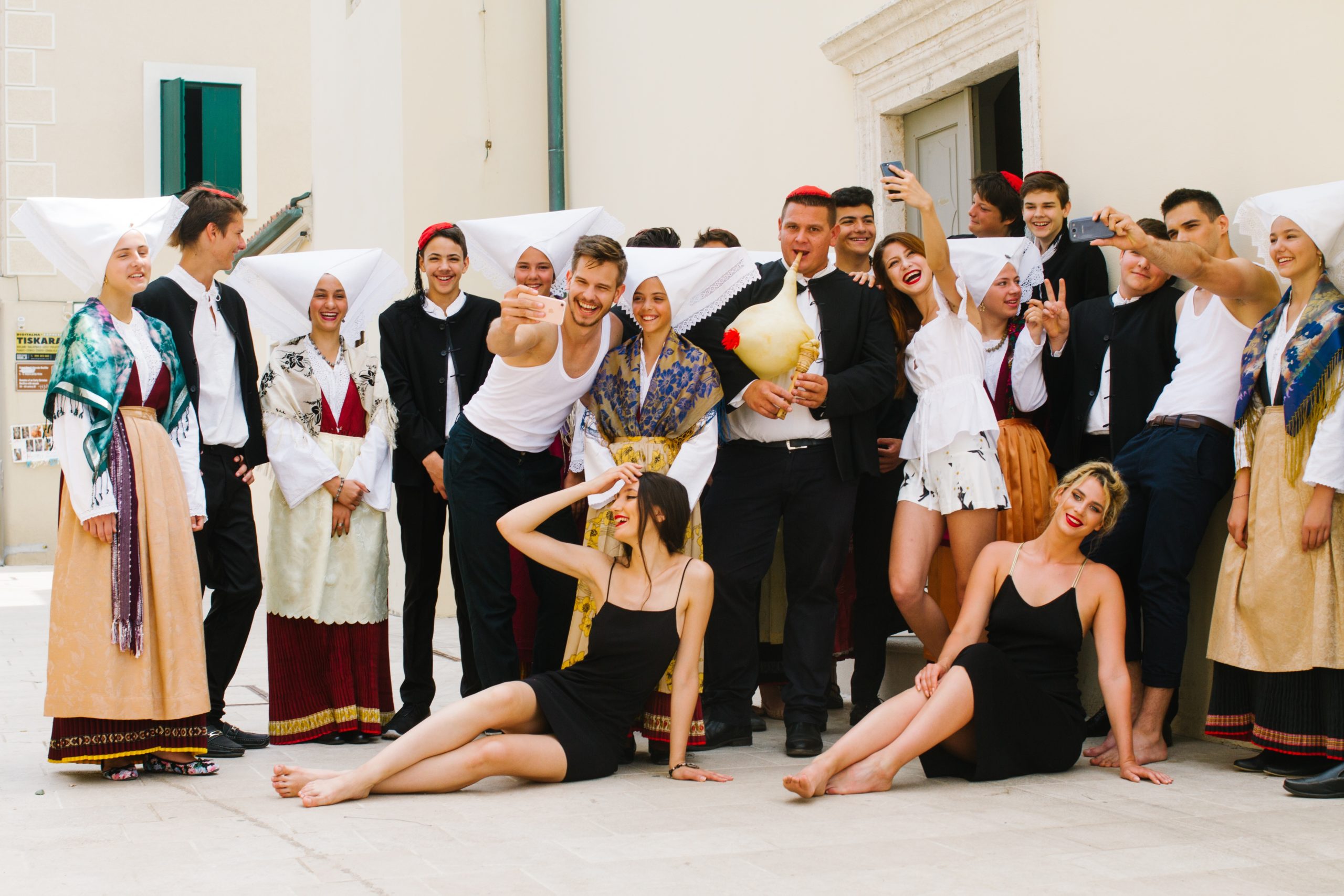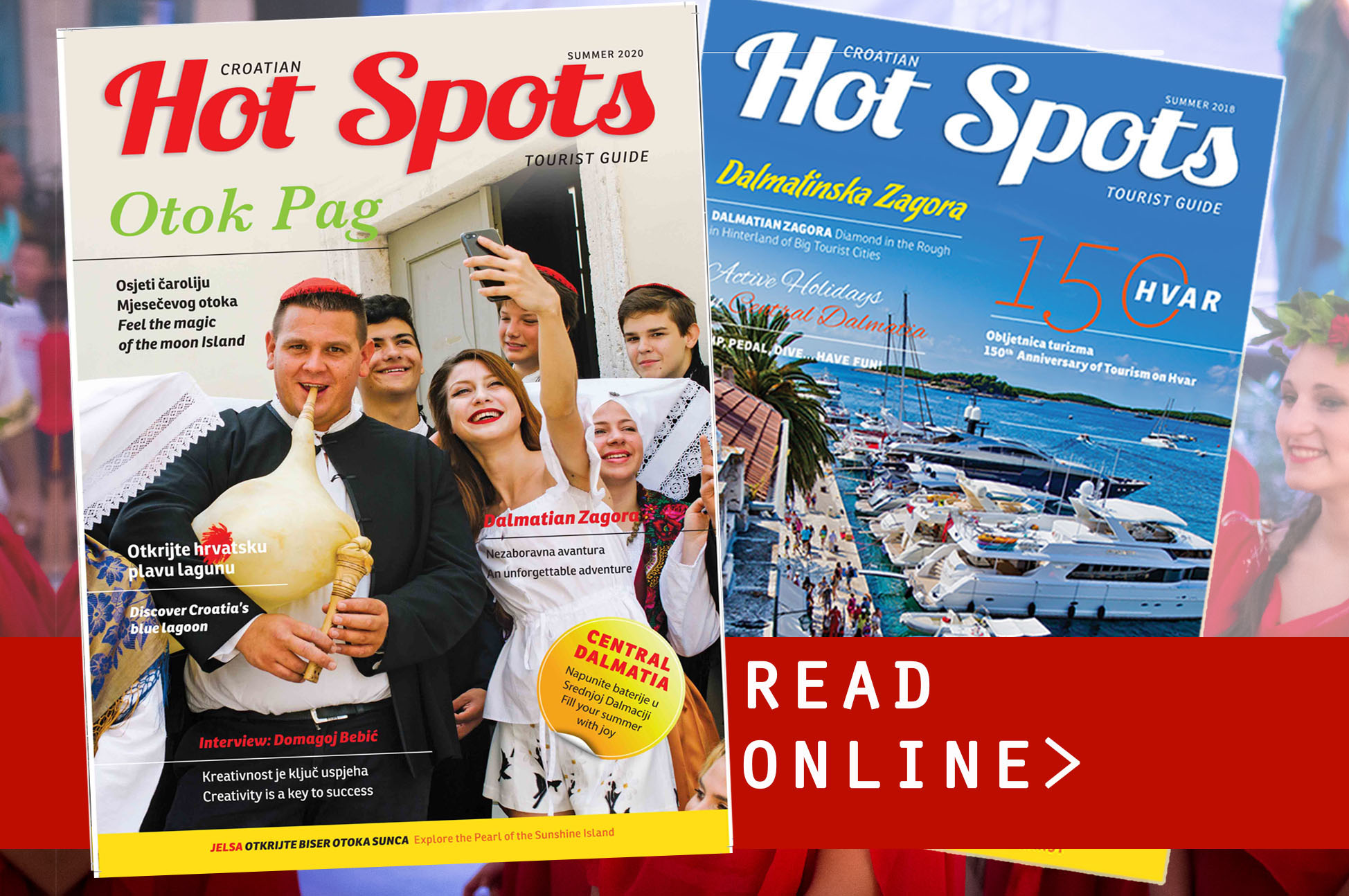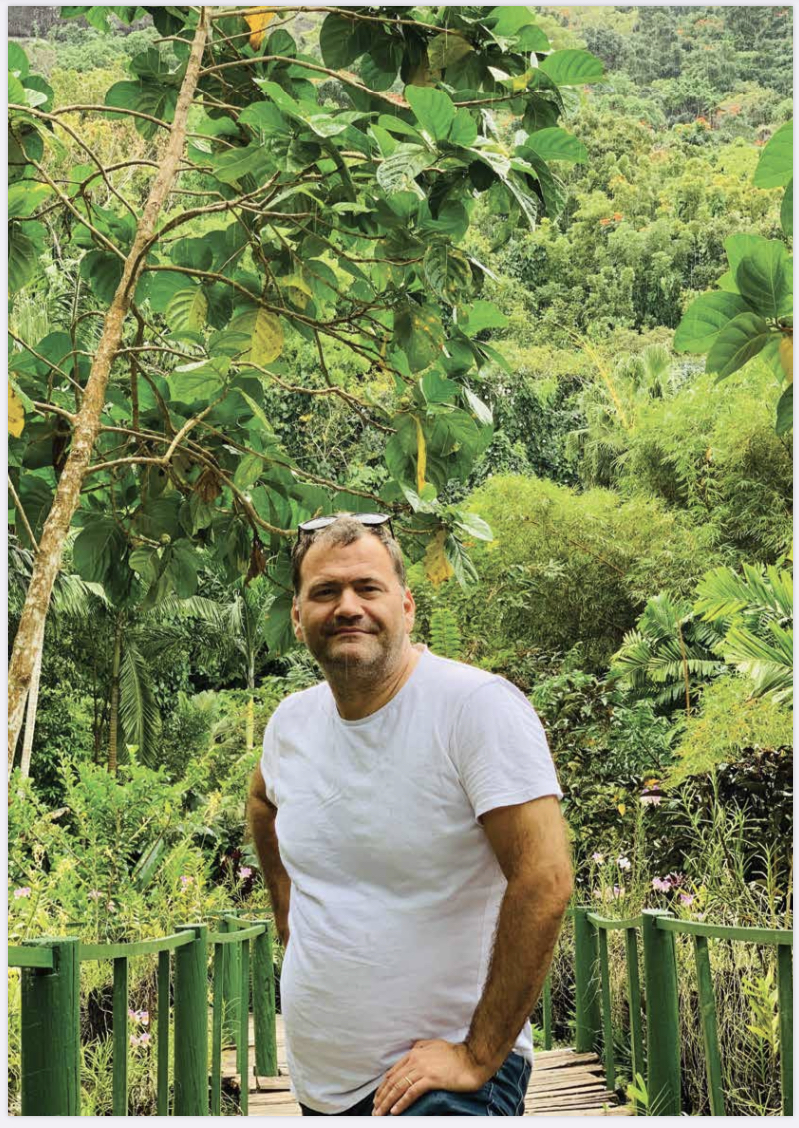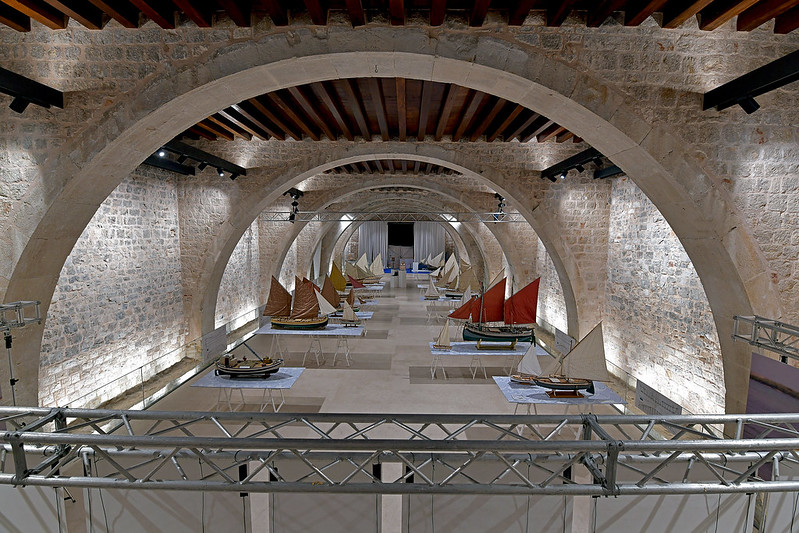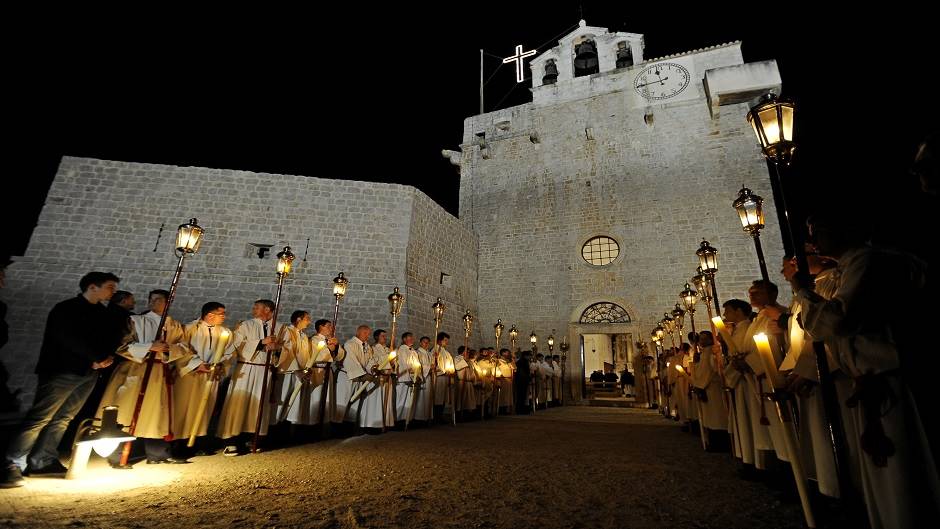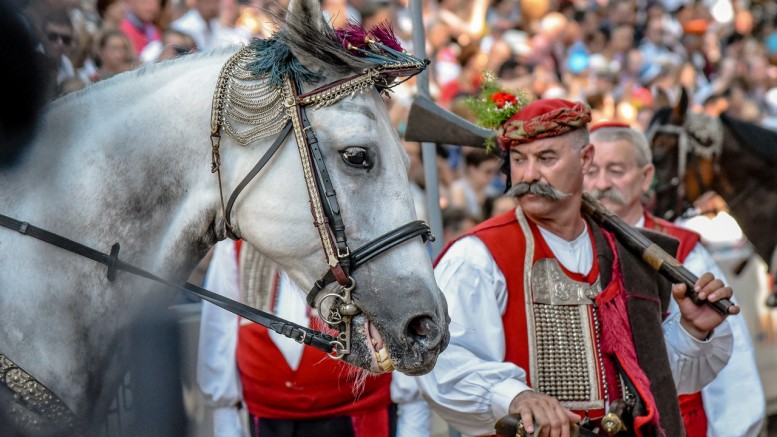DALMATIA - STORYTELLING DESTINATION Split-Dalmatia County begins unique project of breathing life back into its rich heritage
There are many authentic stories to be told in beautiful Split-Dalmatia County, a treasure that is ready for every new visitor to this area.
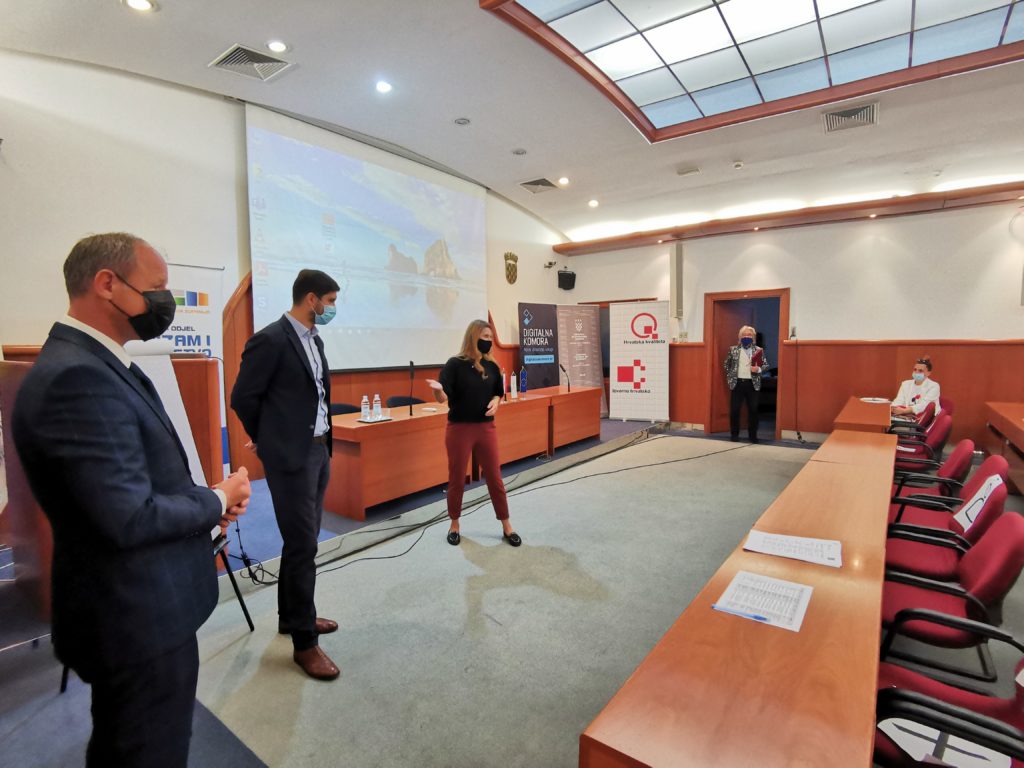

Guided by this unique idea, Split-Dalmatia County and the museums operating within this area have begun with an attractive project which involves reviving the characters of the area’s rich heritage. Through educated and certified guides wearing costumes, as well as educators, the idea brings forth an interesting way of presentation and a certain novelty in the tourist offer.
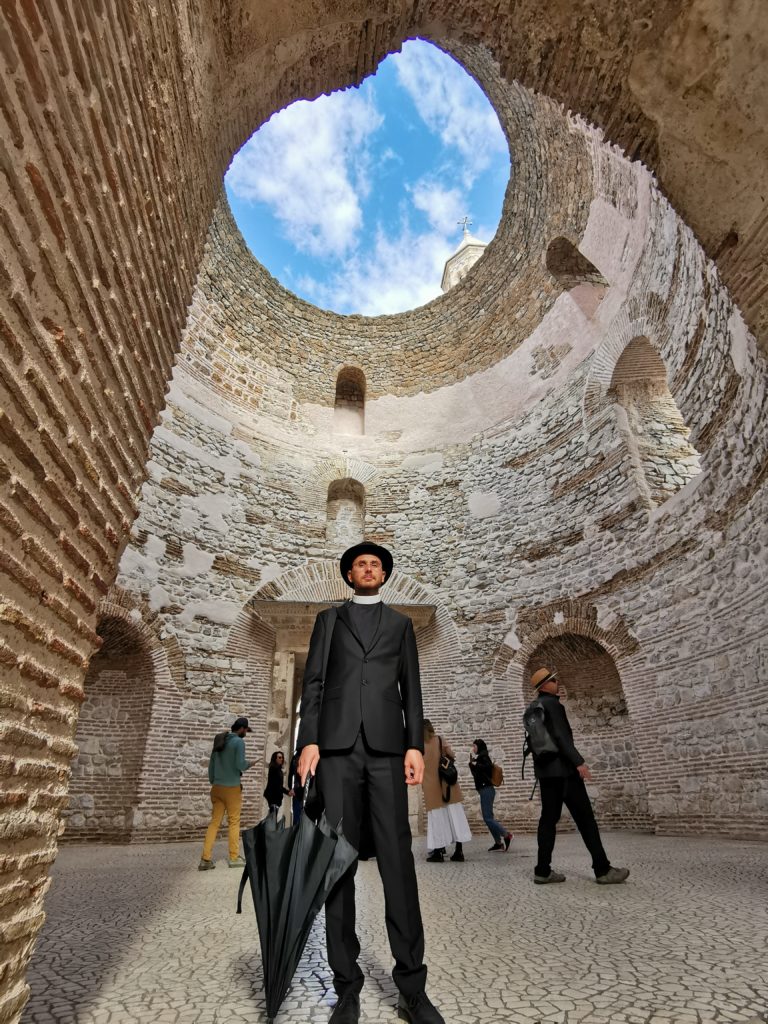
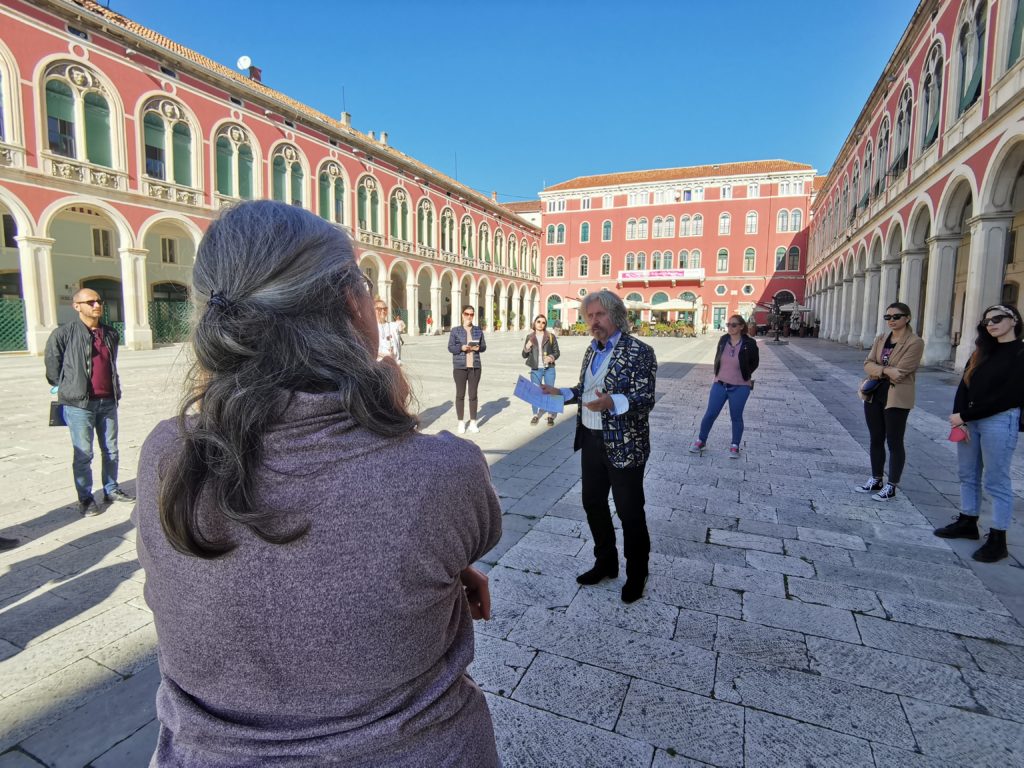
The project was initiated by the County Steering Committee for Tourism and Maritime Affairs, which realised an interesting tourist platform with the idea of Dalmatia as a storytelling destination. Its goal is to revive the characters from the county linked to its heritage, and create a creative 365 tourist offer within the museum and in other such significant sites.

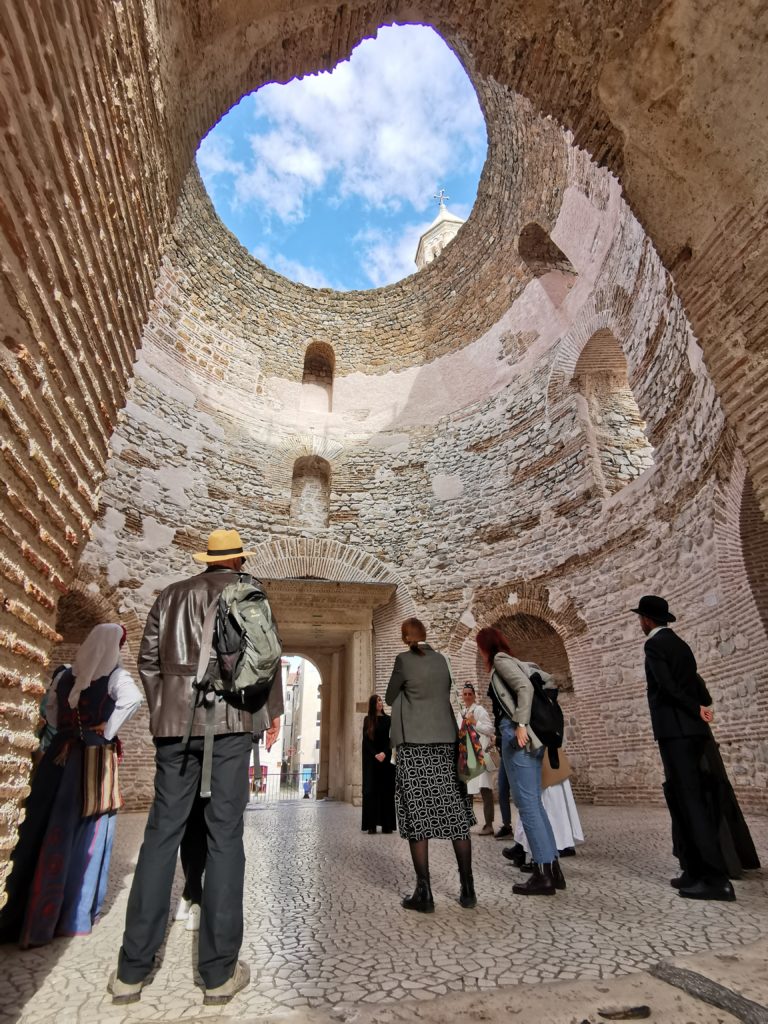
The implementation of this new tourist acquisition was preceded by training for numerous museum staff and tourist guides. During that very training, they learned how to present some of these so-called ‘’heritage characters’’, localities or events through storytelling announcements, providing guests with new knowledge, and also allowing them to get to know the county in some other kind of way.

Storytelling in the museums of Dalmatia, as a storytelling destination, is a unique project in the Republic of Croatia, but also at the European Union (EU) level. It started with education sessions held from the 9th to the 13th of November, 2020. in the premises of the Croatian Chamber of Commerce in Split, and it was then realised through the joint cooperation of Split-Dalmatia County and the Let’s Interpret Croatia Association.
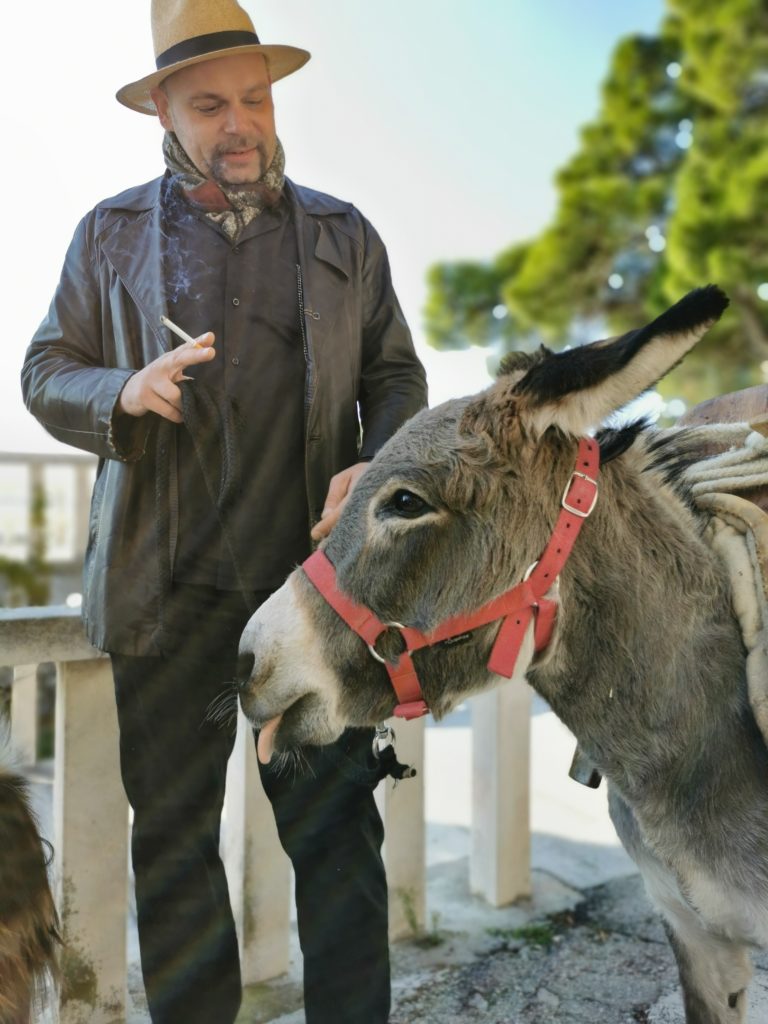
Cilj joj je kroz edukacije prenijeti znanja i vještine prezentacije i interpretacije baštine, korištenjem storytelling metode sukladno Interpret Europe certifikatu.

The aforementioned association is committed to encouraging excellence and efficiency in the interpretation of Croatian natural and cultural heritage, as well as raising awareness of its importance for the development of the country’s various local communities.
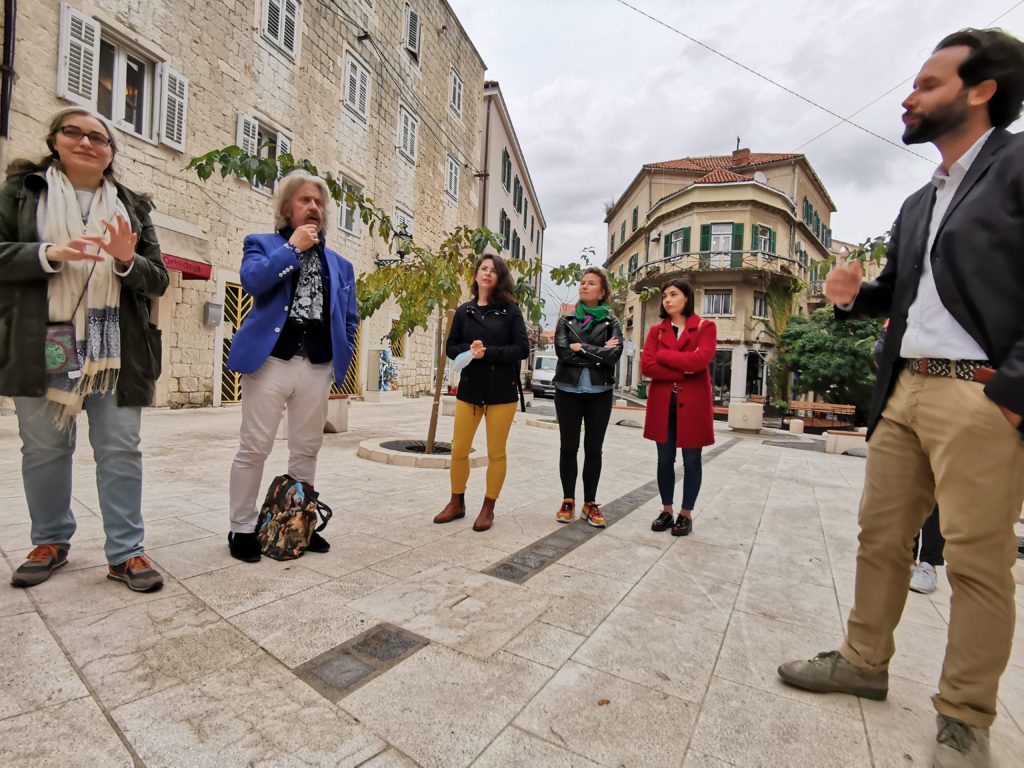
Its primary goal is to transfer knowledge and skills of the very presentation and interpretation of heritage through education, using the storytelling method in accordance with the Interpret Europe certificate.
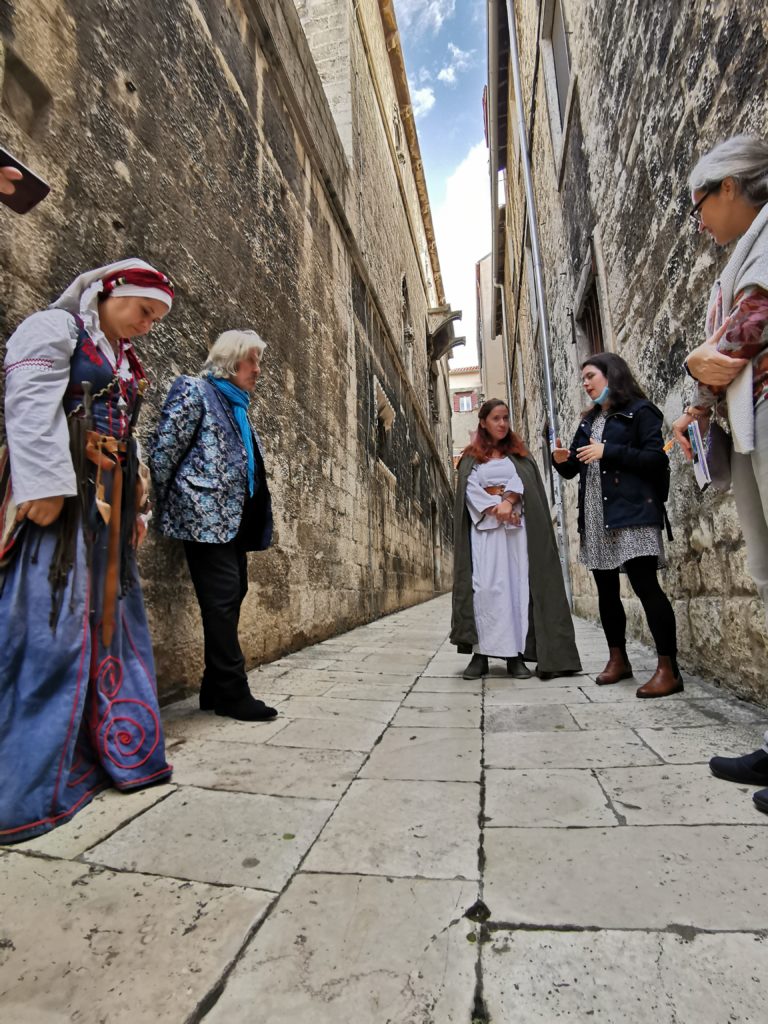
The training session was led by experienced lecturers Mark Wallis from the United Kingdom and Valya Stergioti from Greece, the most important members of ‘’staff’’ when it comes to costumed interpretation of heritage in all of Europe.
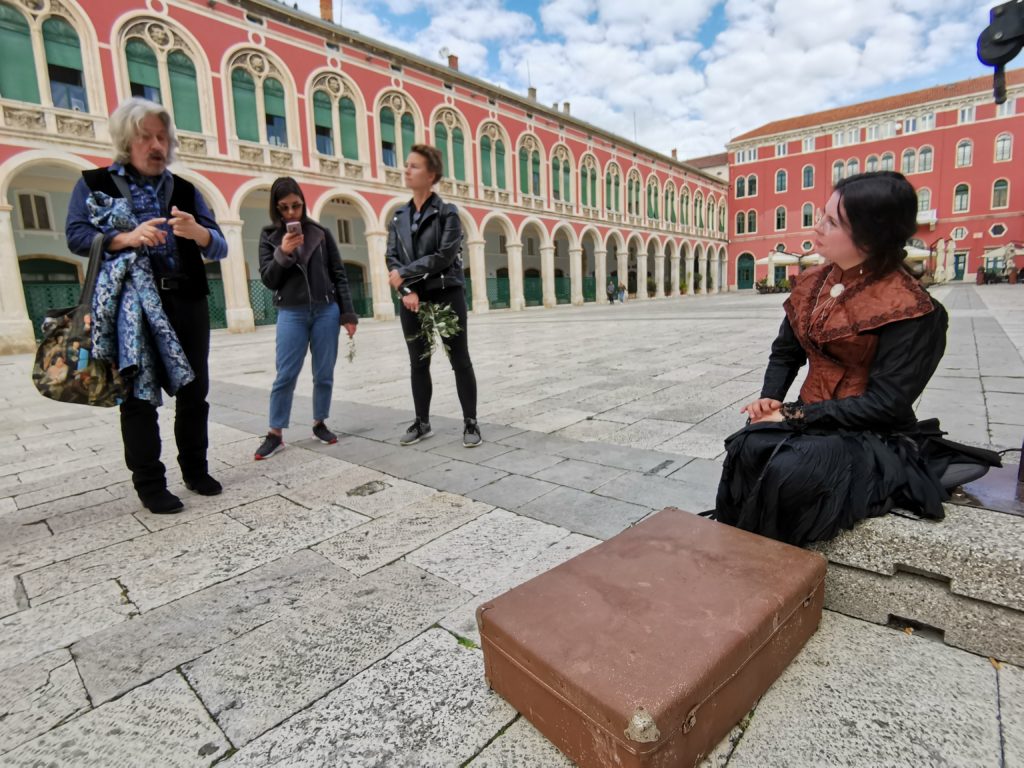
Their task was to acquaint already experienced guides and museum staff with this brand new way of using Split-Dalmatia’s highly unique resources. In this way, every visitor is offered a unique souvenir from this area, new knowledge, as well as a sense of really getting to know the destination in which they stayed.
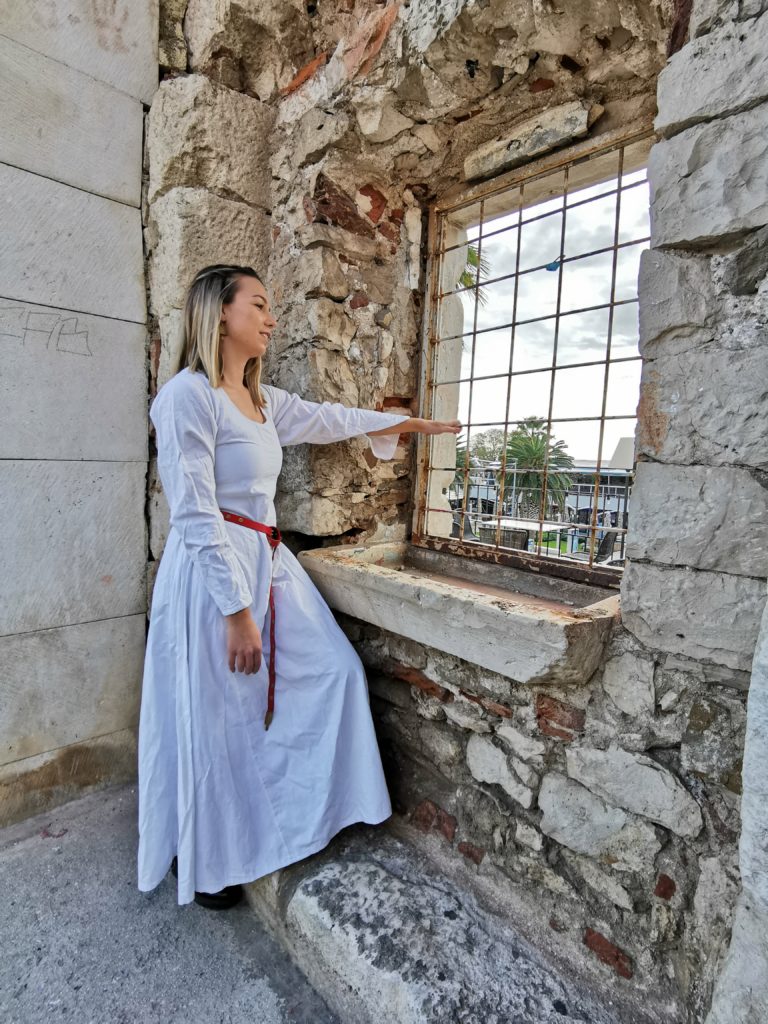
‘’The intention was to introduce Split-Dalmatia’s tourist staff to the presentation of heritage in a costumed performance, that is, through the story of a person, detail, history… Thus, we provide an unforgettable experience for every visitor. In Britain, it is an extremely popular platform and is a favourite among our guests. On my first visit to Split, I couldn’t help but notice how the whole city resembles a fantastic set for a TV or movie plot. The city is beautiful, unique, special, and boasts an enormous amount of content, perfect backdrops for a costumed heritage presentation,’’ said Mark Wallis, the director of Past Pleasures, Ltd. the oldest company involved in costumed interpretation and the staging of historical events in Britain.

The training was attended by fourteen heritage institutions from Split-Dalmatia County, as well as professional museum staff, museum associates and licensed tourist guides.
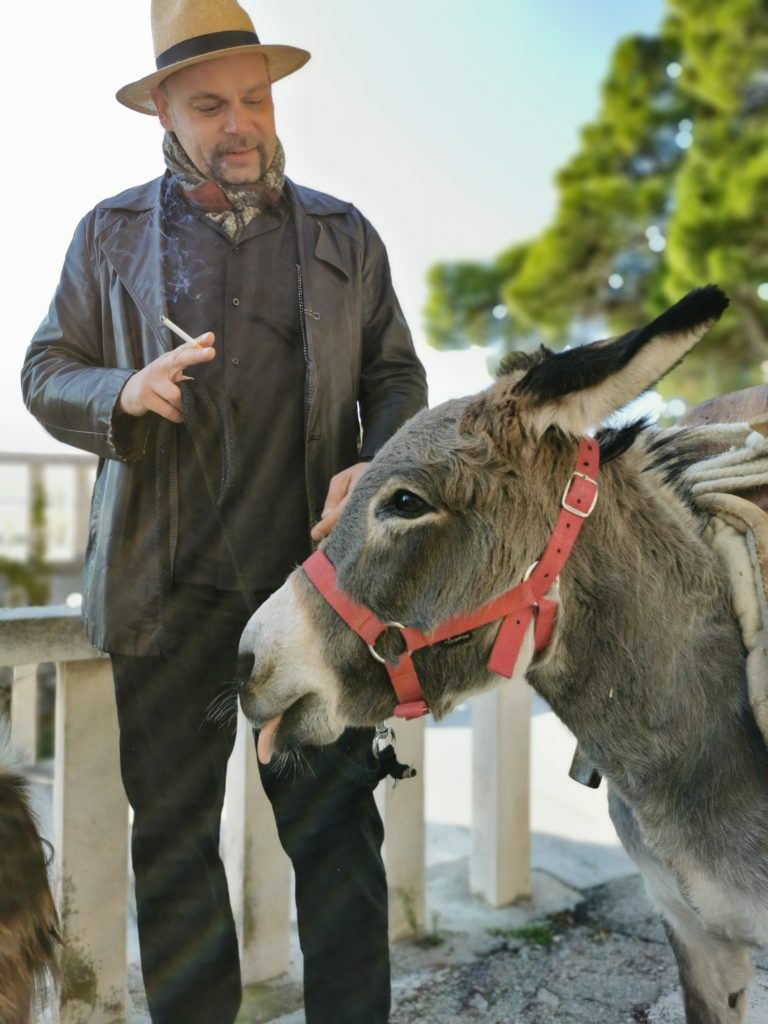
With this new approach to heritage presentation, they will become costumed first-person performers for: the Kastela City Museum, the Poljica Museum, the Trogir City Museum, the Trilj Region Museum, the Split City Museum, the Ivan Mestrovic Museums, the Split Archaeological Museum, the Croatian Maritime Museum Split, the Natural History Museum and the Zoological Garden, the Museum of Croatian Archaeological Monuments, JU Starogradsko polje, the Klis Fortress, Ritam igre and the Sinj Tourist Board.
The revival of ‘’heritage characters’’ in the area’s museums, as well as that same revival of heritage institutions at the county level is a unique project that enables experiences through unforgettable, authentic, emotional stories which are first and foremost - Croatian stories.
This project aims to preserve and present Dalmatian cultural heritage, but also to contribute to the year-round tourism offer of Split-Dalmatia County.
Ana Rucner - Somewhere between the the sea and the stars
|
World-famous cellist Ana Rucner was more active than she is usually is this past summer. In addition to a series of successful concerts that she held along the entire Adriatic coast, she was engaged as an ambassador of the Foundation "Island of Brač - somewhere between the sea and the stars", and the turning point was a concert held in Bol.Svjetski poznata violončelistica Ana Rucner, ovog je ljeta bila aktivnija nego inače. Pored niza uspješnih koncerata koje je održala duž čitave jadranske obale, angažirala se kao ambasador Zaklade „Otok Brač – negdje između mora i zvijezda“, a prekretnica je bio koncert u Bolu. |
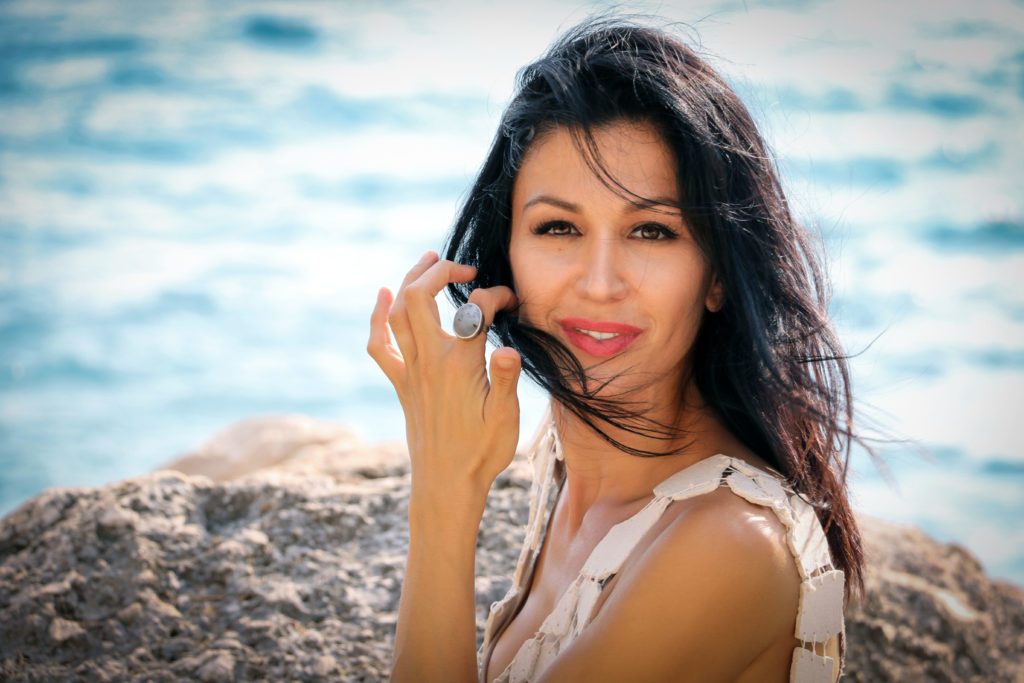
”On the day of the concert, the director of the Tourist Board of the Municipality of Bol, Markito Marinkovic, organised a promotional photo shoot at several typical Bol locations and introduced me to a fantastic photographer. It soon turned out that Robert Barilla was not only a photographer, but also volunteered for years as the director of the Foundation for Research and Preservation of the Heritage of the Island of Brač and is also the author of the monograph of the same name. I was among the first to see a trial copy of this "Brač Bible" and it is clear to me why its release is awaited with the same anticipation by ordinary people as by those in academic circles,’’ said Ana.
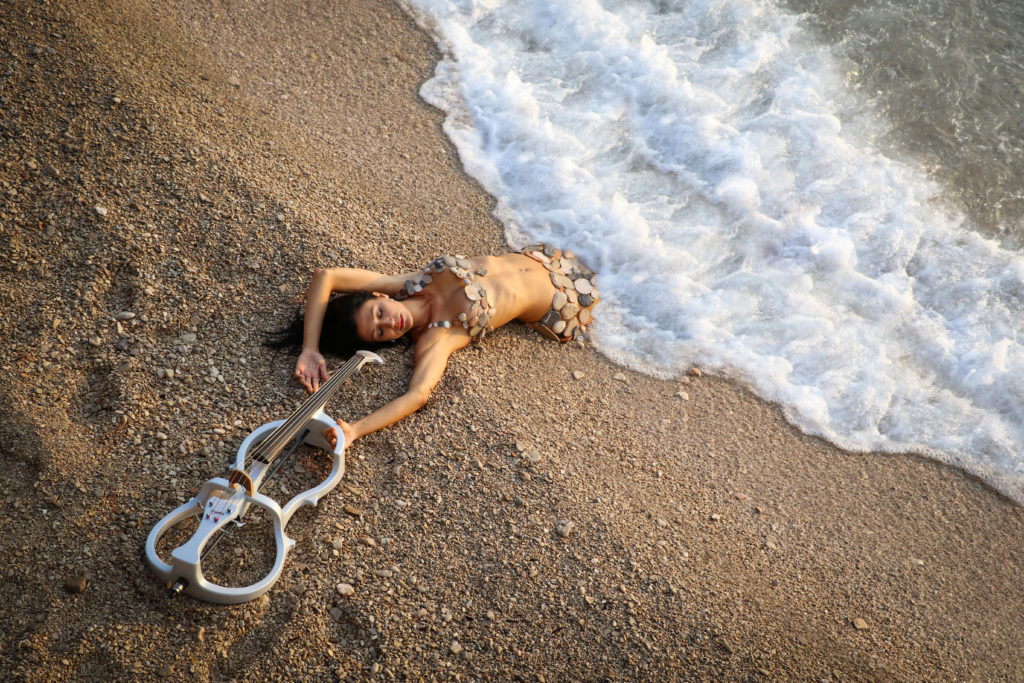
Pure love for the island of Brač is hidden among the 1,360 pages of this book, which is equipped with over 3,000 photographs, maps, documents and illustrations, imported in luxury leather binding, and is scheduled to be published early next year.
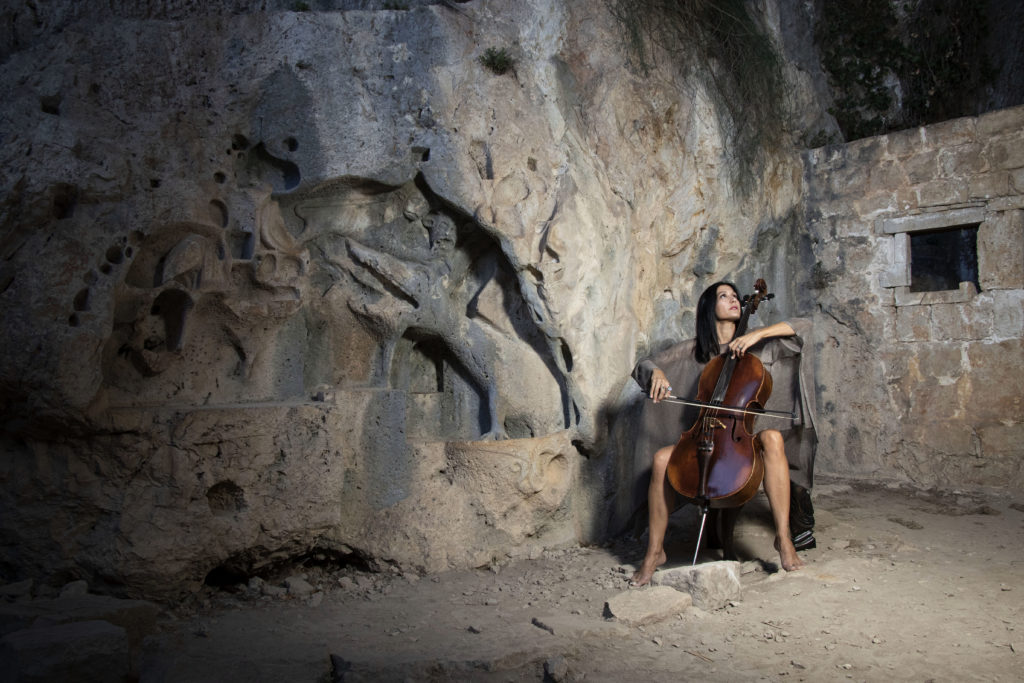
The whole Rucner family has houses on the island of Brač and they spend their summers in Povlja every year, so Ana has been connected to Brač since her back in the days of her very earliest childhood, and during her studies she held a concert tour throughout the island.
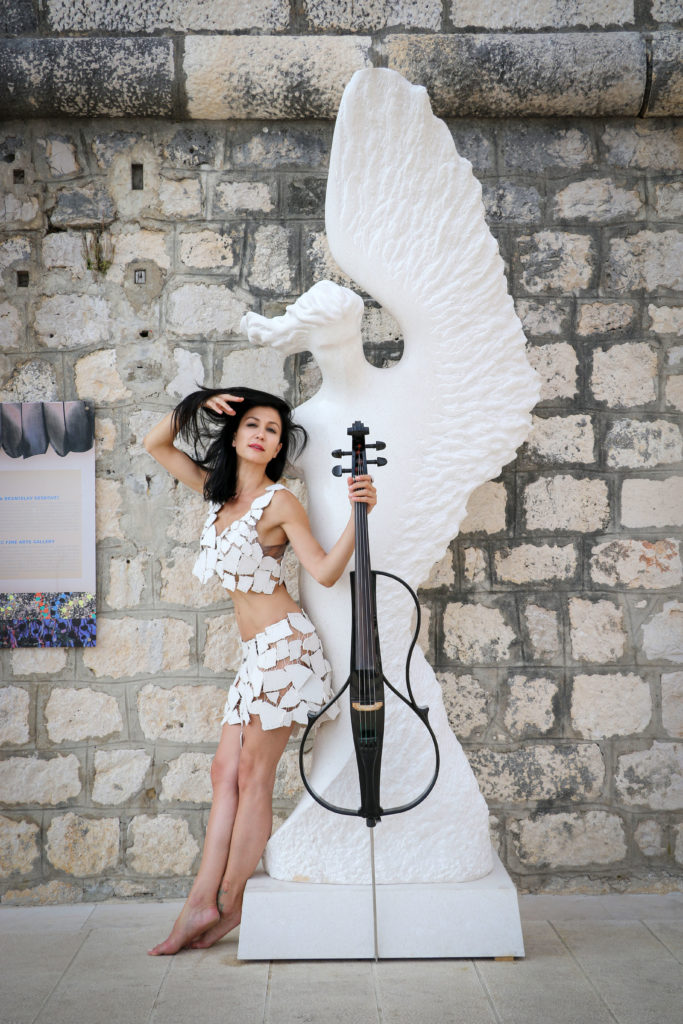
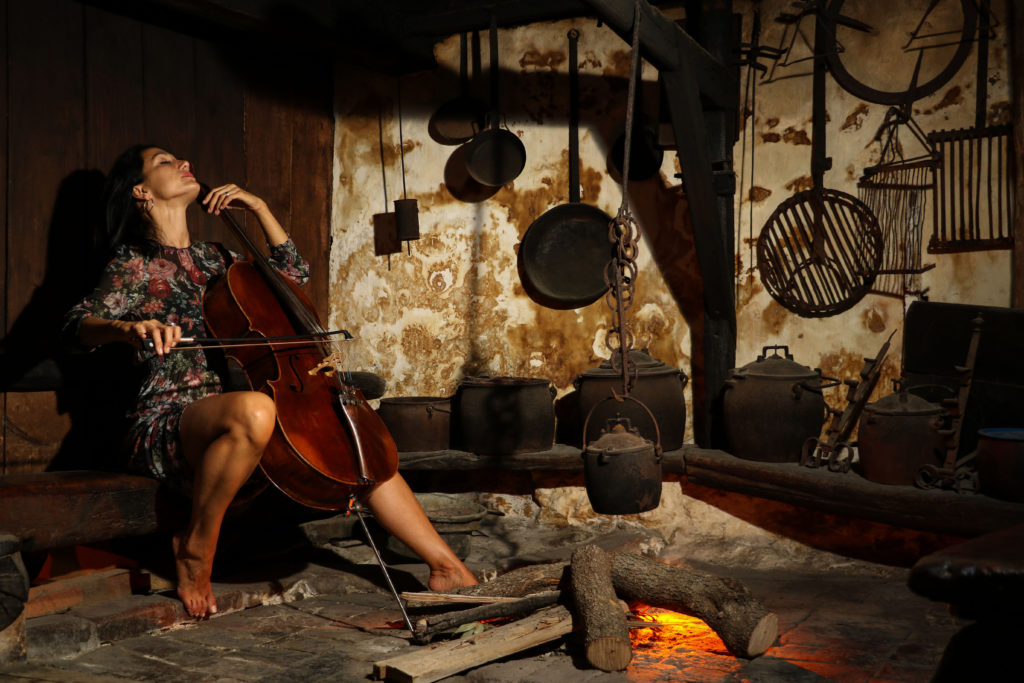
This great musician who erases all borders with her music, is one of the best representatives of Croatia in the world.

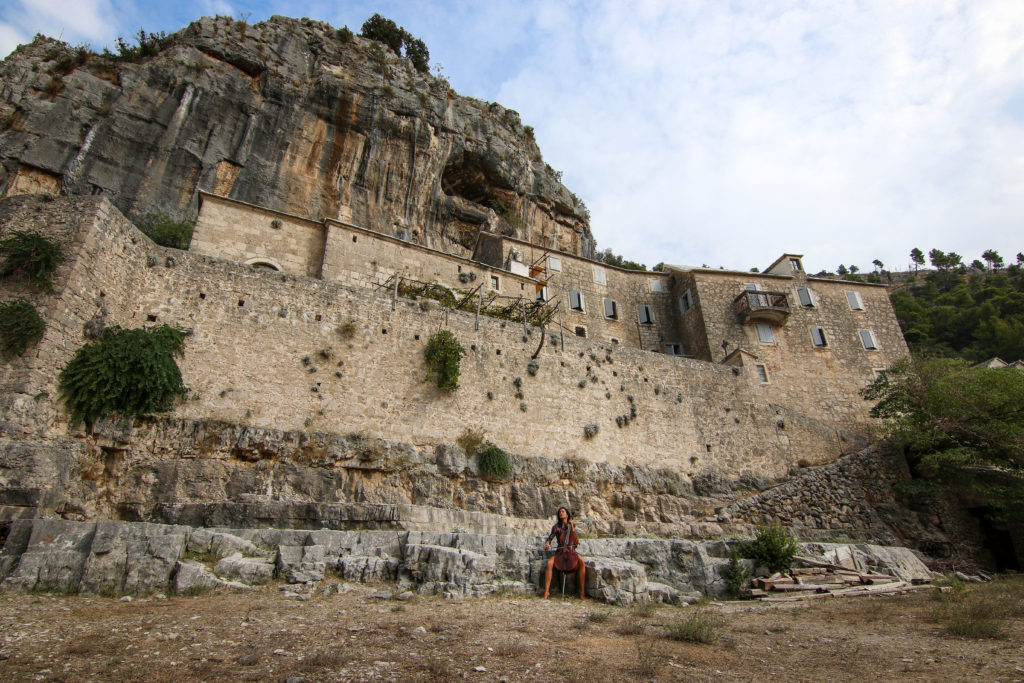
Her latest album is called "Croatian heritage", and her own love for Croatian heritage was probably crucial for accepting the title and role of ‘’ambassador’’.
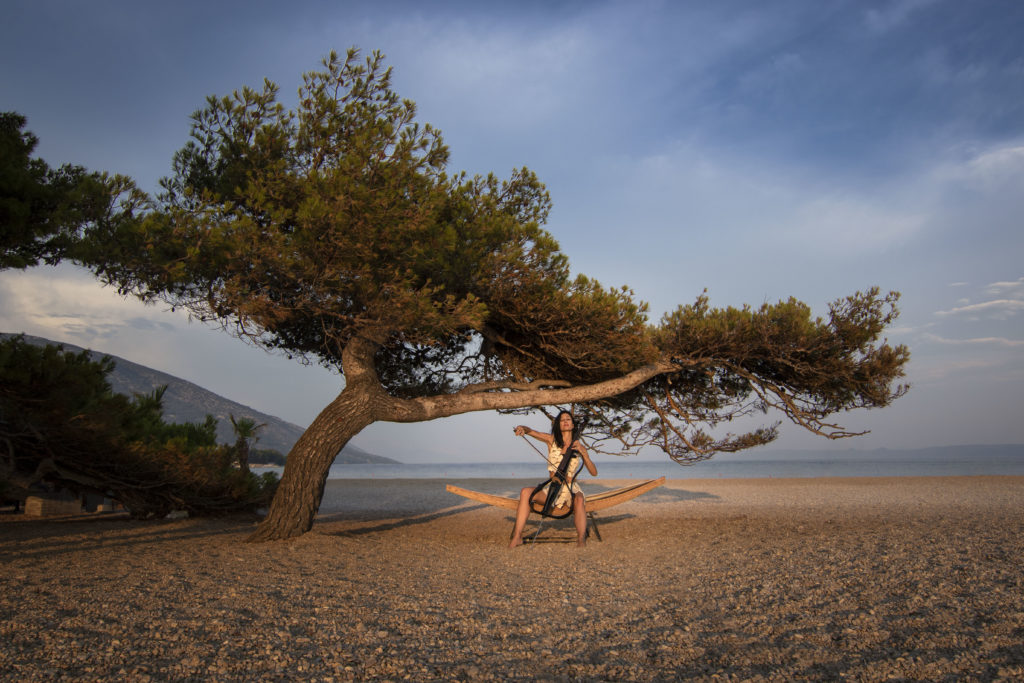
"On my next arrival to Brač, when we filmed a double for the monograph in the mysterious Dragon's Cave, this acquaintance quickly grew into a friendship, and from mutual gatherings and great synergy, the role of an ‘’ambassador’’ was born. Somehow it happened by itself. There are few people who care about their heritage with so much love, energy and knowledge and I’m proud to be a part of this story. That’s why I listened to my heart and gave the Foundation my white cello decorated with Swarovski crystals. I’m happy to have been given the opportunity to give a part of myself to an island that has become a part of me. Let it stay on Brač as a sign of support for these fantastic people and as a memory of a wonderful collaboration. ”
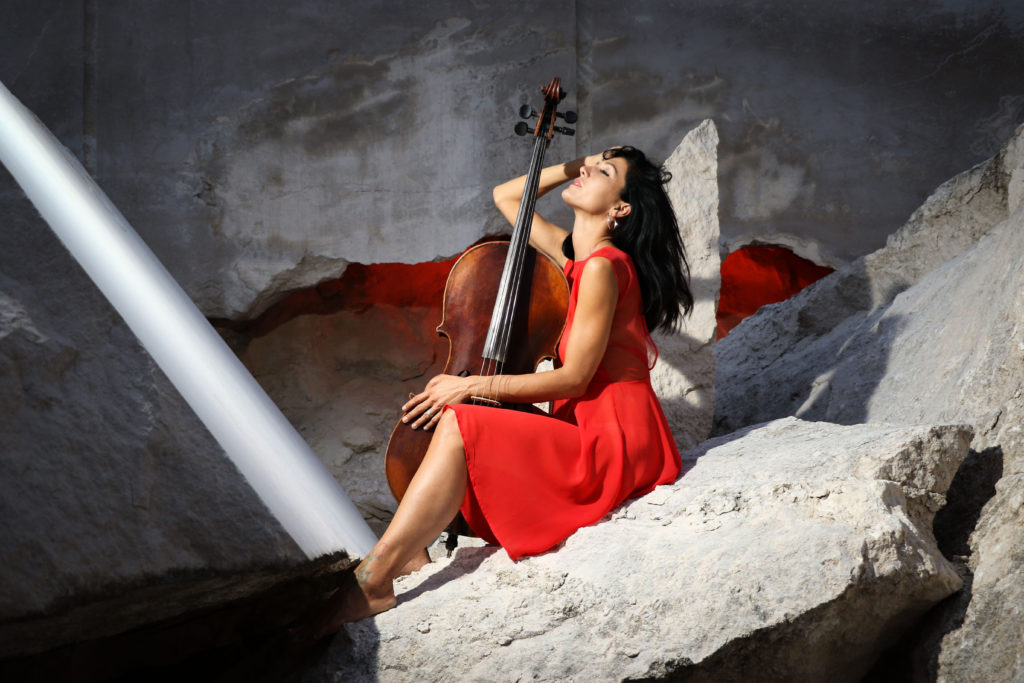
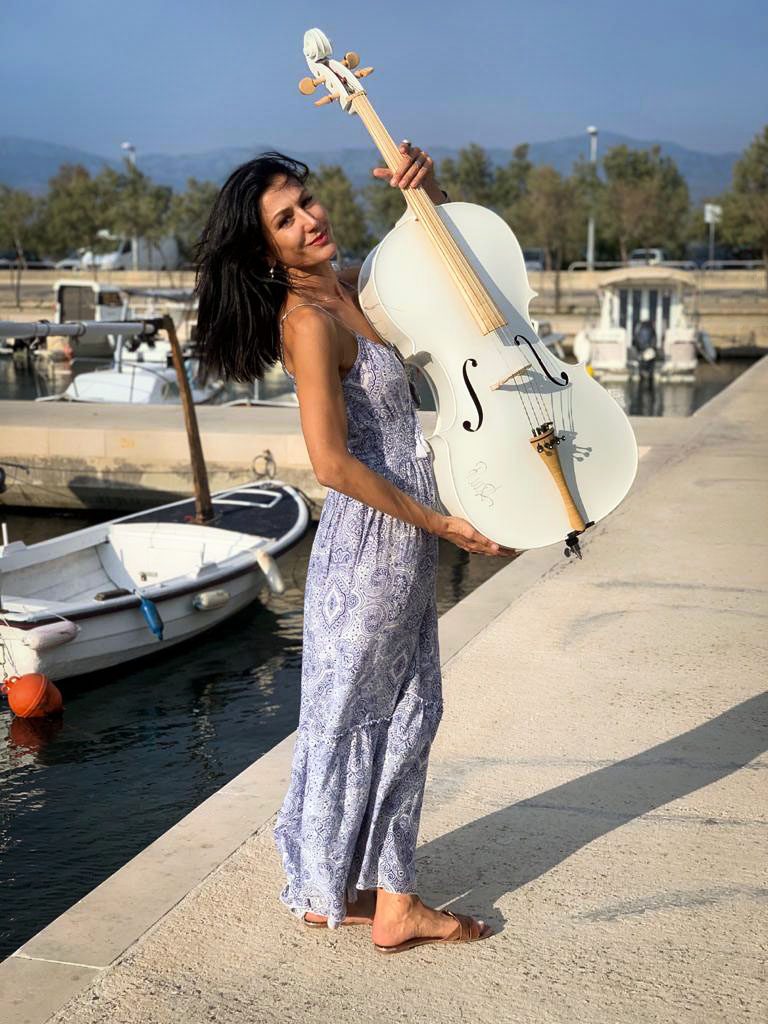
During the month of September, a report on the Brač stone was filmed for the German television Arte TV, and Ana Rucner used every free moment to play and take photos in attractive island locations.
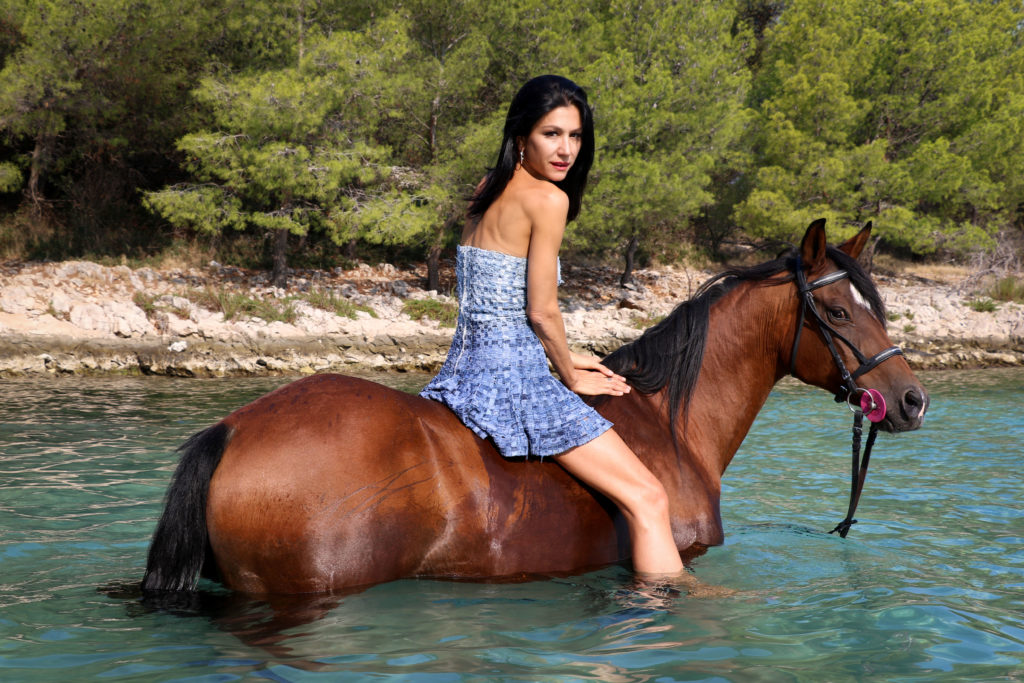
”I enjoyed every second of wandering around Brač with my cello. Playing in the Blaca Hermitage, the quarries, the Basilica of St. Lovre, under the starry sky of Lovrećina beach, as well as going in the sea with a horse, were special experiences. Although these were performances in front of only a few friends, I had the feeling that I was playing in crowded concert halls. I wore jewellery and fashion creations made by Brač designer Ida Stipčić Jakšić, a dress made of stone and dresses made of sea pebbles and jeans.
I’d like to give a special thank you to Mr. Markito Marinković for the household, young designer Anja Bolčević for the creation for the Dragon's Cave, our guide Zoran Kojdić for the historical stories, Kristijan Mutarello for the chair with the motifs of the Dragon's Cave and Bruno Miličko, a several-time Croatian champion in the super extreme class, who, with his Pinzgauer took us over some of the most demanding terrain. The first photo was taken next to the sculpture of an Angel with one wing by the academic sculptor Lovro Jakšić, and in response to the question "where is the other wing", the last photo was taken in a quarry where I have a stone wing. This completes my story from Brač this year.
The experience of the island from a completely different angle and the view from the perspective of a man who knows it very well, have completely changed my previous image of this, the largest Dalmatian island. I can't wait for my first free moment, when I will have the opportunity to get off the ferry in Supetar. Now I know that I am not coming to Brač, but entering a magical interspace that is somewhere between the sea and the stars,’’ Ana told us with enthusiasm.
Photo: Robert Barilla
Beach bar and restaurant Mina - An explosion of tastes and pleasure in the Jelsa way!
As soon as we cast our eyes on the name of this sophisticated gastro point, we noticed that Mina was bursting full of charm. If, like us, you are a gastronomist who sticks firmly to their guns when it comes to their palate, this is exactly the feeling that will overwhelm you when visiting this gorgeous in beautiful Jelsa!
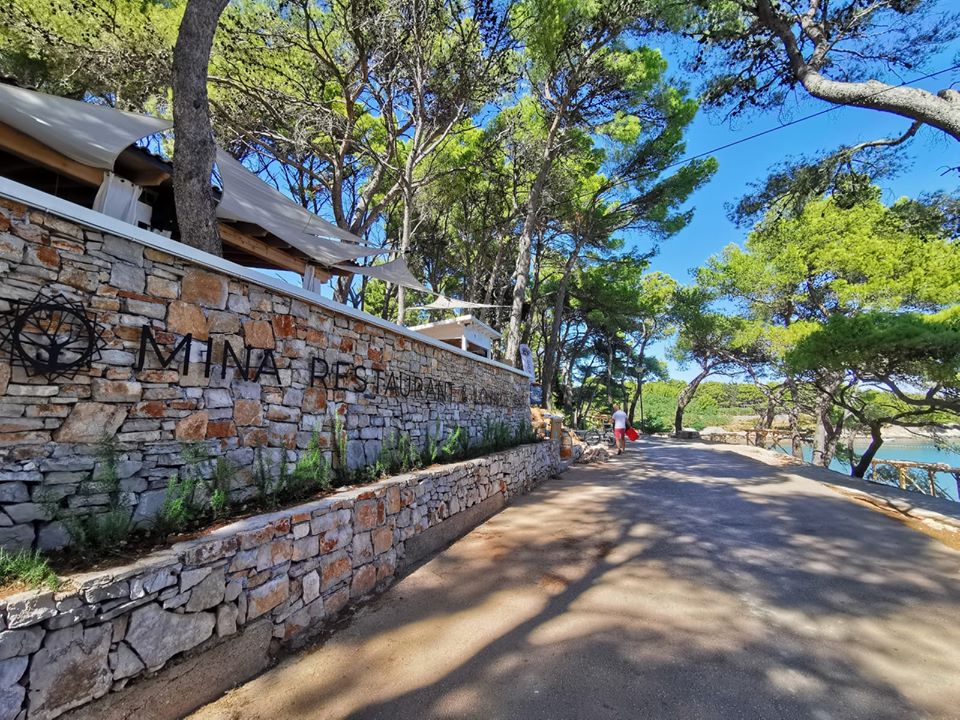
The visual identity of Mina itself just screams relaxation and enjoyment - the spacious interior enriched with natural materials such as stone and wood, and fabrics in soft beige shades, is carefully designed to blend this attractive lounge bar as unobtrusively as possible with an environment that is, in one word - beautiful!
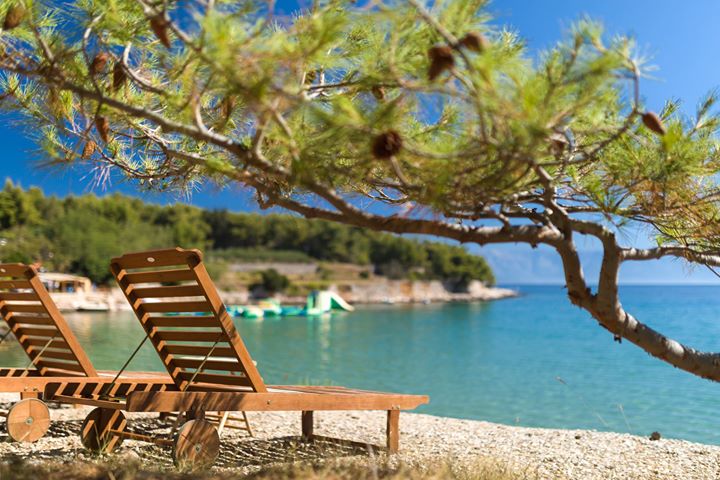
And how else would it even be possible to begin to describe the turquoise blue bay surrounded by fragrant pine forests with a view of the Brač channel and the Makarska Riviera?
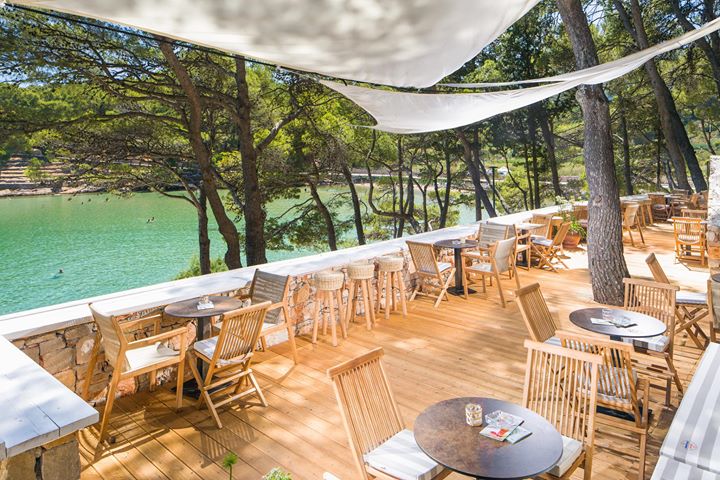
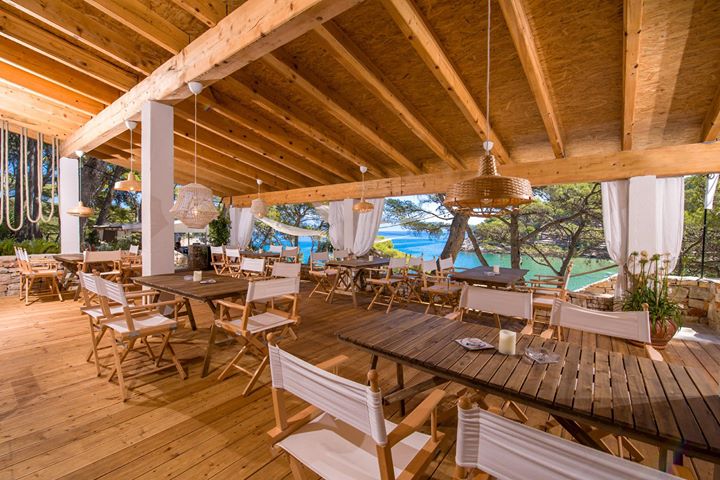
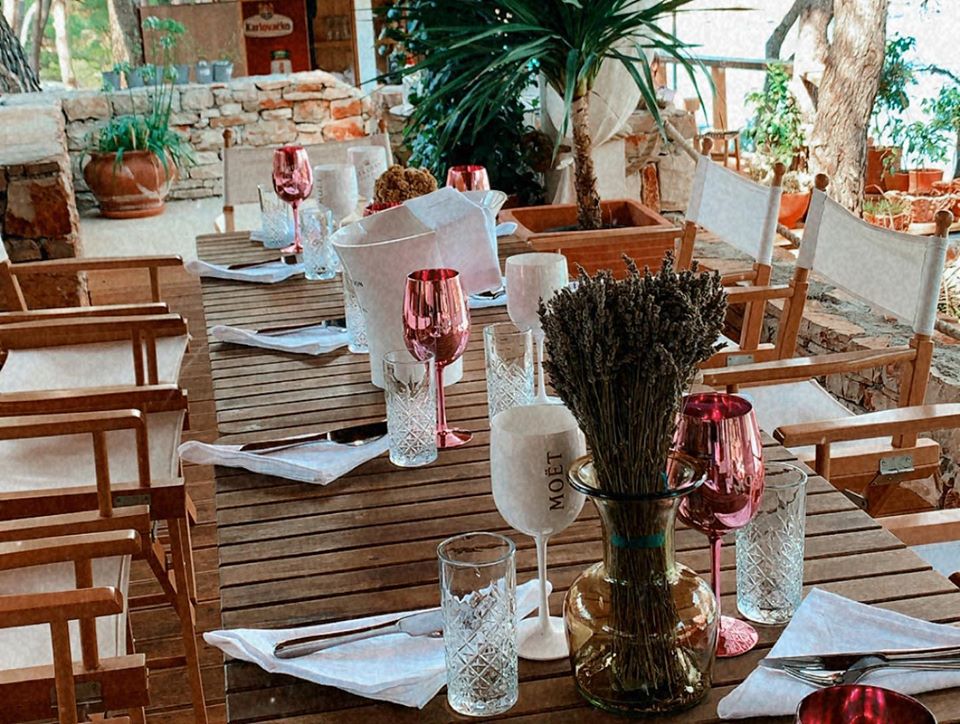
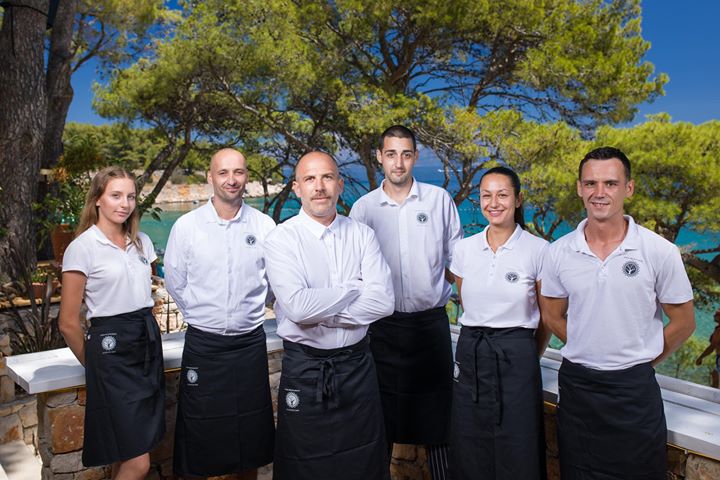
The restaurant is located just above the beach which bears the very same name, which is otherwise the most popular beach in all of Jelsa, located a mere few hundred metres away from the centre. There is also an Aqua Park located nearby.
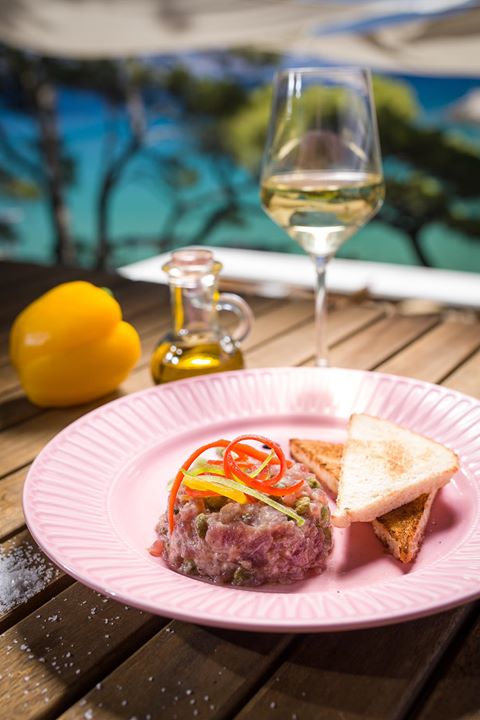
An explosion of taste is the most appropriate expression for what awaits you there, pinned on an alluring gastro map. Whether you want grilled fresh fish spiced with homemade olive oil and Mediterranean aromatic herbs, delicious meat specialties, or some more exotic gastronomic sensations like spring rolls or wok vegetables, here you simply have - everything you might want, so much so that it’s difficult to imagine that Mina might not have something covered.
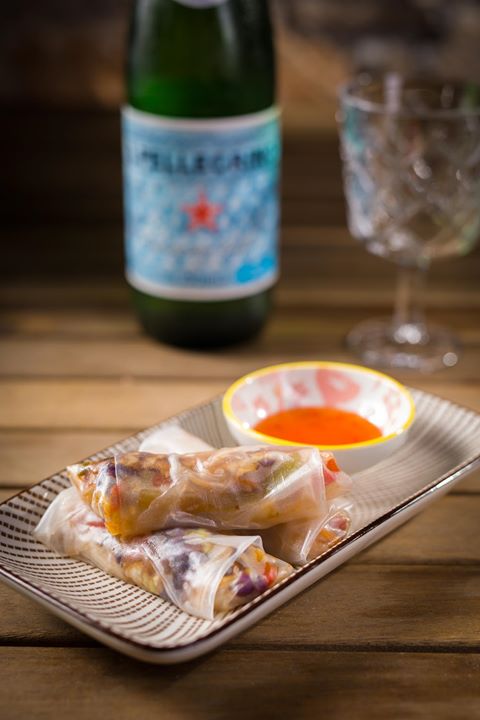
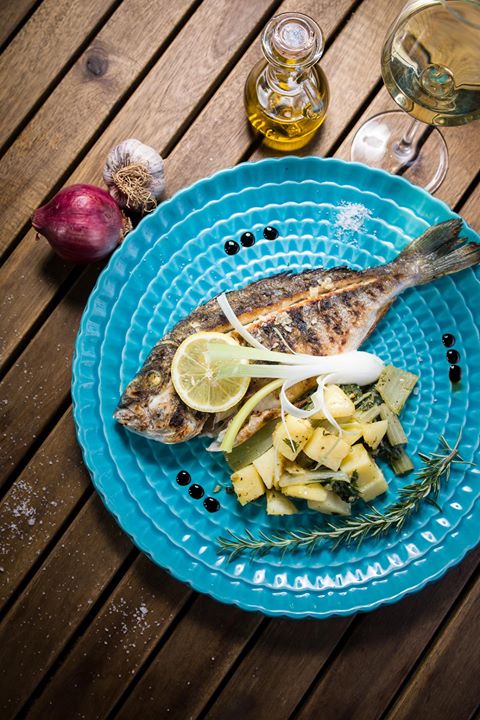
However, if we had to choose, we would recommend grilled gilthead sea bream, Adriatic octopus salad, fresh Adriatic shrimp, mussels and saltwater clams when it comes to the seafood delicacies, and delicious lamb for the avid meat lovers!
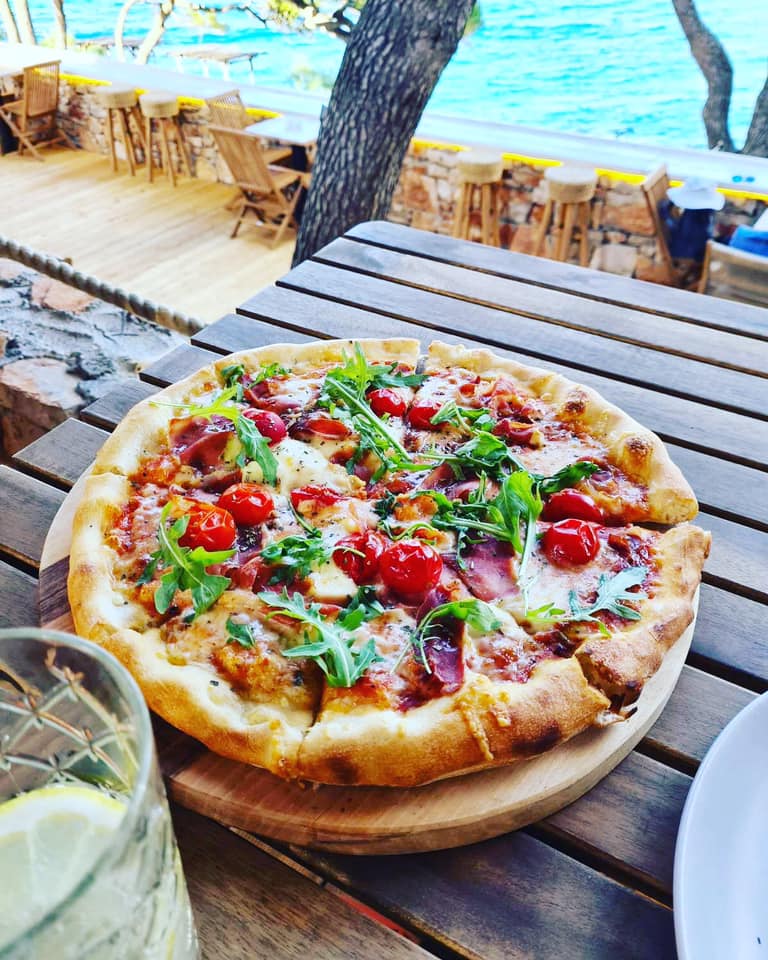
Even a cursory glance at the typically struct Tripadvisor revealed to us that guests, among other things, enjoyed the best pizzas they’d ever eaten, so if you want to go on a gastronomic journey to Italy, try out this favourite dish done in Jelsa’s interpretation of it.
For picky and curious palates, we also recommend the divine spaghetti aglio e olio, which enjoys an almost cult status in its homeland, and the friendly staff who know that food and wine go straight to the soul, will help you pair each of these wonderful dishes with a rich wine list and adequate drinks.
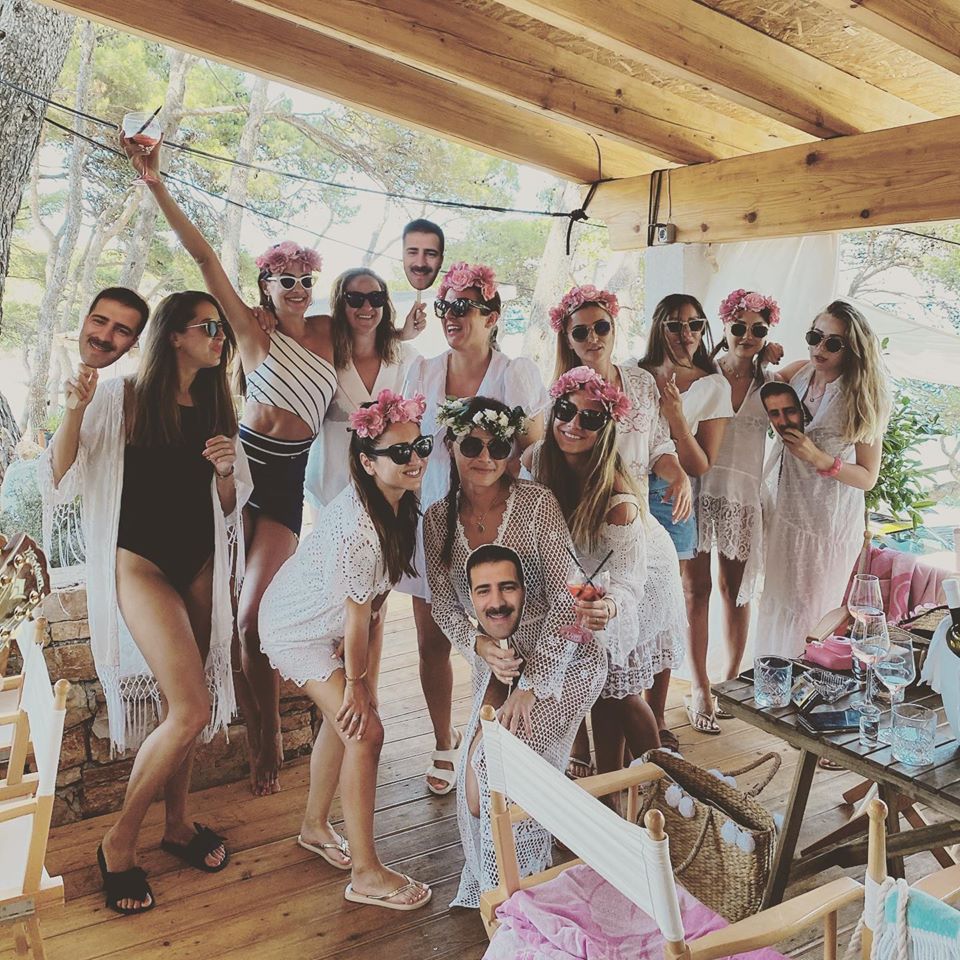
Don’t forget the cocktails! A delicious rhapsody of dishes is accompanied by an equally attractive drink menu. Is there anything better than sunbathing on comfortable loungers while relaxing with some of the masterfully prepared cocktails on offer?
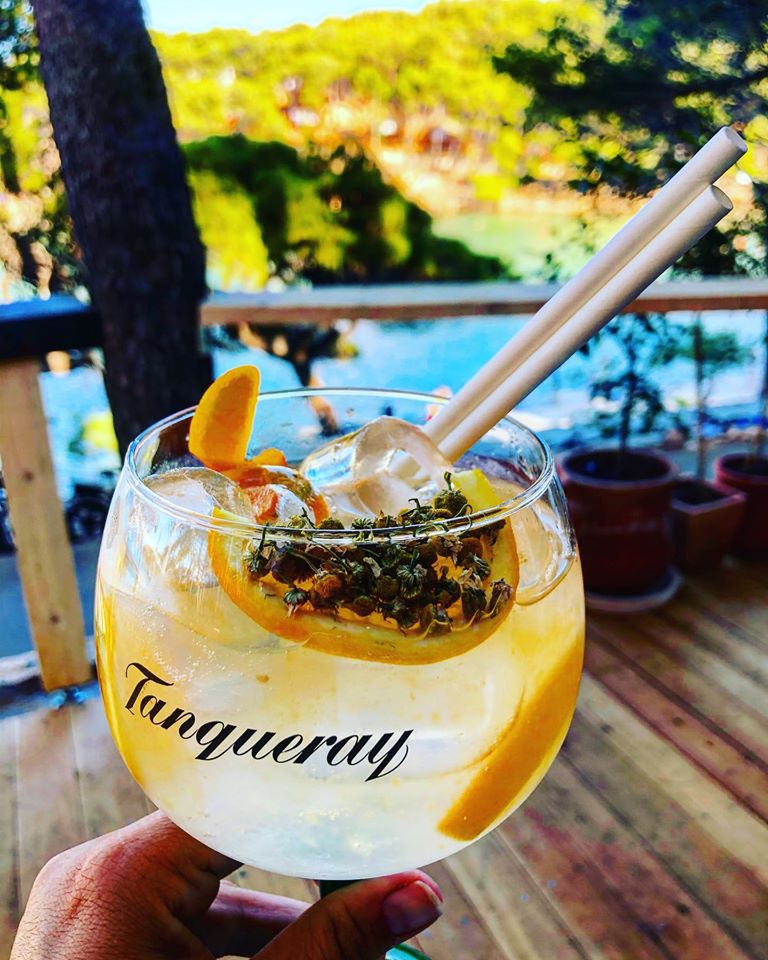
We believe that you will want to immortalise this moment which is of true ‘’Bond-style’’ aesthetics with an beautiful photo posted on social media, and for a complete experience, we recommend ordering a Martini done in the way the world’s most famous secret agent likes it best - shaken, not stirred, op.a. ).
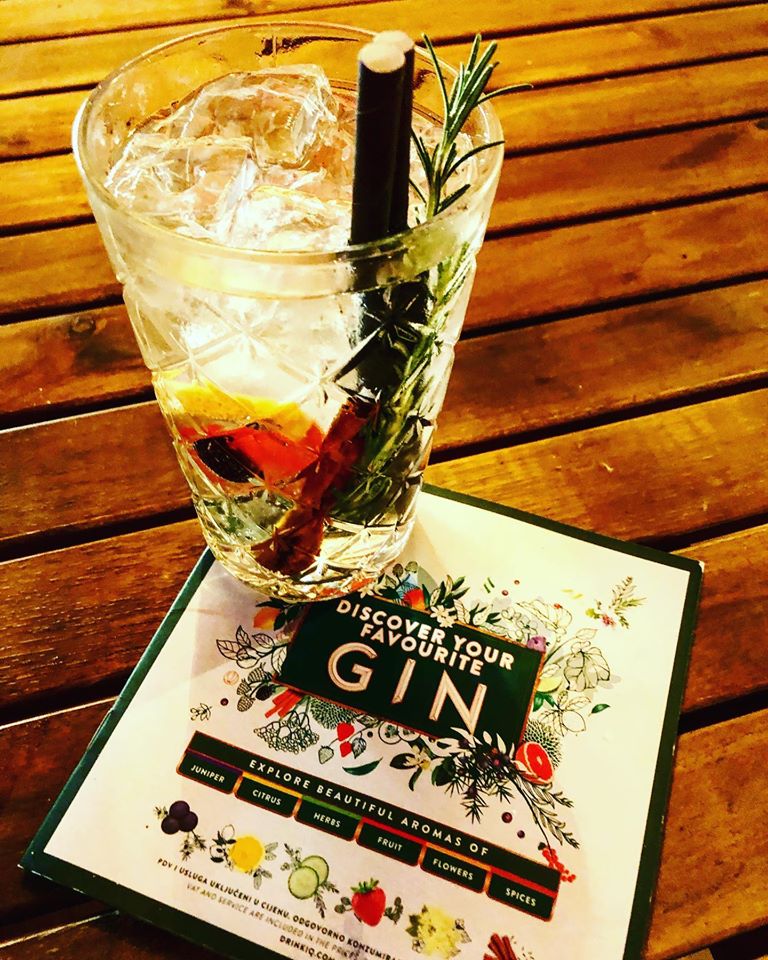
Whether or not you decide to taste other intoxicating delicacies - from gin with citrus, floral and fruity aromas, to Mai Tai and Long Island Ice Tea for the slightly braver among you, or maybe a Cosmopolitan - the favouurite drink of the famous columnist from the series "Sex and the City", Carrie Bradshaw, you can be sure of one thing - the explosion of taste and pleasure hidden behind the name Mina, will shake up everything you knew about food and drink so far - and it will do so in the best possible way!
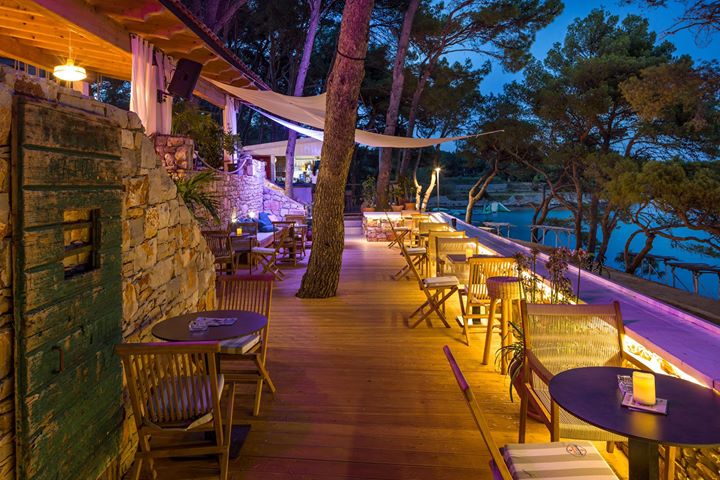
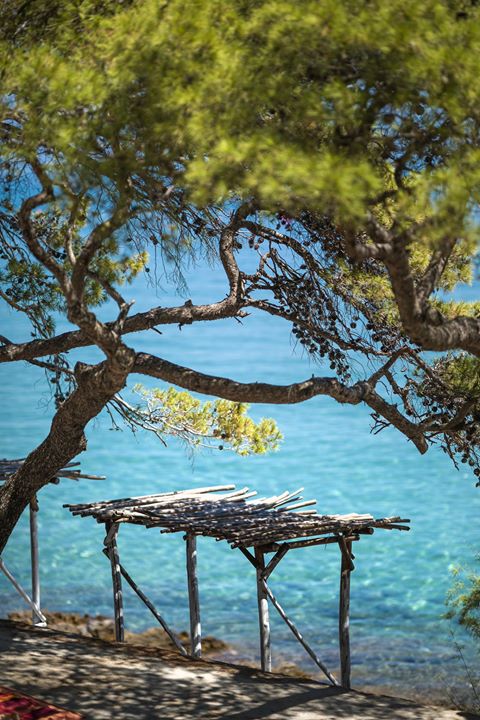
More:

RESTAURANT & LOUNGE BAR MINA BEACH JELSA
Jelsa 892A, 21465 Jelsa
www.restaurant-mina.com
Hot Spots summer destination! Island Pag - feel the Magic of the Moon Island
Island of Pag is an unmissable global outdoor destination, as well as an international film and marketing attraction.
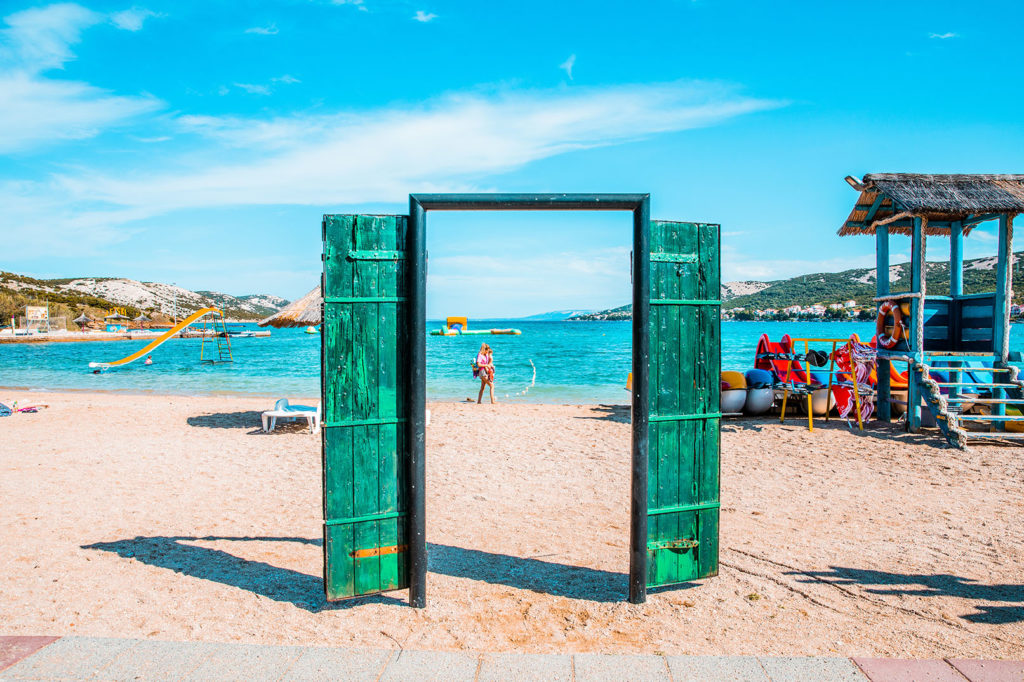
No one has original folk costumes like those Pag has. No woman wears a starched canvas in the shape of a triangle on her head, which frames the beautiful faces of the women and girls from Pag, these canvases are called blankets on the island of Pag and in Novalja, known as the Moon Island.
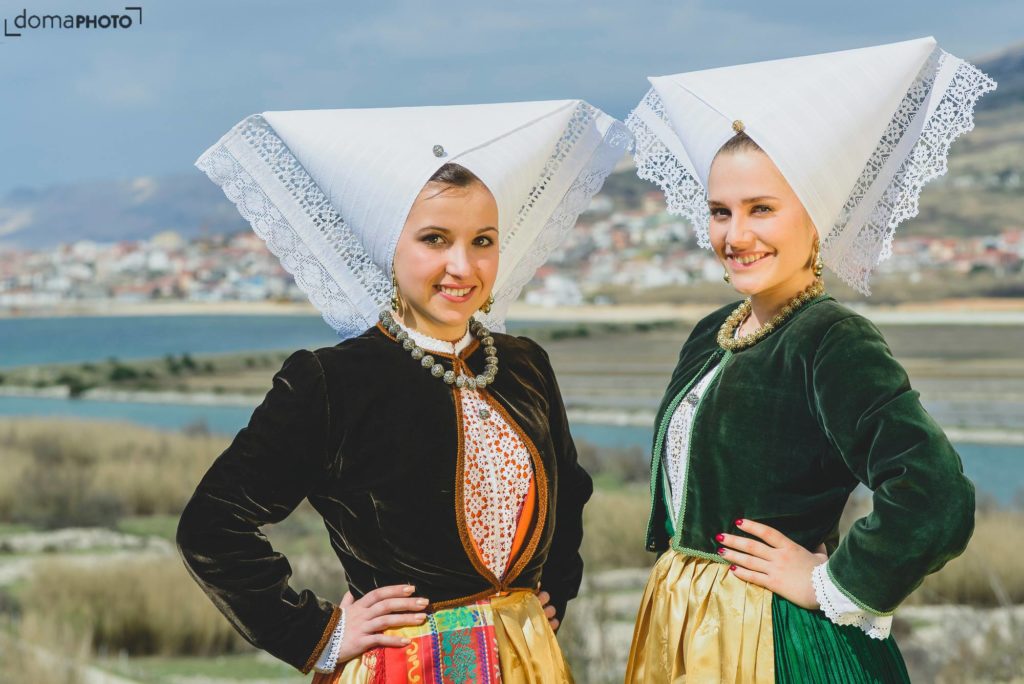
The island is decorated with one of the protected symbols of Croatian heritage, traditional, beautiful Pag lace, recognisable across the world as one of the most beautiful handicrafts made by the hands of women.

This summer, Pag is once again the number one destination, not only in Croatia but also globally.
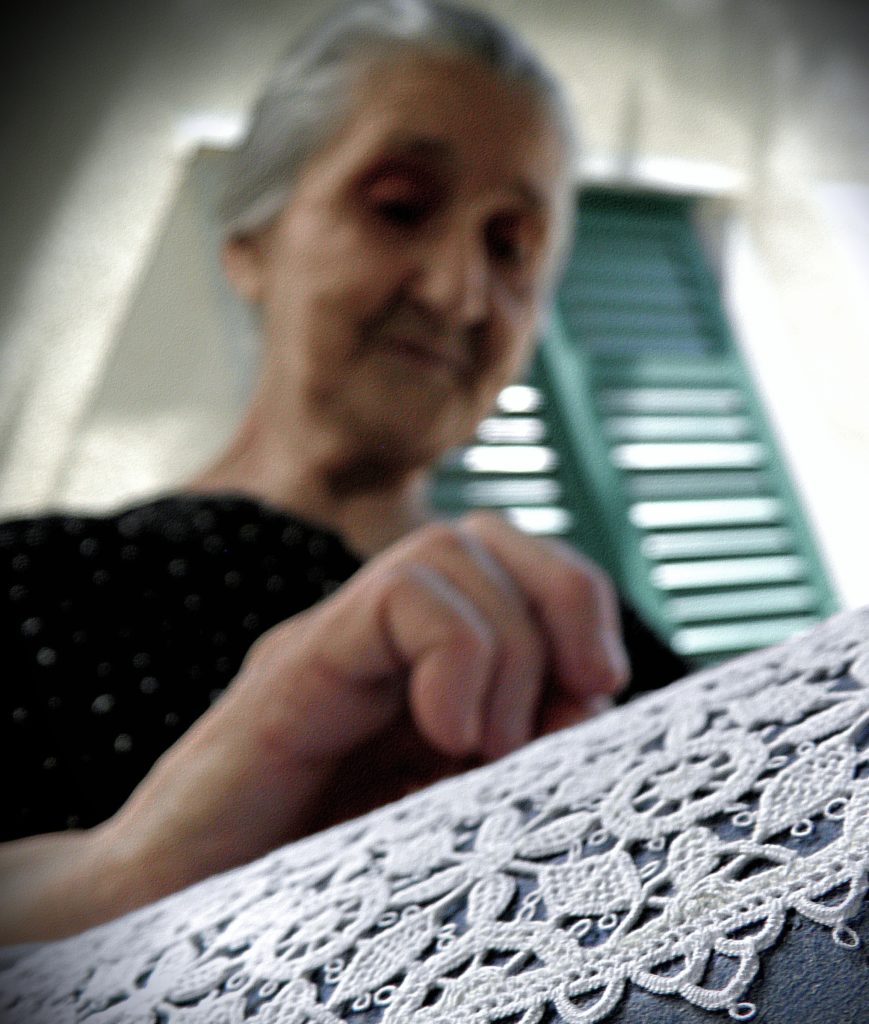
The story cleverly developed over the years has led to the birth of Pag becoming an IN location, which must be included in every travel planner.
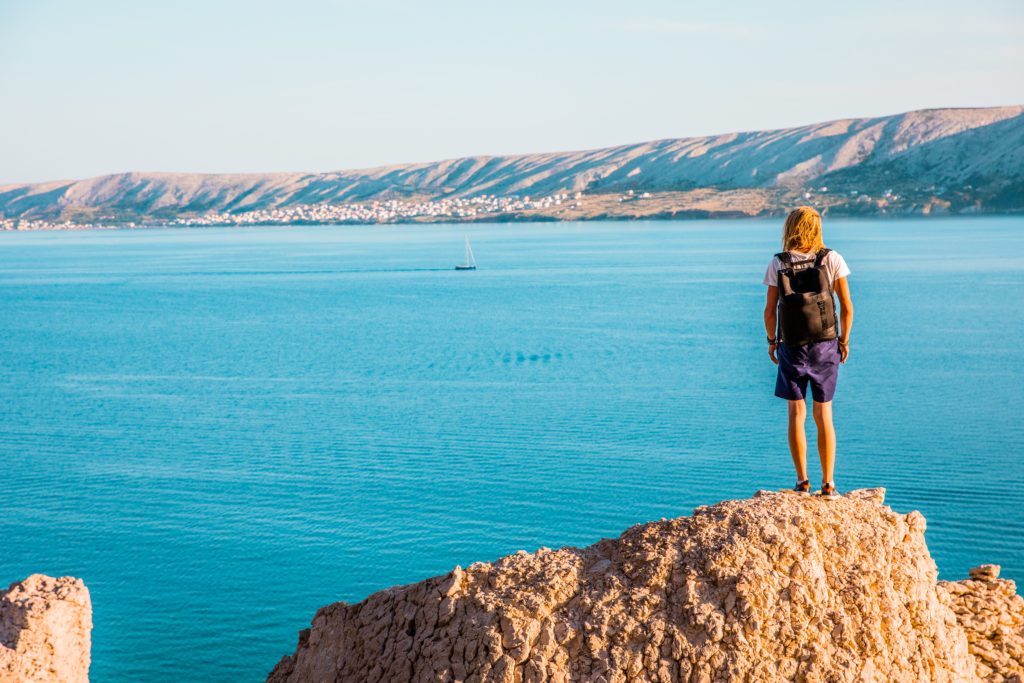
Because Pag has long been not just one of the top destinations for incredible entertainment, and by gradually building the story, this island has become an unmissable global outdoor destination, as well as an international film and marketing attraction.
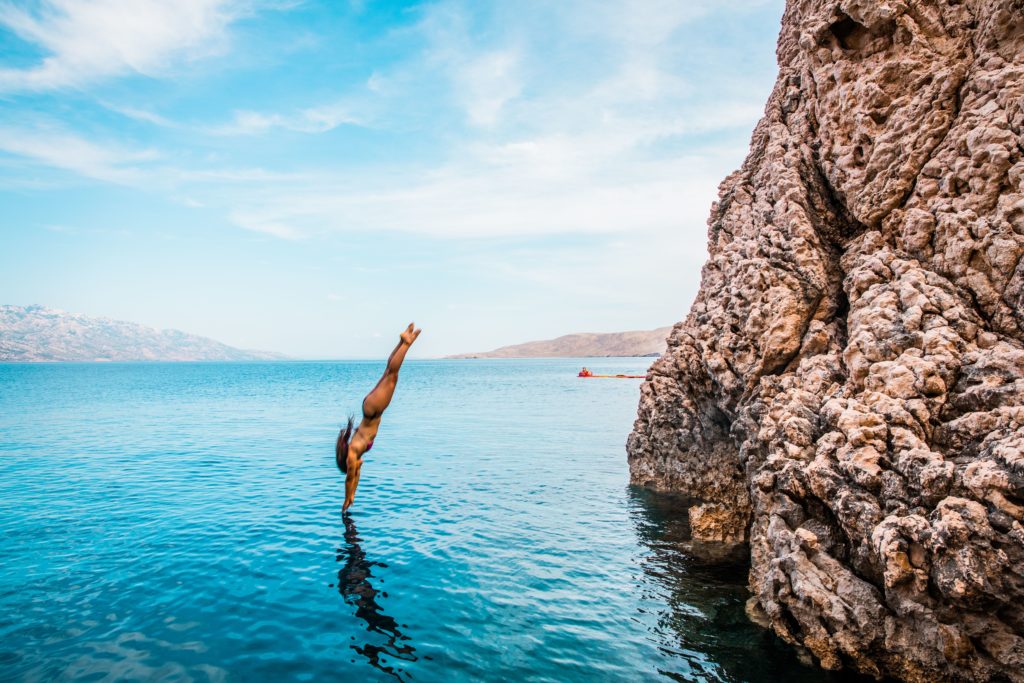
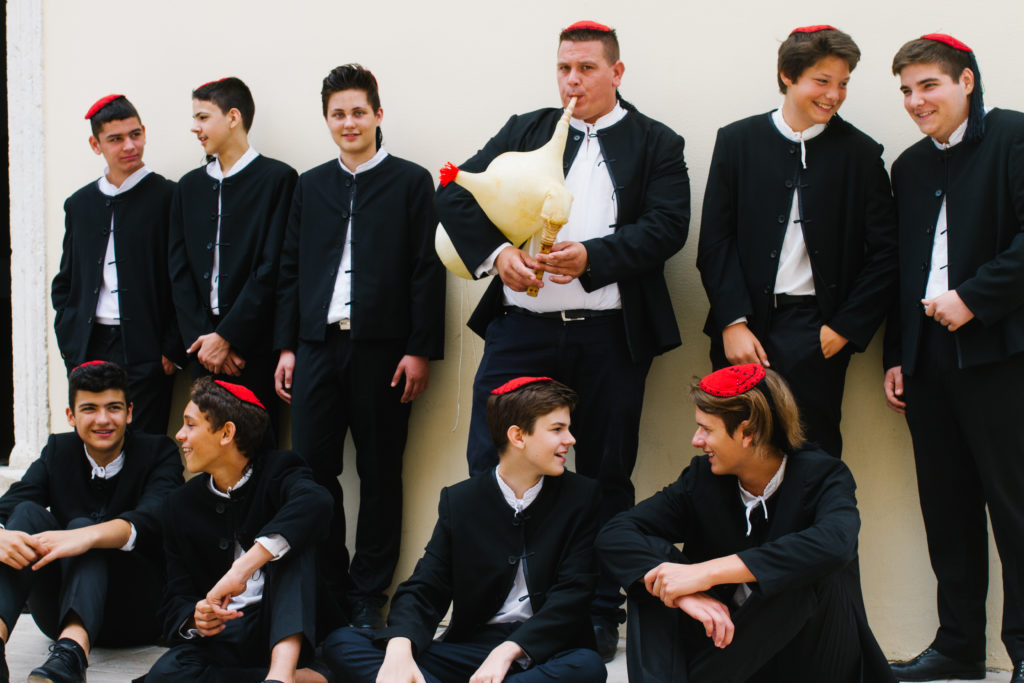
And more than anything, this has been presented by the latest campaign that brought together a few wise minds from the island, reinforced by a top professional, well-established photographer Jakov Baričić.

Such a coming together of minds could bring about absolutely nothing but the very best, a story about the island of Pag that brought everything that makes you have to visit this island as soon as possible up to the surface.
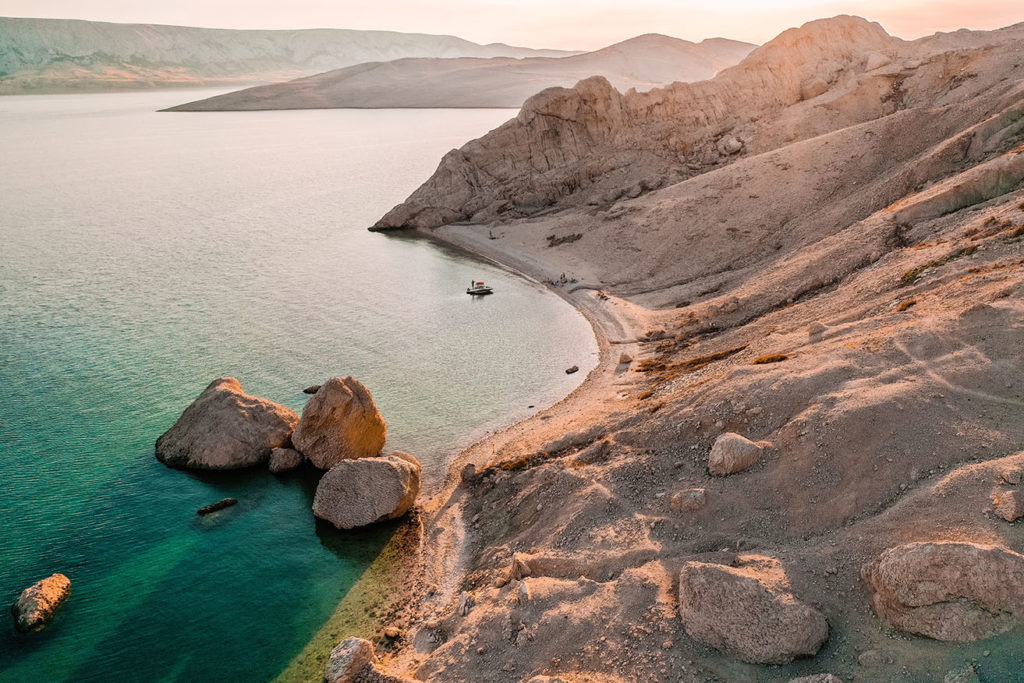
And Pag has been enrolled as a must-see destination from the travel plans for many Croatian and foreigner travellers.


Because only here can one take fascinating street style and nature selfies and photos, and much like the trendsetters who have already done so, capture the absolute best that the island of Pag has to offer.
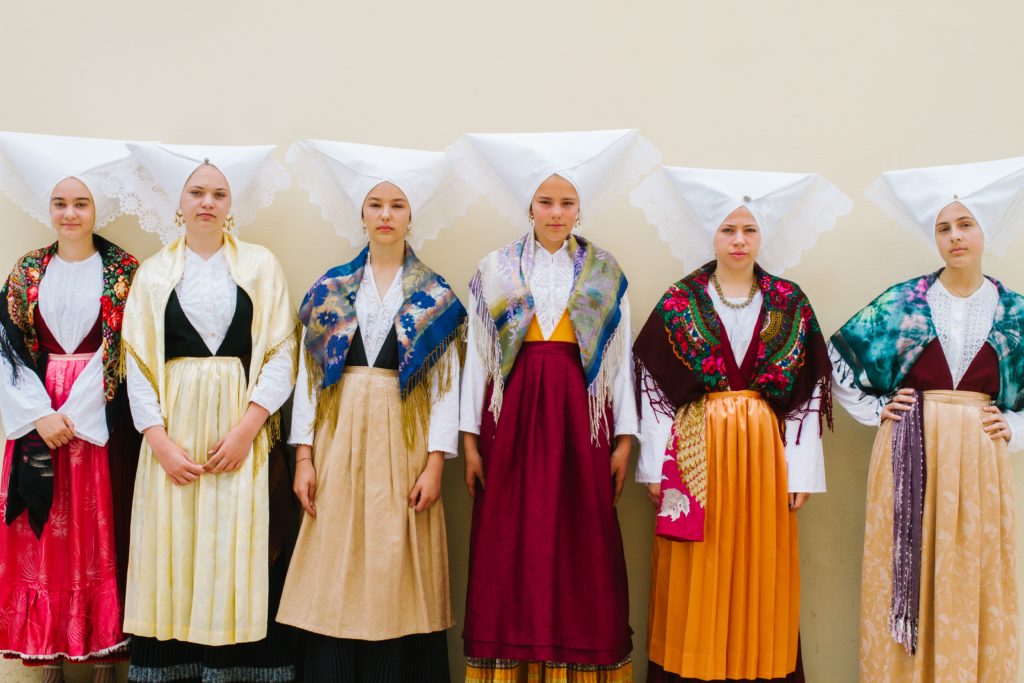
Now, what does one choose in that sheer abundance of options? Moon-like landscapes, beautiful bays, amazing scenes like from another planet? The magical yet modest convent of the Benedictine nuns, the alleyways, the beaches with the crystal clear sea surrounded by a lunar landscape and bare rocks?
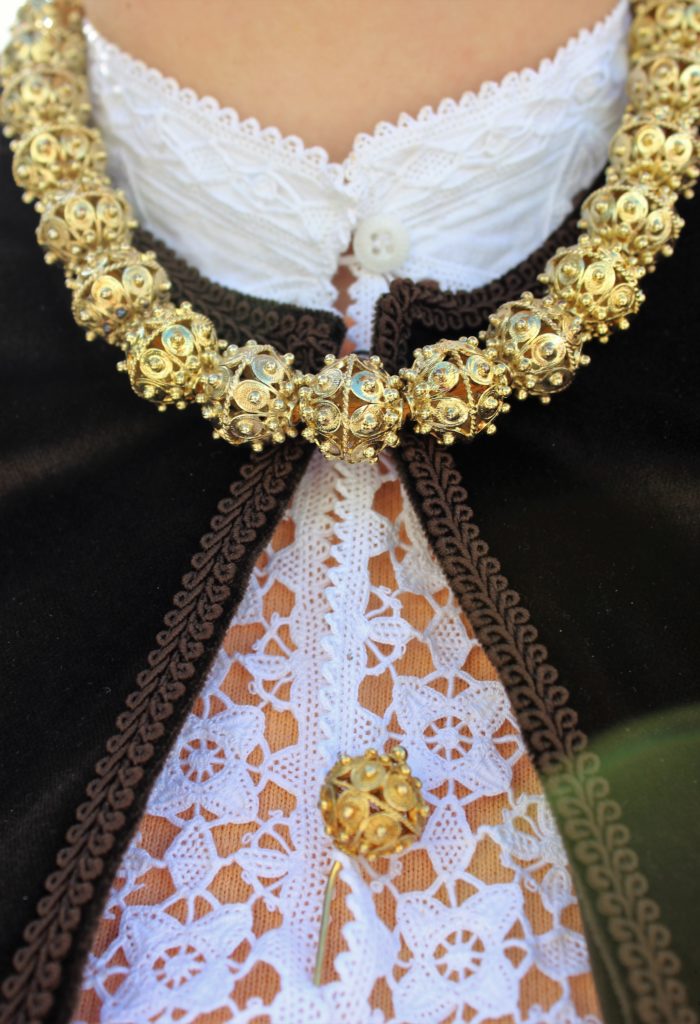
Maybe some of Pag’s gastronomic delicacies? Or the incredible beauty of Pag’s women and girls wearing their original costumes, which are kept in families like the crown jewels and passed down from generation to generation?
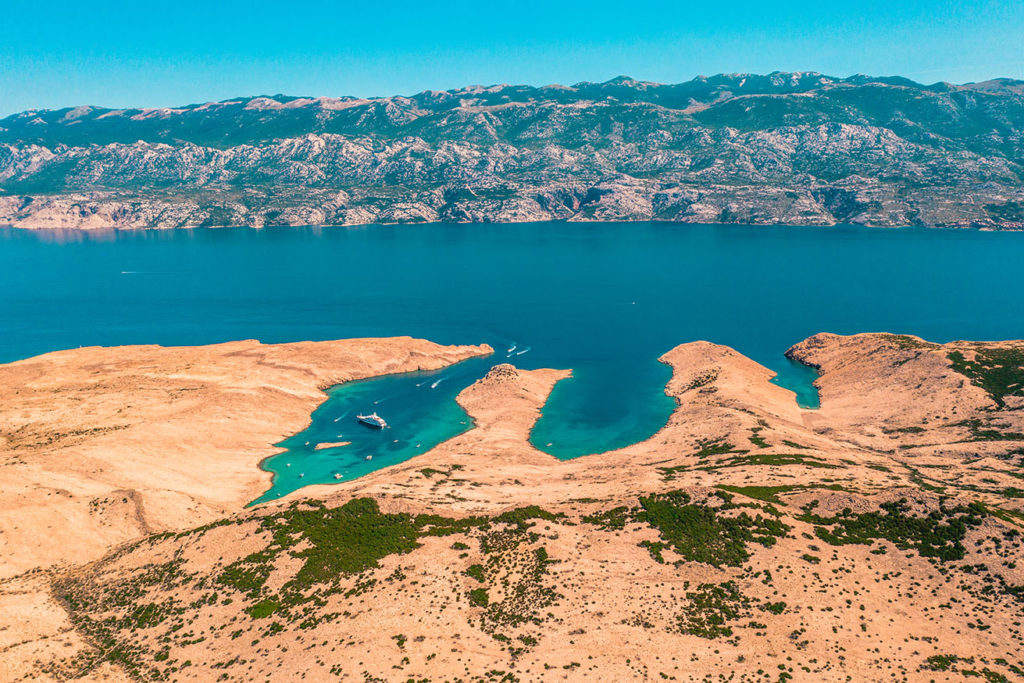
This is exactly what Jakov Baričić showcased about Pag in his works, weaving fashion, tradition and amazing photography into the heart of the story.
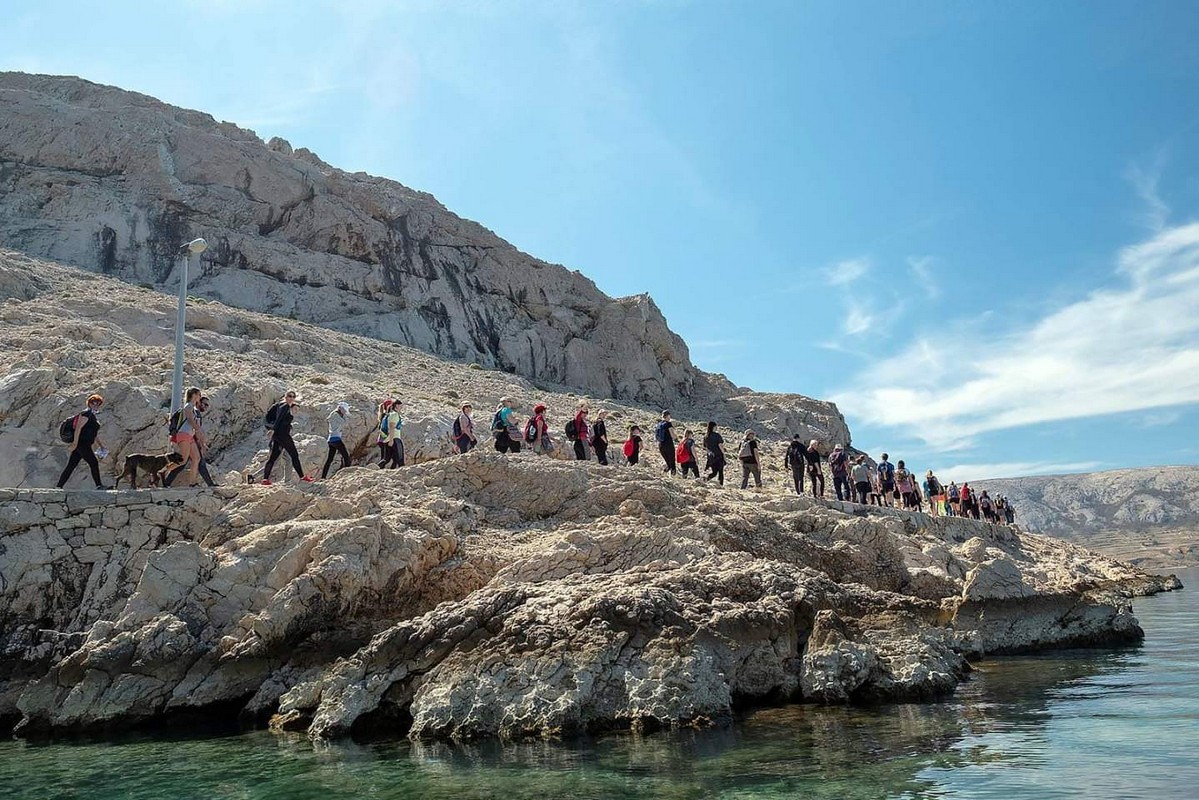
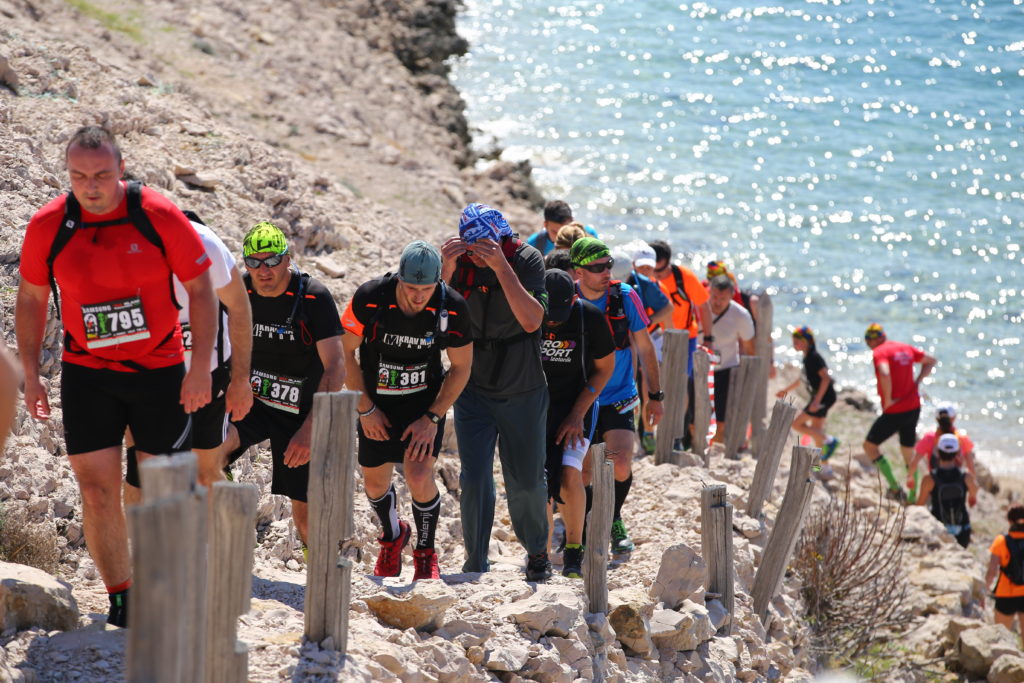
The island of Pag has definitely been the most desirable Croatian outdoor destination for a long time now, which, on the basis of having earned such a title, has been providing fascinating natural attractions to its visitors.
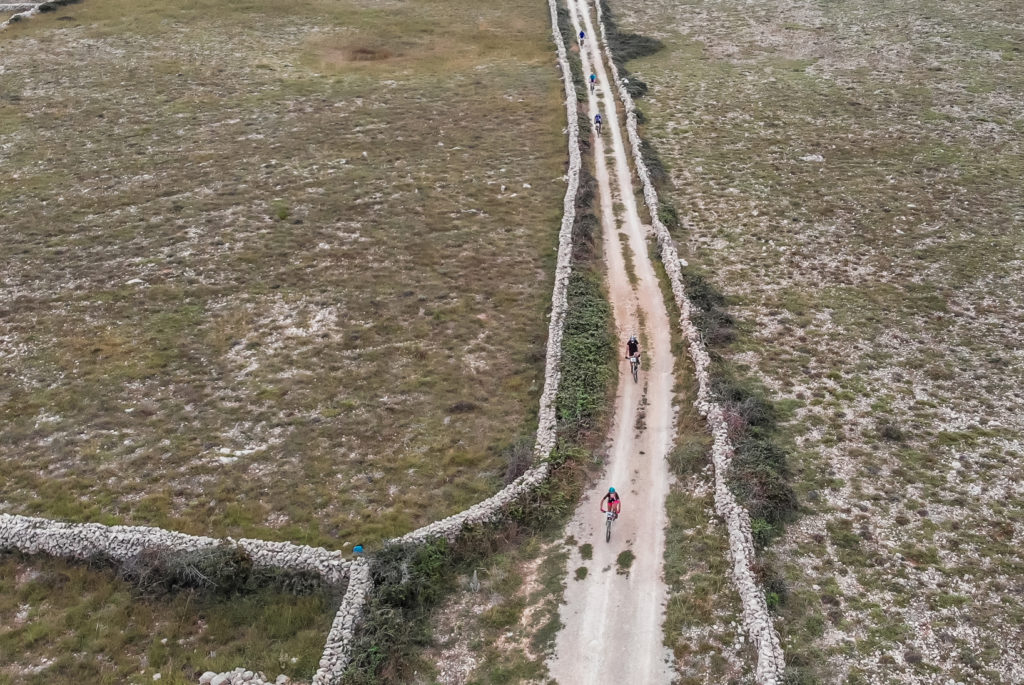
. The most significant thing is the incredible landscapes which resemble the moon itself, extremely rare natural scenery that serves as the background of the trails for the most important outdoor event on the island of Pag - the Life on Mars race.
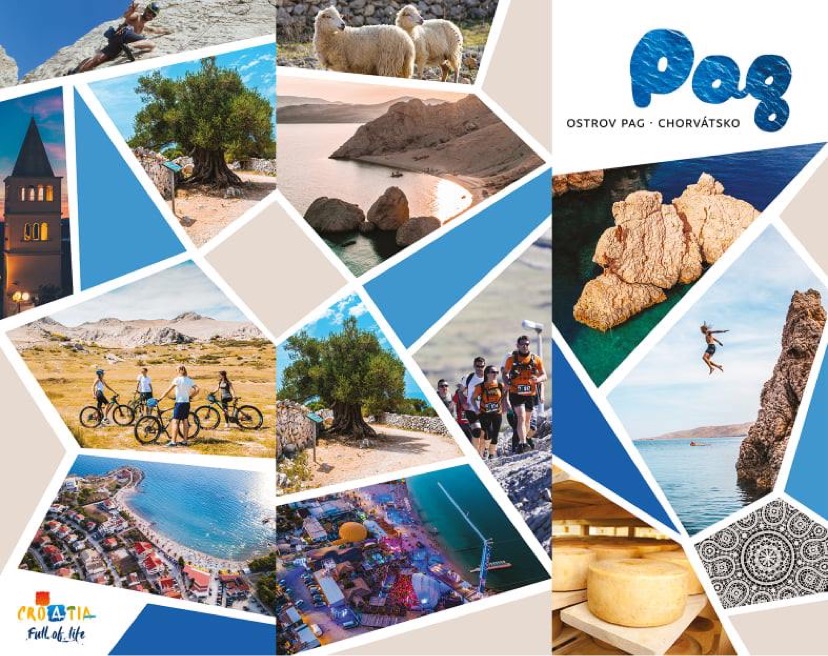
They were actually the beginning of an integrated programme of outdoor activities that positioned the island globally as a top destination for lovers of active tourism. The above is especially true for cycling tourism, and for trails, running and hiking tourism. Aware of the importance of the potential that Pag offers due to its natural features, the the island's united forces have put together a special development plan with phases that will be built on in detail and gradually expanded over this year and the next three years. The project ‘’One island and one common vision’’ was created, with the aim of uniting and branding the island of Pag as a destination for outdoor tourism.
Such natural features didn’t go unnoticed even by film moguls who discovered the perfect scenery for some of the shots from their bestsellers in a surreal backdrop. Are you the type who likes to visit the locations where the famous films were shot?
If so, there are some great opportunities for precisely that on Pag, for example; the shot on the beaches of Novalja, which the director of photography Danny Moder, the husband of ‘’Pretty Woman’’ actress Julia Roberts, chose to shoot the film ‘’Ibiza’’.

On Zrće beach, he also shot with the famous actor from the HBO series Game of Thrones, Richard Madden, who played Robb Stark in the first three seasons. The views of Pag also delighted Oscar winner Gabriel Salvatores, who included them in his new road movie ‘’Strangers in Paradise’’.Pag was the ideal backdrop for the filming of the world-famous series The Terror in fantastic locations such as the rough, rugged Paska vrata, produced by Oscar-winning director and producer - the genius Ridley Scott, who is best known for films such as Thelma & Louise, Alien, Blade Runner, Black Hawk Down and Gladiator, for which he won an Oscar and a Golden Globe for the best picture.
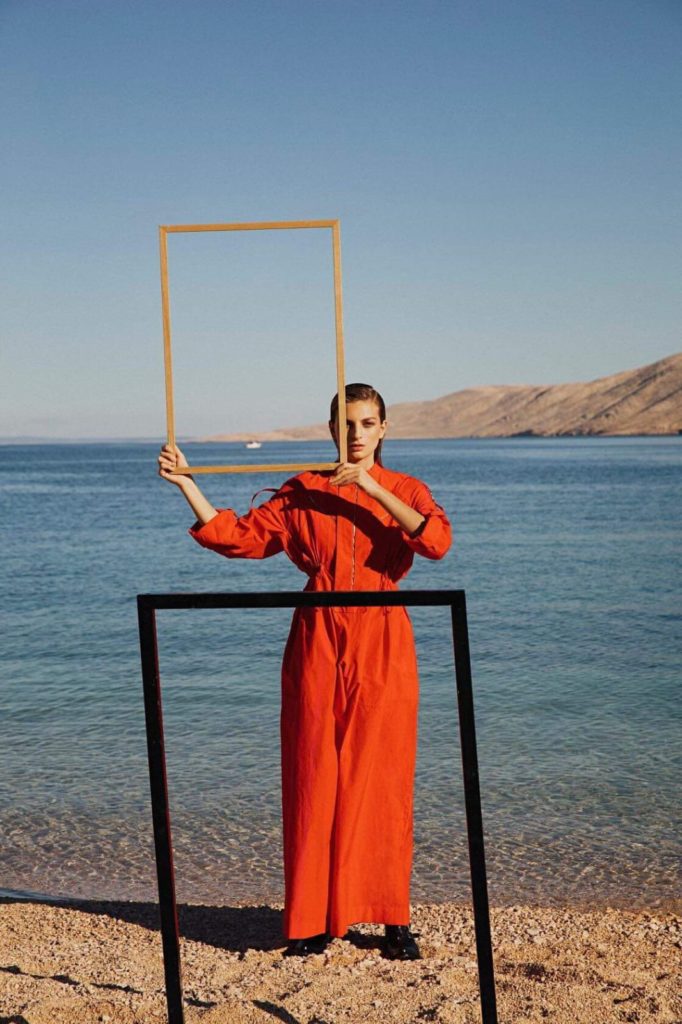
When it comes to the small screen, other jewels from Pag have caught the eyes of the creators of various advertising campaigns, and as a result we now have fantastic global campaigns for the most famous fashion magazine in the world - Vogue. And we all know that where Vogue goes, everyone goes, especially since the fashion giant chose Novalja and the island of Pag for their third fashion editorial.

After the Ukrainian and Latin American Vogue, Pag’s alluring ambiance was discovered by the Portuguese edition, and behind them stands the young photographer Jakov Baričić, a well-known name in the Croatian and global fashion industry.

Why Pag, why the beaches Ručica and Beriknica in Metajna? Precisely because, as the director of the Tourist Board of the City of Novalja, Marina Šćiran Rizner, reveals, like other beaches on the island of Pag, it is among the most stunning in all of Croatia.
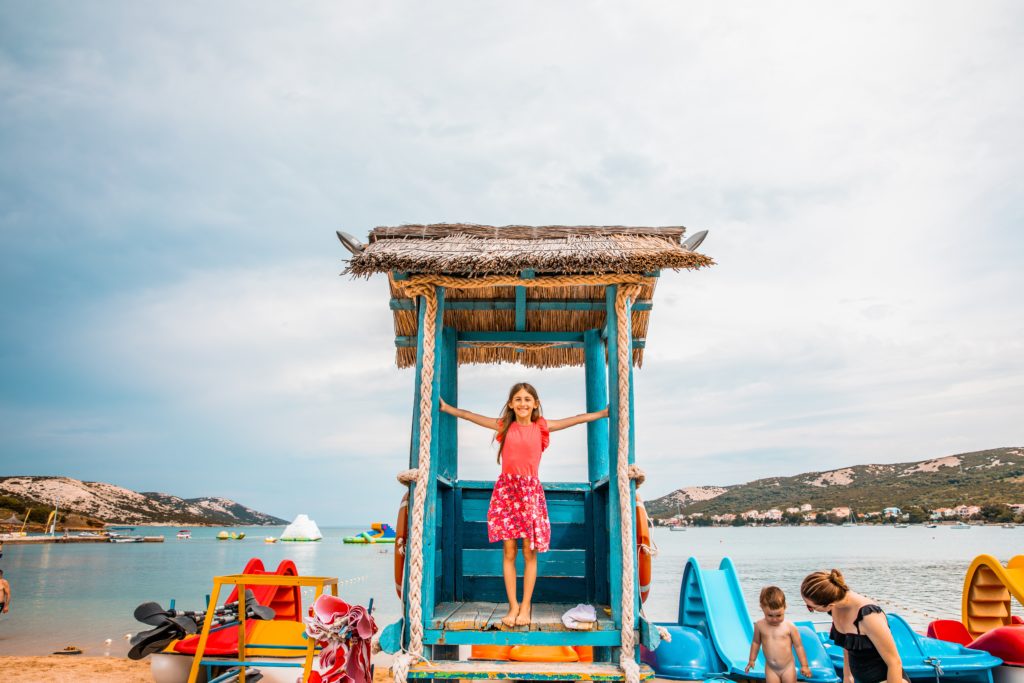
And what Vogue chooses is noticed by other magazines such as Elle, Harper’s Bazaar and others which have included the island of Pag, its beaches and the views from the Lun olive groves in their advertising catalogues.
Then there are the numerous campaigns, for example for famous brands such as Rimac’s cars, BMW, Porsche, Mercedes, Honda, limited American Triumph motorcycles, and Japan’s Canon... They took Pag under their wing, and in that sense they took Pag across the whole world. And given the fact that Pag has gone out into the world, here is another good reason for the world to come to Pag, to taste, feel, smell and enjoy the best that this island has to offer. The island boasts many fantastic locations and five destinations - Novalja, Pag, Kolan, Stara Novalja, Povljana. Five pearls of the island that are part of the great strategy to brand the island as one single entity.
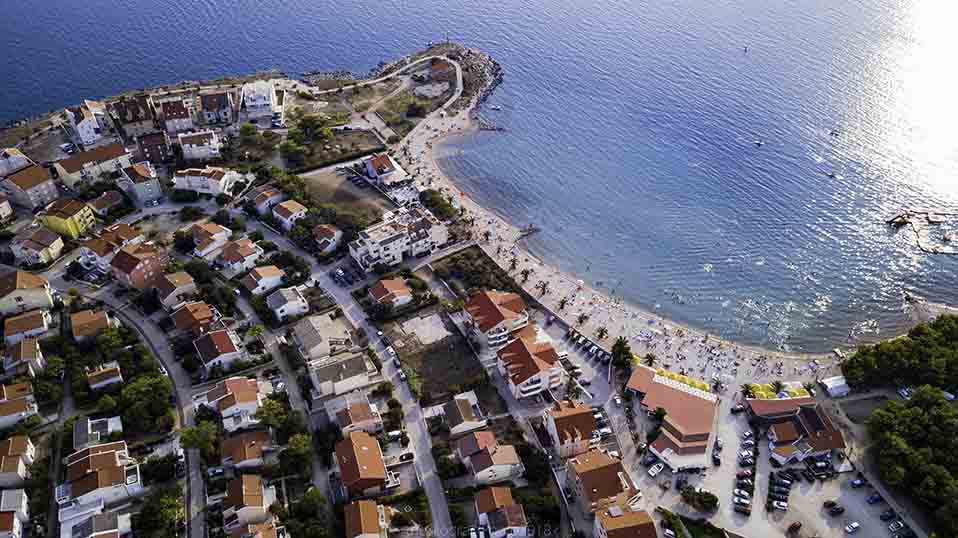
They ‘’performed’’ together at foreign tourism fairs, and together they launched events such as the rowing regatta ‘’Osmerci on Pag’’ and ‘’Pag on the menu’’. This also resulted in the signing of a joint agreement of all the tourist boards of the island of Pag and the branding of the destination through outdoor tourism.
NEW PROMO VIDEO
A joint tourist-oriented work is also coming to market, a film that brought to the forefront some of the island's most important acquisitions. The City of Pag presented itself with its UNESCO-protected Pag lace, a beautiful view of the old town reminiscent of Dubrovnik, folk costumes, dances from Pag, and gastronomic attractions, to the people of the Benedictine monastery of St. Margaret.
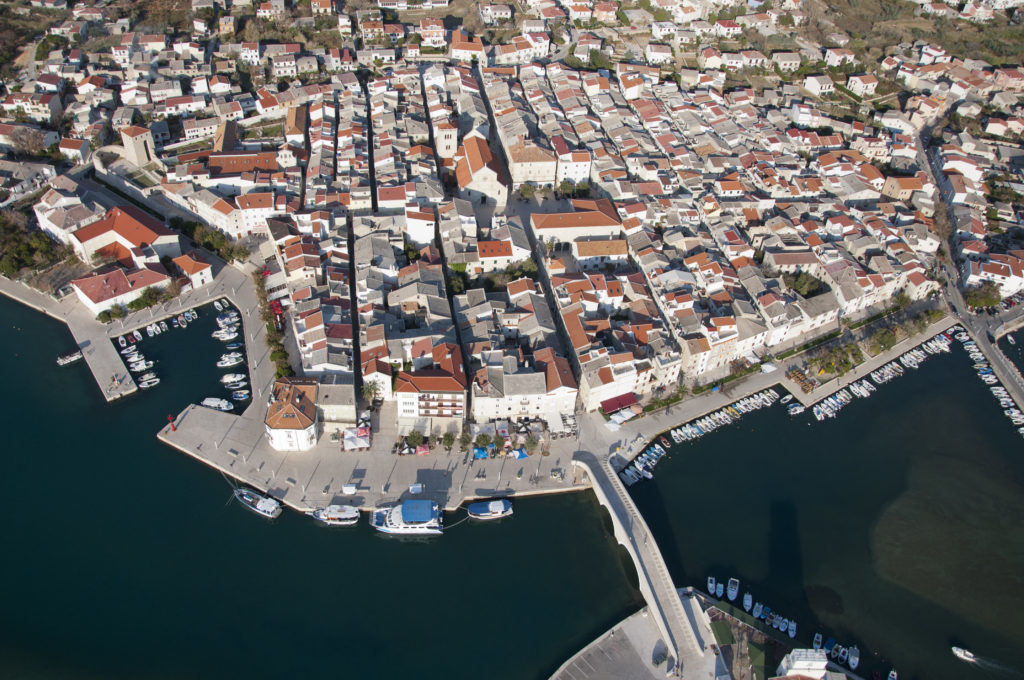
The film also presented the undisputed gastronomic delicacies such as the famous Pag cheese, but also views of the Pag saltworks, the ‘’Embrace of stone and wind’’ cycling path which was co-financed by the Ministry of Regional Development and EU funds, and the island’s Nordic walking trails. It showcased only what is already well known, that Pag is, more than anything, the entire taste and smell of the destination, the perfect place to relax and the provider of a truly unforgettable experience.
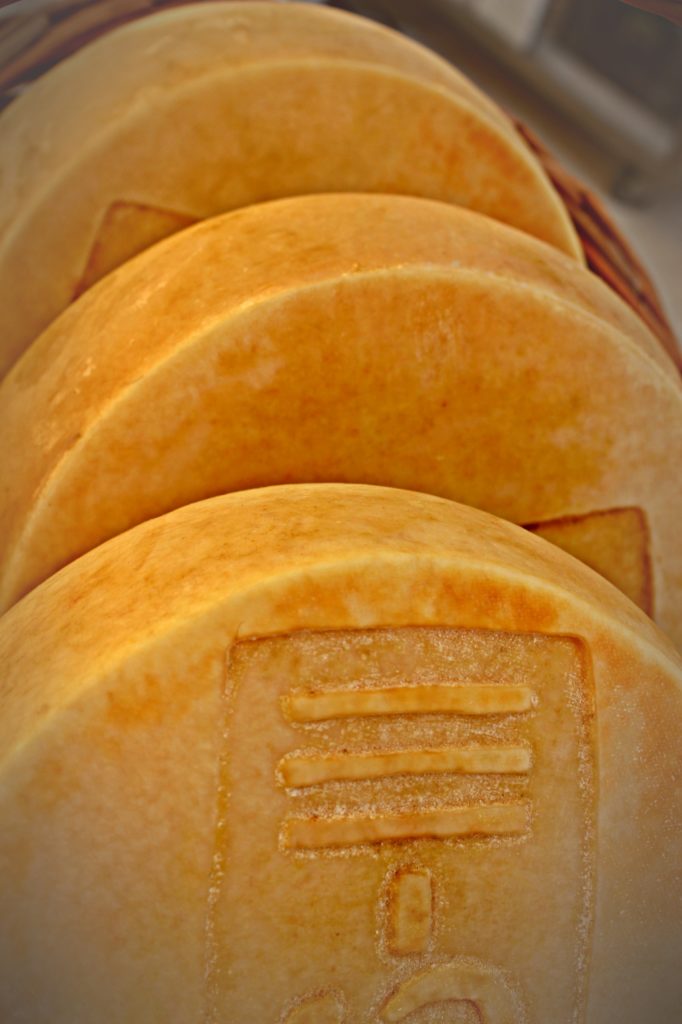
There is also the award-winning camp Straško and camp Šimuni, cultural heritage, galleries which showcase the island’s inherited wealth, ornithological reserves, an amazing underwater amphora site near Šimun, the protected area of the Hanzina forest, the Lun olive groves, the Roman aqueduct…
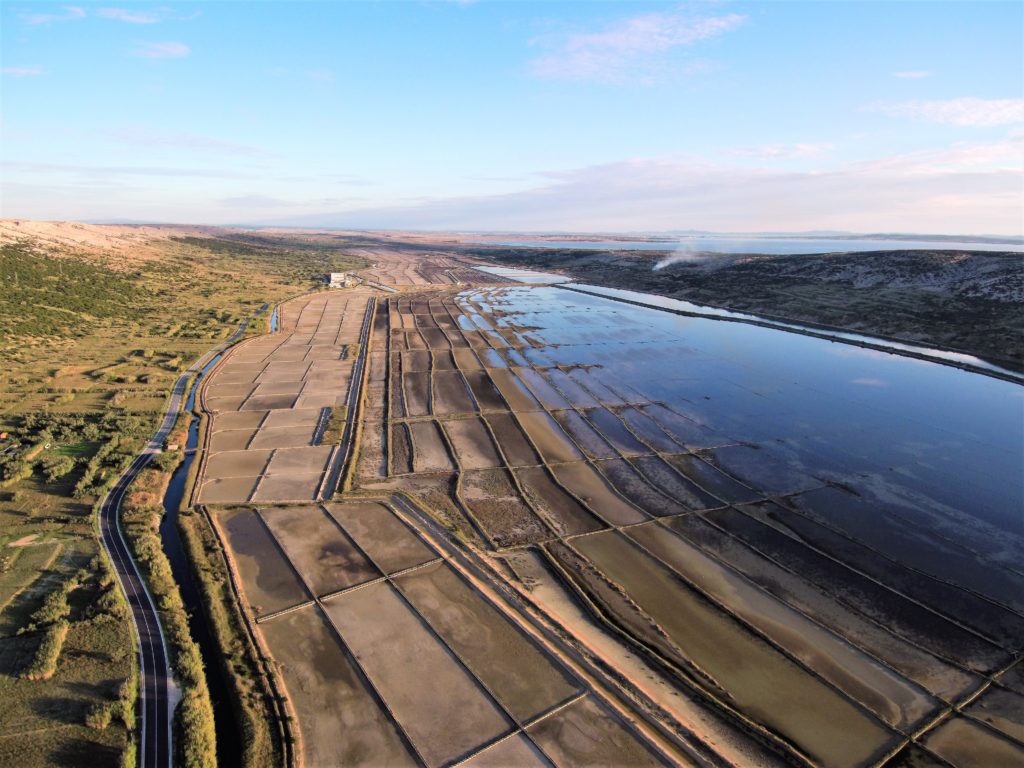
Anyone who comes to Pag will find it difficult to leave it again. Because, among other things, the bay of Ručica awaits its visitors with its gorgeous long sandy beaches framed by bare rocks that stretch steeply out into the sea. Or the numerous beaches that stretch along the entire island.
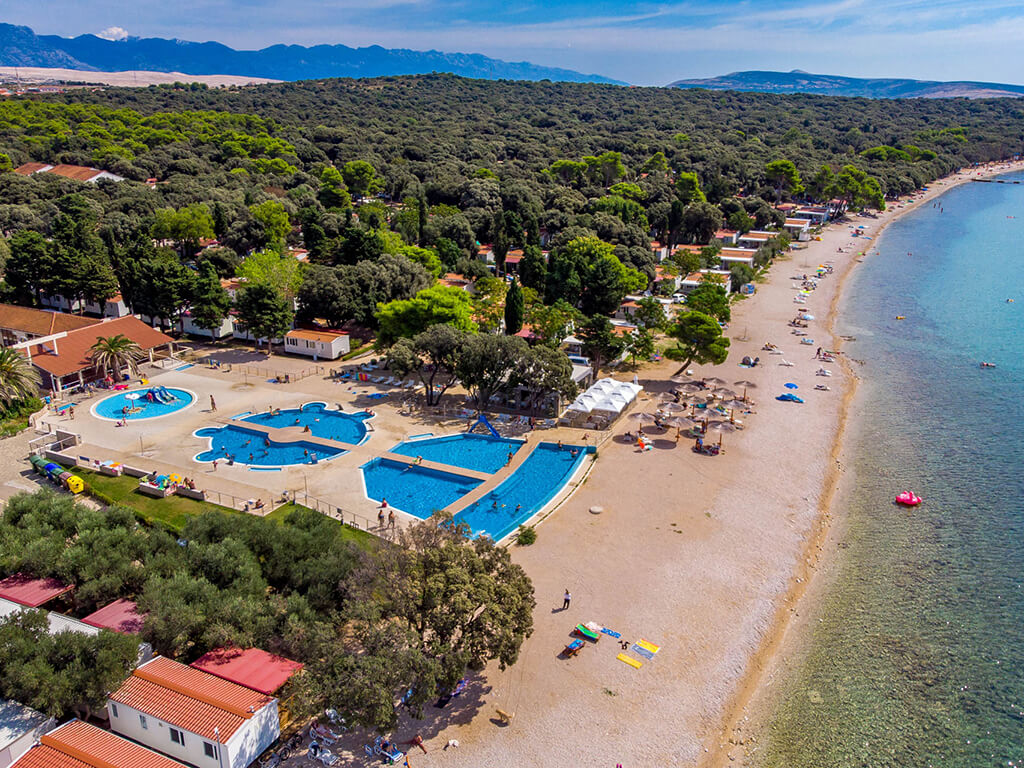
You can enjoy the view of the dry stone walls, climb up to the various lookouts, and even enjoy Pag’s healing mud. Some will choose to observe the birds in the ornithological reserve, many will be interested in the famous Pag Triangle, a place which carries with it a legend about extraterrestrial civilisations that may have left their mark there.
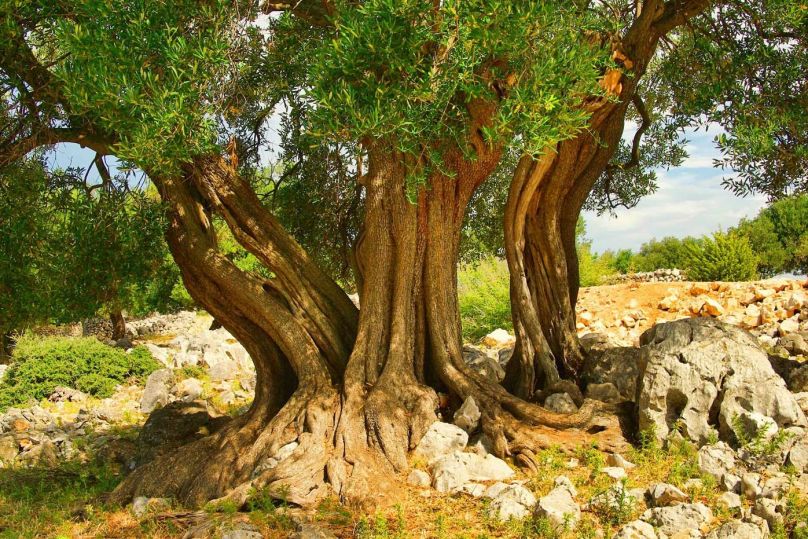
Are you perhaps in favour of sage cheese, or one made from a combination of sheep's and cow's milk that has been awarded many times at various fairs in the country and throughout the world?

Or maybe you’re up for some cheese with paprika? We definitely recommend trying the cheese with green and black olives, cottage cheese as a rhapsody of flavours, and pralines with Pag cheese, which can also be taken home as an original island souvenir.

All of this is Pag, a combination of traditional, modern, the future, recognisable and ready to lure you to it.
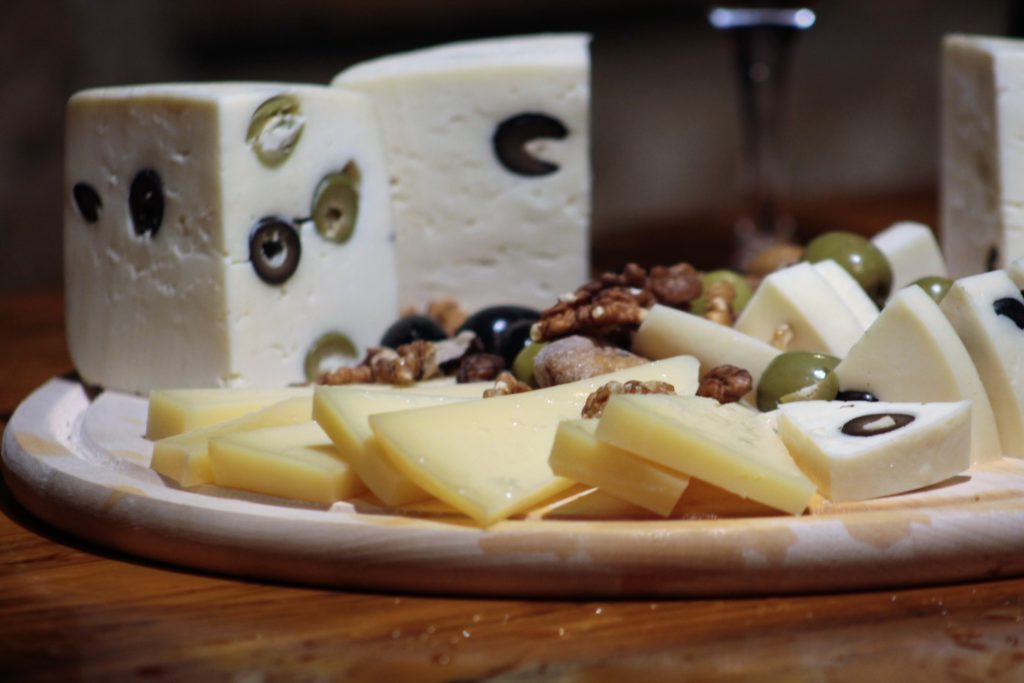
You know the saying: When you dip your finger in the sea you are connected to the whole world. The same is also true of Pag: When you experience Pag, you experience life.
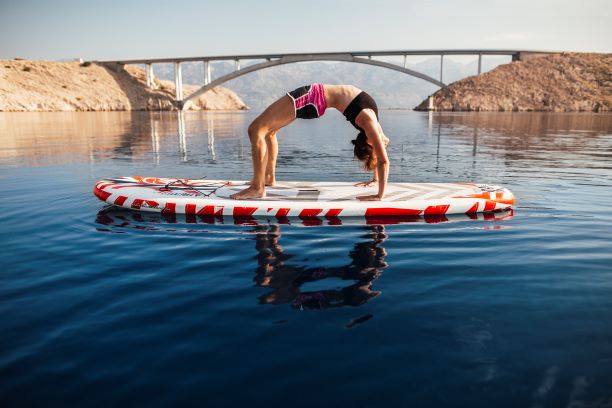
The island is just waiting for you to grab it with both hands and a set of full lungs.

More:
www.visitnovalja.hr
www.tzkolan-mandre.com
www.tzgpag.hr
www.tzstaranovalja.hr
www.visitpovljana.eu
Photo: archieve TB Pag
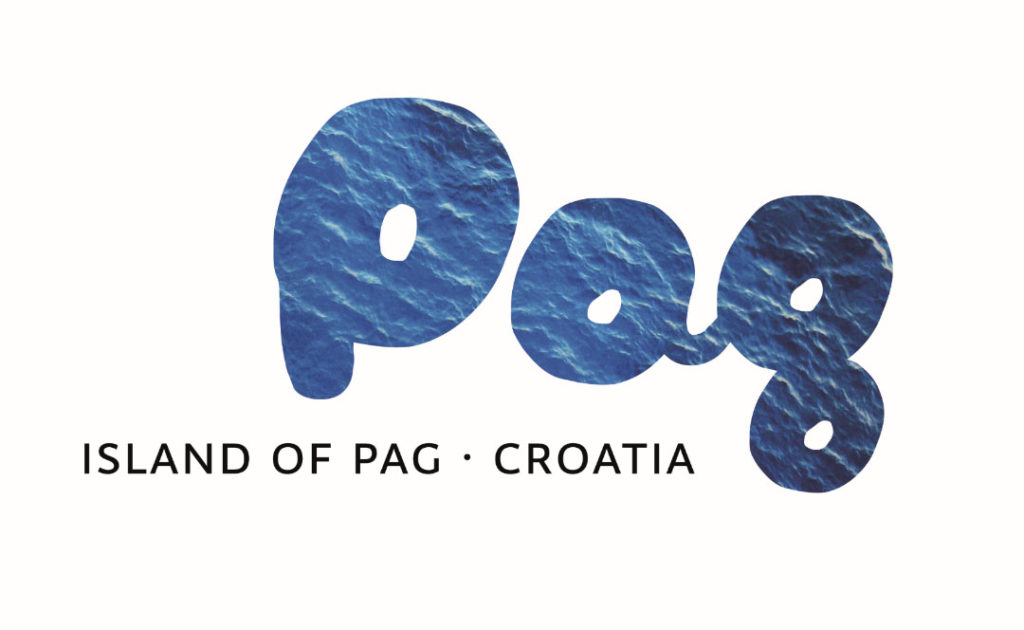
Croatia Hot Spots Summer 2020. edition is OUT! Fill your summer with joy!
The best thing would be to sing the Dalmatian song ‘’no one can do anything to us’’, alas, in our Dalmatian paradise, the coronavirus crisis struck. The new normal posed a challenge, and we, aware of our potential, reciprocated with imagination and creativity, as a recipe for attracting tourists to our area.
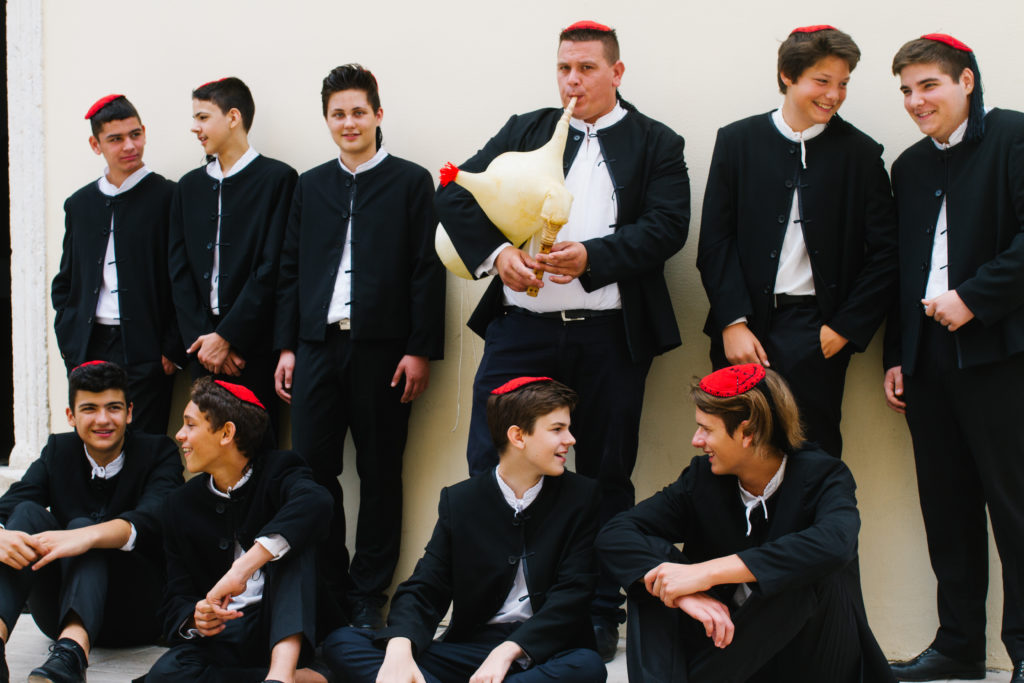
And here are our excellent numbers, the announced and expected 30 percent of traffic when compared to last year's tourist figures was achieved. And in some destinations, that figure was well exceeded. And all this is thanks to the advice of the epidemiological profession, people’s adherence to the protection measures, and the hard work of everyone. This is how we managed to make ourselves stand out in Europe as the only country with significant tourist traffic.
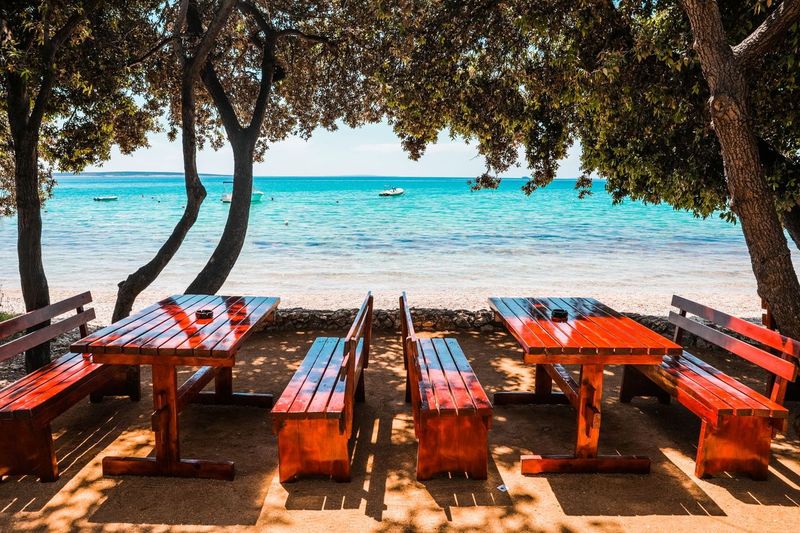
And now comes the race to Croatia’s gems, to our most beautiful turquoise bays, to the attractions of the Dalmatian hinterland, to adrenaline tours, to the sights of Bol.
Croatia Hot Spots magazine - new edition is out!
Read online at Issue.com
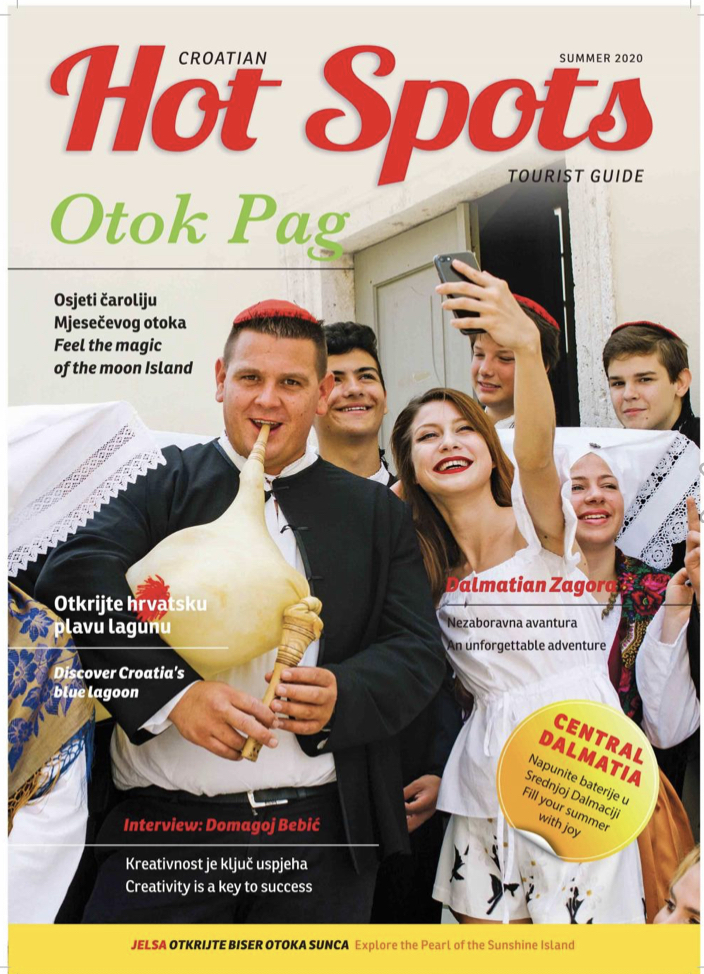

Magic island Pag is summer Hot Spot destination!
We’ll take you to Pag, which has established itself as an island whose destinations are chosen by the world's most luxurious fashion magazines. We’ll reveal to you the secret of their tourist success and the reasons why they are achieving fantastic results this year.
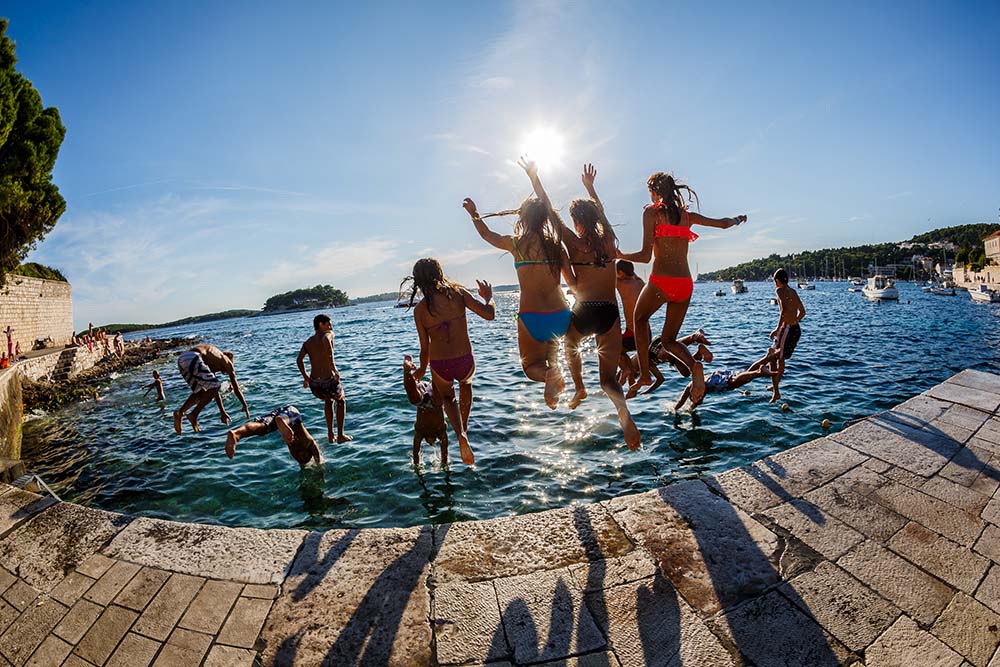
We’ll then head to Central Dalmatia to show you the pearls you absolutely must visit this summer.
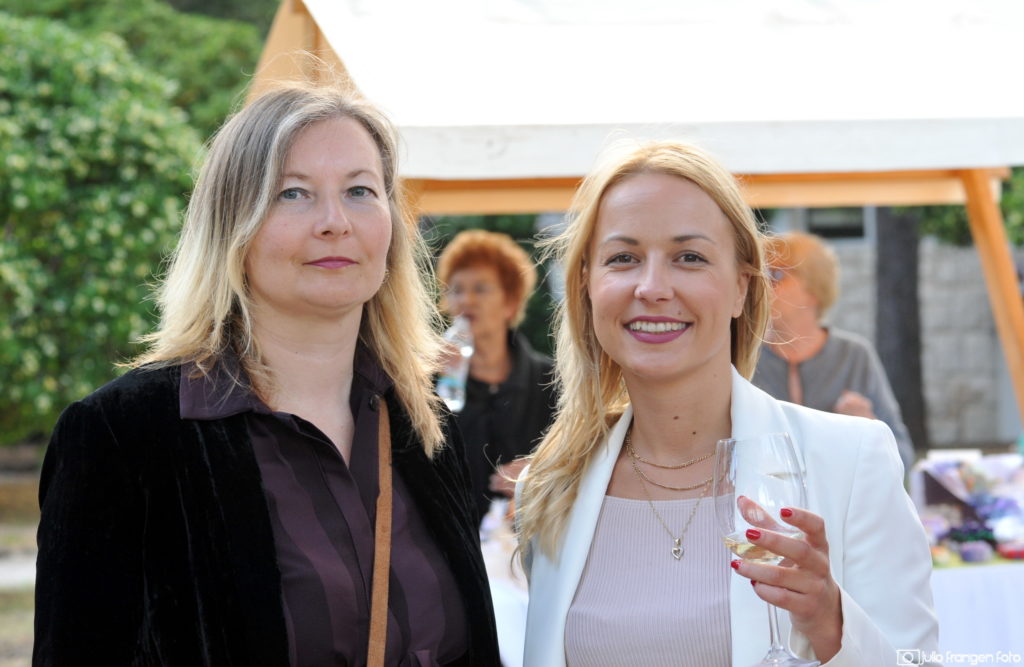
Then we’ll quickly transfer you to Jelsa on the island of Hvar, which has achieved some fascinating tourist figures. We will show you their model of traditional accommodation, sustainable tourism, in which a guest becomes a member of the family.
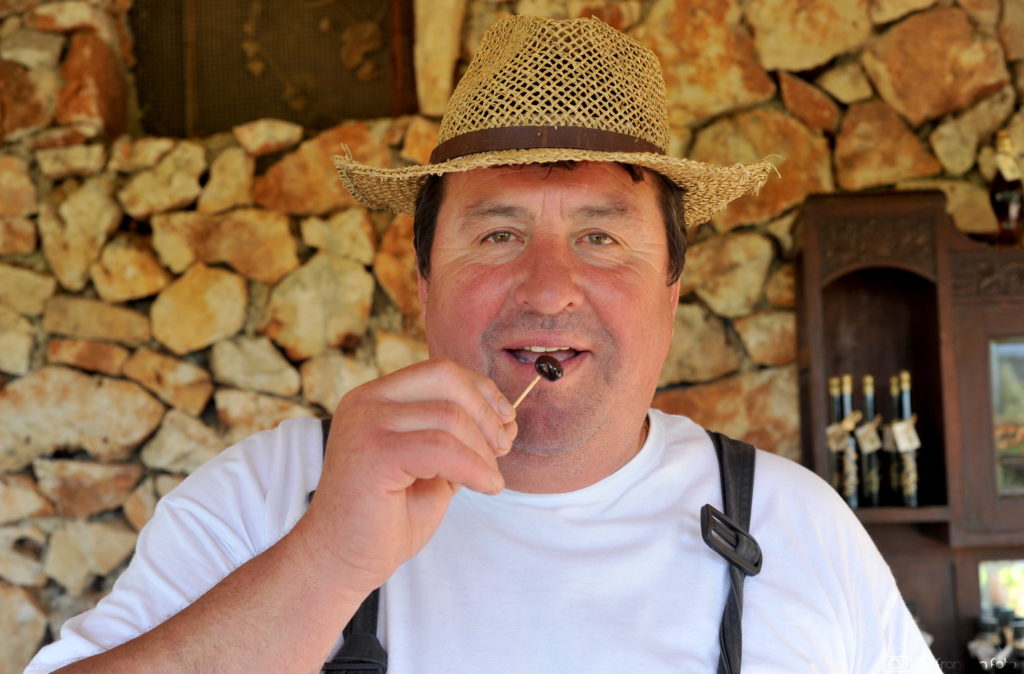
We will take you ashore, and head inland to the hinterland of Split, to the heart of the Dalmatian hinterland and show you a fresh attraction in the shape of an Indian village. Green valley retreat zone.
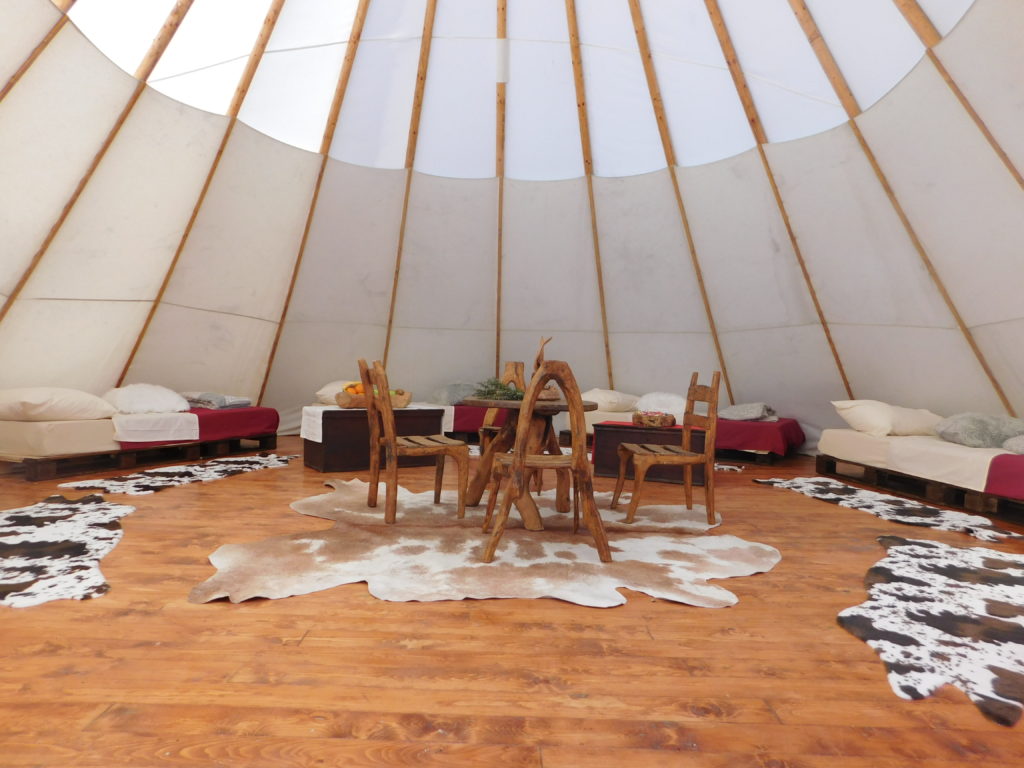
We will also recommend one of the most beautiful excursions in Dalmatia, the one which takes you to the incredible Blue Lagoon on Drvenik Veliki, where Max Nautika will be your guide.
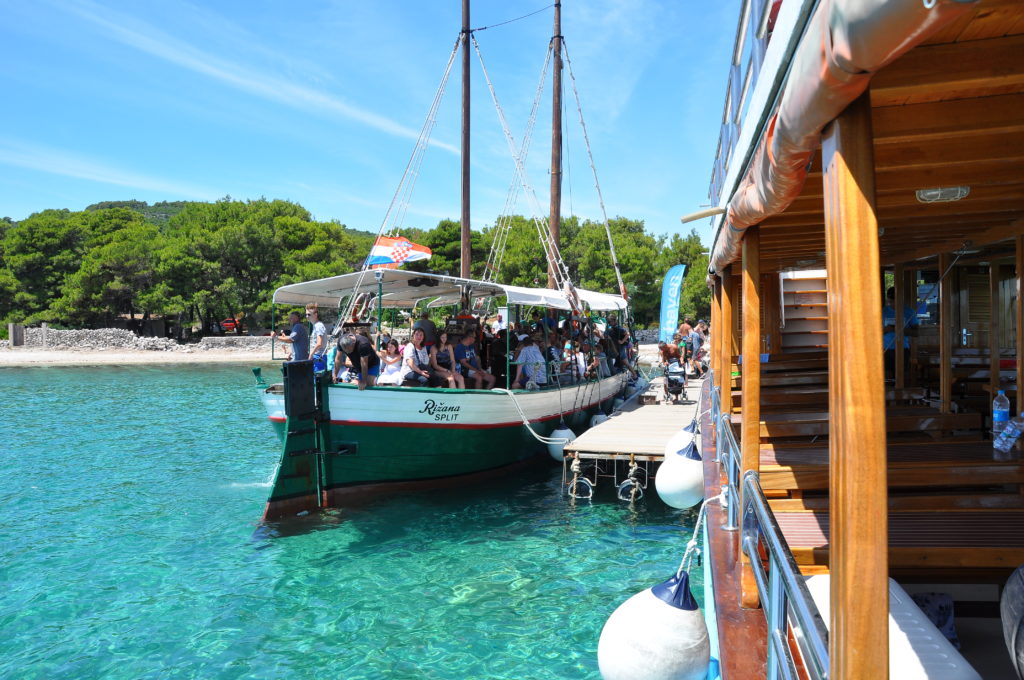
On top of all of that, we’ll also reveal to you the excellent initiative of the Student Centre in Split, which has created a platform for attractive and never more affordable accommodation.
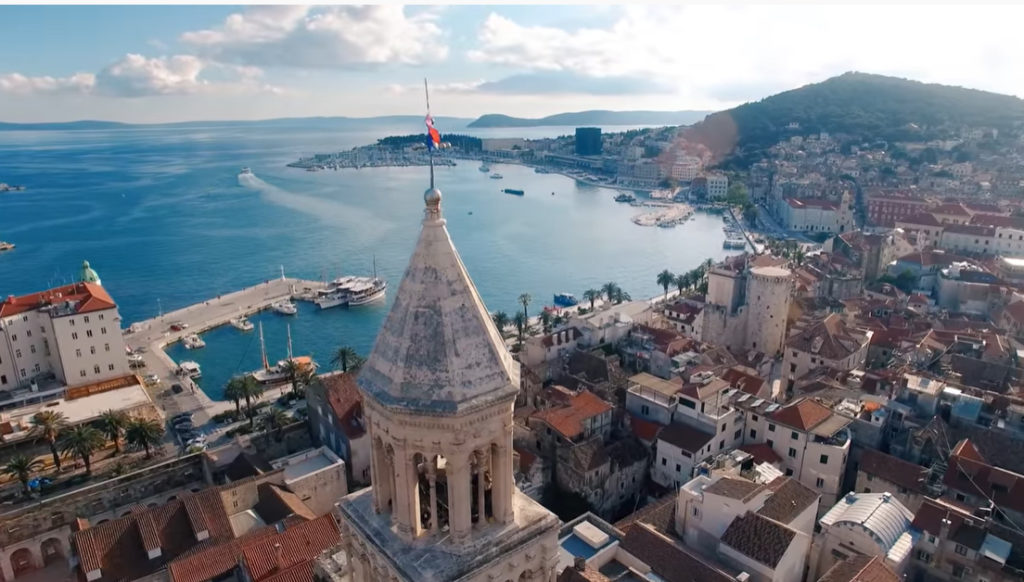
We will show you where this summer, despite the coronavirus crisis, you can celebrate, but also teach you how nothing can go without the golden drops of Dalmatia, the best Athena olive oil from Stari Grad.

.. embark on yet another adventure with us.
Read online Croatia Hot Spits magazina at Issue.com
Photo:archive TBs
Athena extra virgin olive oil - An enchanting tasty adventure on the island of Hvar!
Athena is the highest quality olive of organic origin, one that will emphasise and round off the taste of absolutely everything it touches, and with it, even a piece of bread and cheese will become an intoxicating and enchanting tasty adventure.

This isn’t just any old, ordinary Dalmatian oil. History, tradition and centuries of extensive knowledge of island farmers are woven into OPG Plenković’s product. This liquid yellow gold comes from the island of Hvar bearing the strong name of Athena. This premium extra virgin olive oil was made from ripe olives from the Stari Grad plain.

. Its name alone alludes to precisely that, to the goddess Athena, one of the main figures of Greek mythology who gave the olive to the people. And the Greeks ennobled it, they made oil from it, which they kept in ceramic vessels - amphorae.
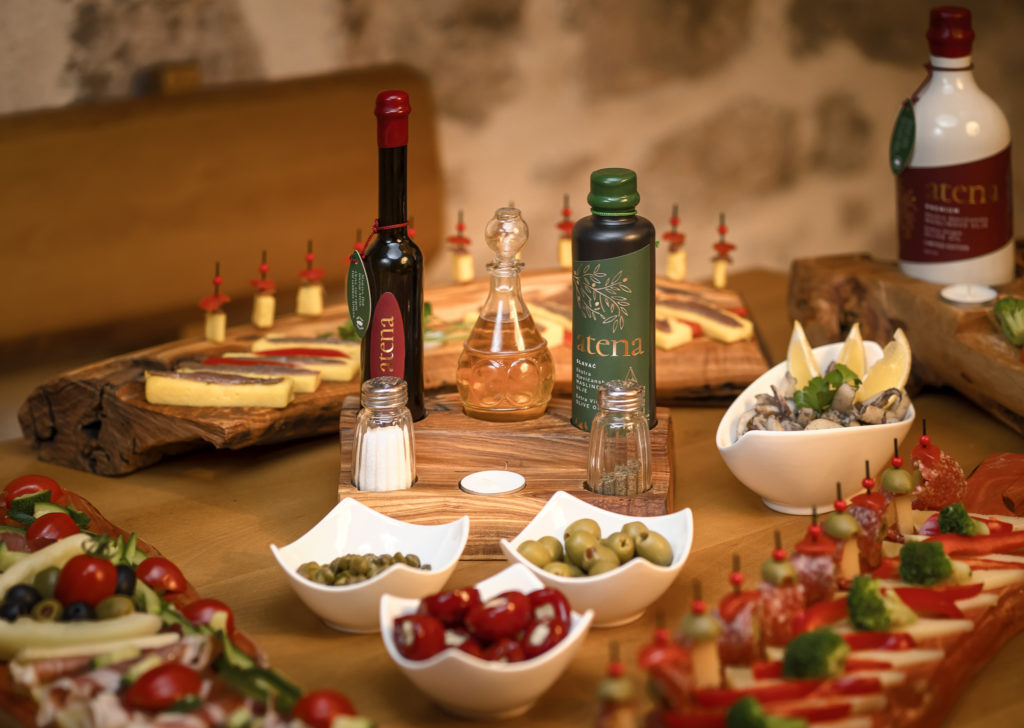
And so it should be done today. The exceptional Athena olive oil comes in ceramic bottles that preserve all of its nutritional properties. Athena is the food and cultural history of the island of Hvar, it is the essence of the coming together of both tradition and modern technology.
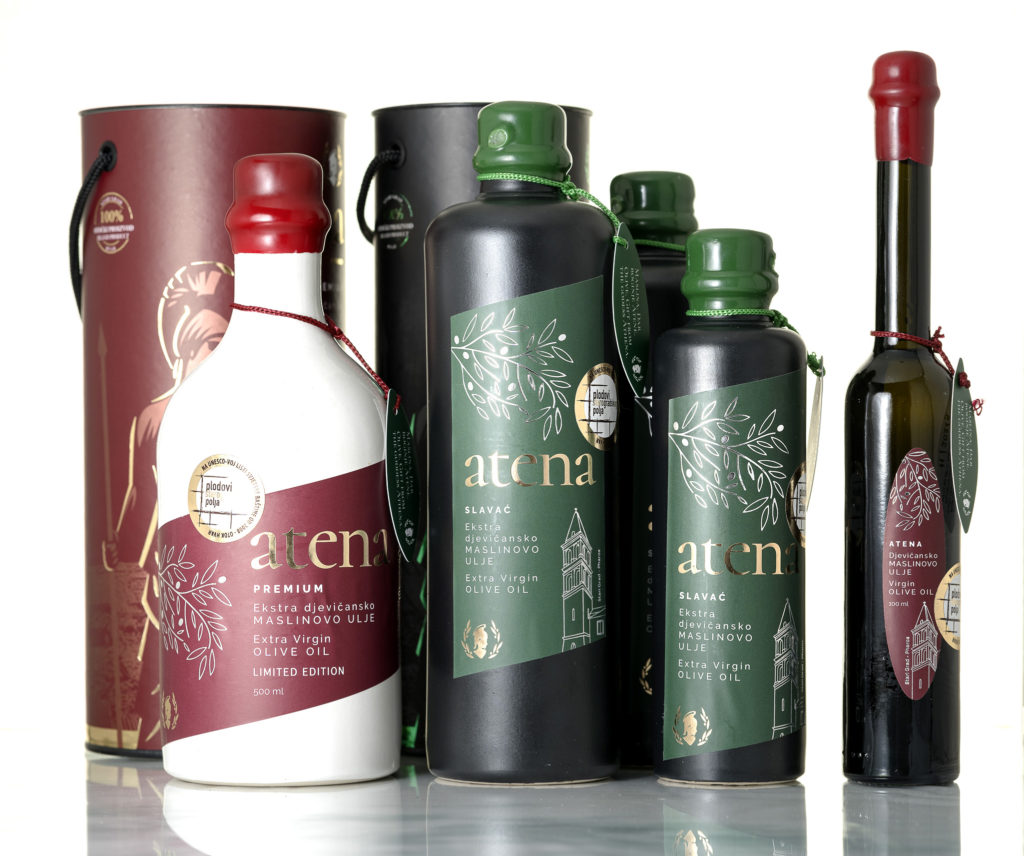
The packaging is customised and very pleasing to the eye, and it also comes in a limited series.
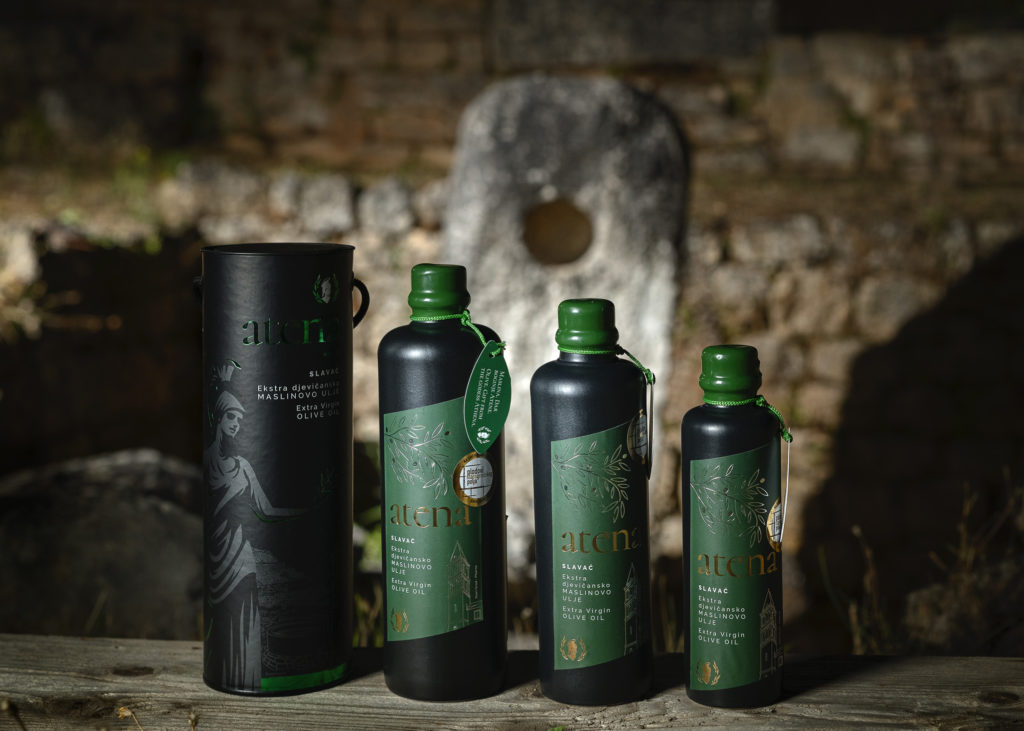
This year, they have about 500 white bottles at the Plenković family farm, with an additional limited series in black. Athena Premium carries a medium to intensely pronounced fruitiness in the scent of olive fruit and green grass, apple and tomato, with a dominant intense almond flavour, rounded off with notes of both artichoke and rocket.
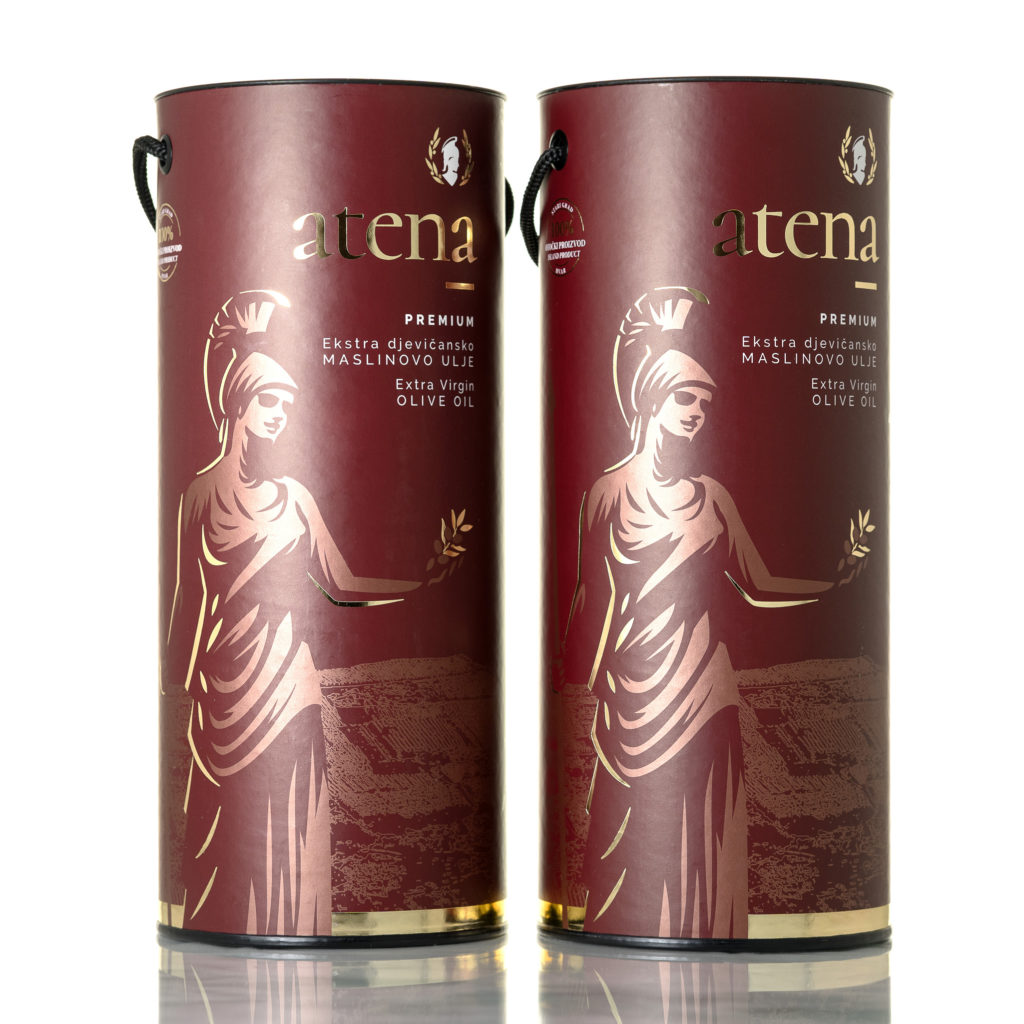
Athena Slavač is a mild-tasting oil that will satisfy a wide range of consumers who prefer milder-strength olive oils. It boasts a delicate aroma of ripe olive fruit, a soft taste of ripe fruit and pronounced floral notes.
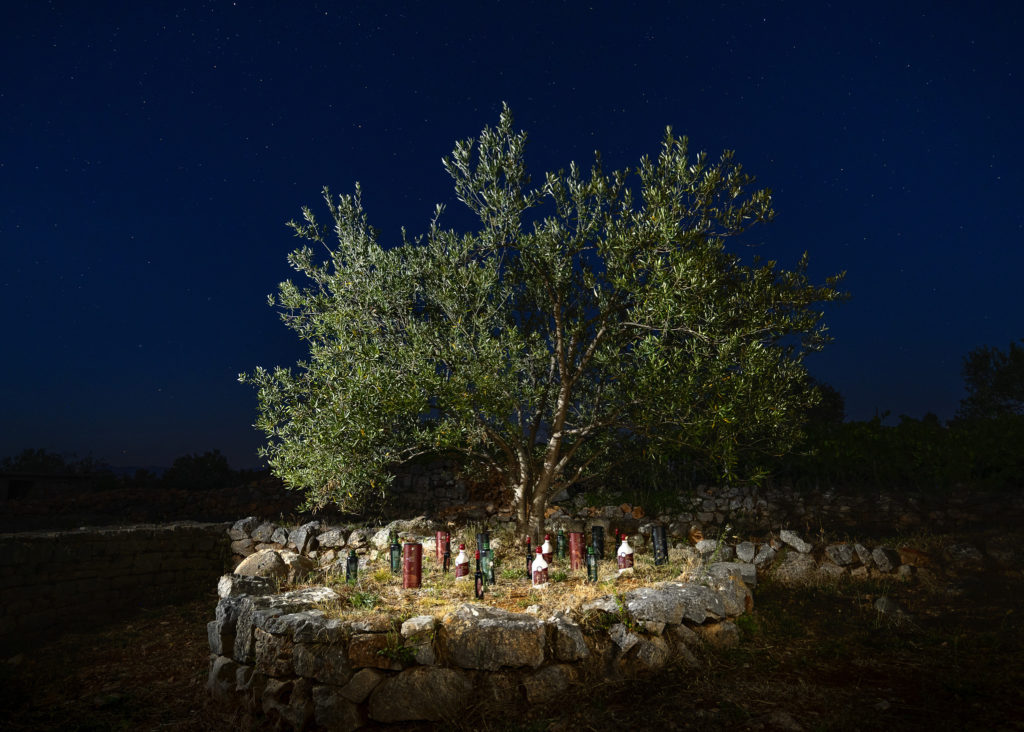
Due to the fact that a large part of the olive groves belonging to this family farm are located in the Stari Grad plain which is under the protection of UNESCO, Athena draws the strength of the microlocation in which it was born and matured.
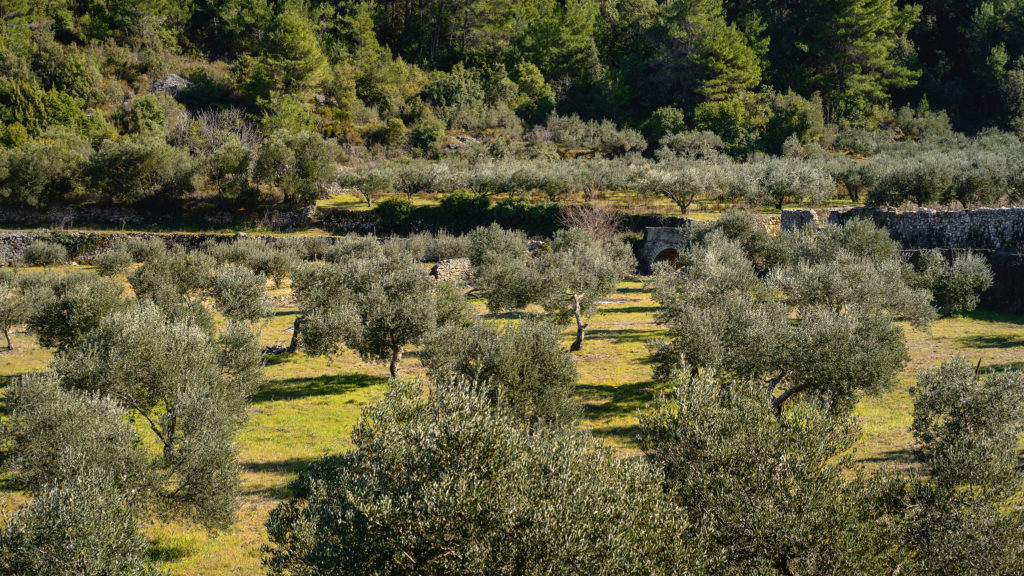
In tasting Athena, one actually tastes the history of the island, absorbing the fruit of the knowledge that has been passed down from generation to generation for as many as 2400 years.

Even in this very modern age, people still speak about the concept of terroir, which is what connects the taste and characteristics of this oil to the truly special peculiarities of its microlocation.
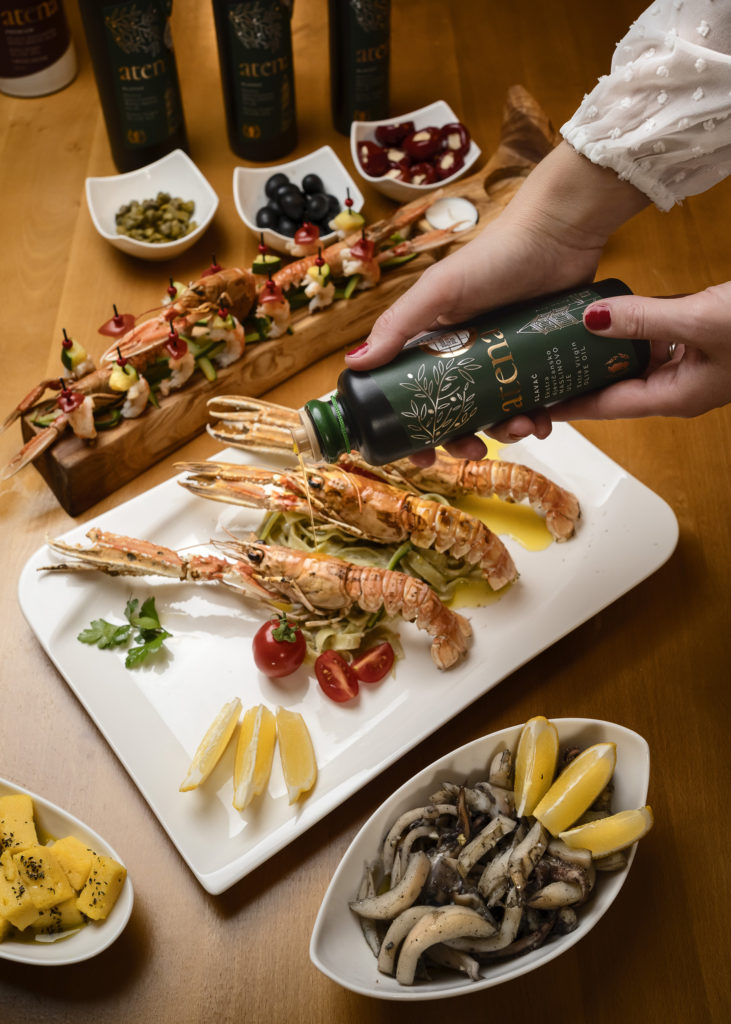
Athena is, as judged by the best experts in the field of oenology, table oil in the very best sense, one that will emphasise and round off the taste of quite literally everything it touches. And it will touch everything, from a simple piece of bread and cheese, to salted sardines and brujet (brodet).
Rhapsody will be made in every dish, it will stimulate the palate, cause a wave of gastronomic pleasure and enhance the importance of the most recognised, most appreciated and healthiest diet, the Mediterranean diet. Our diet.
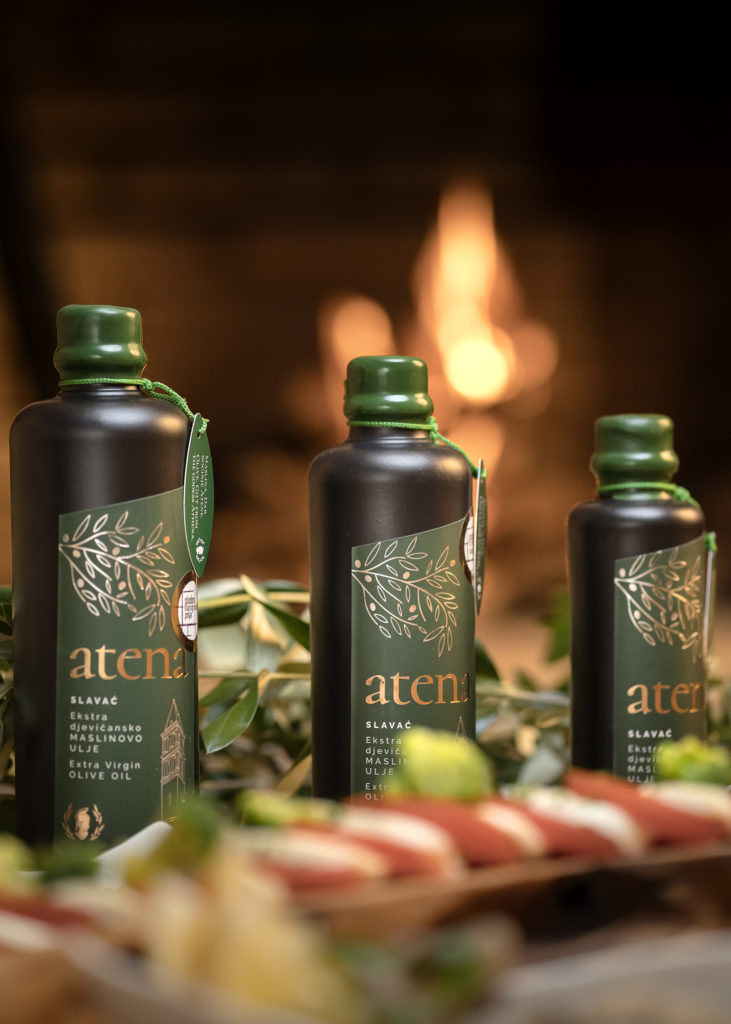
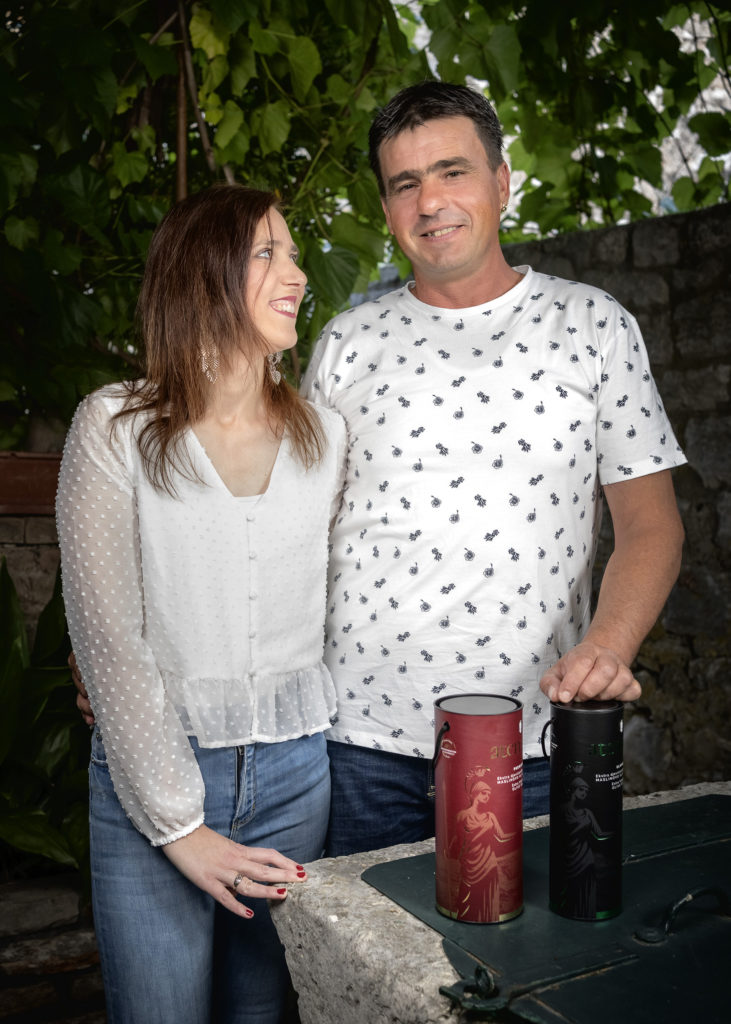
The owners of the Plenković family farm are a couple called Magdalena and Ljupce Plenković, who, last year, decided to brand their olive oil and purchase more fields in addition to their inherited olive groves. Their plan is to plant more olives and gradually expand their production capacities.
"Our desire was to combine the indigenous product with the history and culture of the plain, the benefits of the Mediterranean diet and pack it as a luxury souvenir."

Web shop: www.atenahvar.com
Points of sale:
"Za pod zub"- Srinjo kola 11, 21460 Stari Grad
"Aroma Dalmatia"-Dioklecijanova 5, 21000 Split
"Terrami"-Zadarska 3, 21000 Split
Photo: Phastudio
Interview DOMAGOJ BEBIĆ "Creativity is the key to success"
THE FUTURE OF OUR TOURISM AS SEEN BY AN EXPERT – COMPETENCE AND KNOWLEDGE AS GUIDE MARKS IN DIFFICULT TIMES
In these seriously difficult and uncertain times, when coronavirus has redefined our reality in all its aspects, competence and knowledge have never been more significant. In these times of uncertainty, we have turned to people whose expertise and knowledge instil confidence and a sense of security.
We met with an expert of such kind, associate professor Domagoj Bebić, the holder of the chair on New Media and the head of the Department for Strategic Communication on Faculty of Political Science in Zagreb, and the coordinator and representative of all IPSA research committees – the greatest international association of political scientists. We talked about the interrelation of coronavirus and tourism, one of the most complex social-economical phenomena that has been significantly affected by the pandemic.
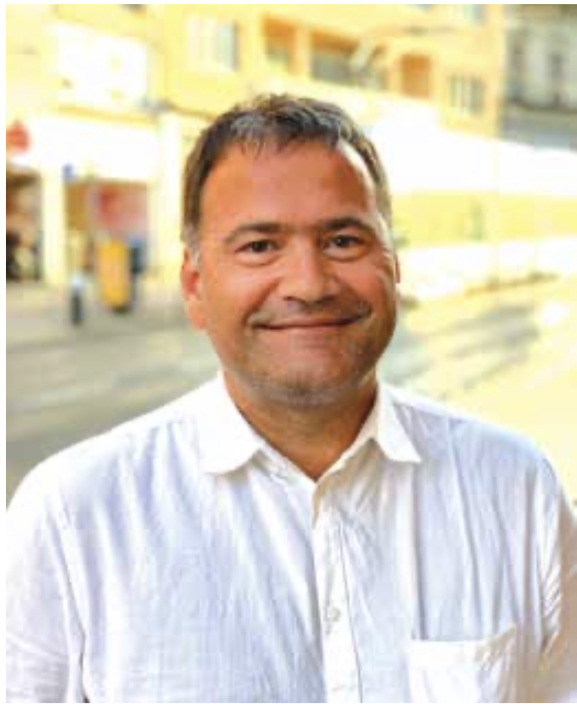
1. Lately, we have been witnesses of the dramatic effect of the pandemic on global travel – in which way has coronavirus particularly altered its dynamics?
I would like to point out that, at the moment, the most important thing for everyone is to keep ourselves and our loved ones safe. On the other hand, some people are pessimistic. If we take a look at the numbers, it all does seem a bit negative – air traffic is practically non-existent, there're a sense of fear among the world’s travellers, and I think we are close to a point when we have to redefine the term zero point and start with some new processes, and this will happen when we gain some more insight into the nature of this virus.
The global COVID-19 pandemic has definitely postponed the beginning of the tourist season, we have witnessed many reservation cancellations just several days before the tourist season as we know it should have started. I believe that uncertainty is one of the things that has affected this delay the most. The whole situation and its uncertainty as far as epidemiological measures are concerned have brought caution in terms of the booking of accommodation, as well as a decrease in the number of guests.
2. In your opinion, is it likely that this situation will have long-term consequences and permanently alter the travel market? Can you single out some of the specific segments where long-term changes are to be expected?
I believe that this should only be a kind of setback, but once the danger disappears, things will slowly fall back into their place and within a reasonable amount of time, the numbers will reach those of pre-pandemic times. I also believe that all of us will somehow change the way we act. Most likely with time we’re going to acquire some new habits, but we’ll certainly need some time to adjust and get used to the “new normal”. It is to be expected that after this storm the tourist market, the situation will start to stabilise and a new balance will be reached. I don’t think that this is the time for pessimism, but for an opportunity to learn a lesson and try to adapt to these new circumstances.
3. What about mass tourism? Is it, in the light of new events, a finished story?
Out there in the world, including here in Croatia as well, some new models of tourism have started to be encouraged such as sustainable tourism, green tourism, the growing and enjoying of organic food… The coronavirus situation only brought them up to surface and I think that it’s the right time for tourist workers to start to invest in them. As soon as the pandemic is over, sustainable tourism and the green economy will become the new normal. This new situation has prevented mass tourism from rising. As I previously pointed out, I believe we will, meaning all of us together, acquire some new habits and adapt to new trends. This situation will most certainly bring about some new trends and habits, but I believe that the tourist sector will soon recognise and adjust to the needs of guests. The Split-Dalmatia County Tourist Board has proved to be very successful in adapting to new situations on many occasions, which is the most important characteristic for successfully doing business in tourism.
4. What are your predictions about the nature of “new” tourists, or perhaps it’s better to say, the tourist of the future?
They are completely networked, the primary way of communication being social networks and new media. I believe this situation will encourage guests to be more open to different tourist offers, to explore new possibilities. The new type of tourist will be more open to somewhat different, specific offers and vacation models.
5. How do you envision Croatia on the world tourist map? Is there a segment in which our country as a destination can look for an opportunity or do we have some special advantage?
Croatia is one of the leaders in exclusive and expensive tourism. In this segment we are very creative, developed and expensive – which I don’t think is bad. In my opinion, this sector attracts global emissive markets, although there is a dose of public criticism on the exclusive part of tourism, but this is the branch in which we can offer the most.
I’ve already singled out the Tourist Board of Split-Dalmatia County as a leader when it comes to adapting to new situations, new trends and novel needs of tourists. We should also keep in mind that the advantage of Croatia is its natural resources that enable guests to try numerous possibilities in just a few minutes' ride. From secluded beaches, programmes in city centres to being able to enjoy themselves in isolated locations full of unexplored natural beauty.
6. What would you recommend to the leading people in Croatian tourism – what should be the base of their marketing strategy?
Creativity. This is the key to success. We are definitely not that creative, and we have every right and freedom to be. The audience’s span of attention has decreased, their hectic lifestyle has changed their habits, so it’s important to emphasise the creativity of the content to attract the attention of the target audience. Also, all discussions on global markets point out the importance of providing tourists with information about security, which has to be specially emphasised during this period.
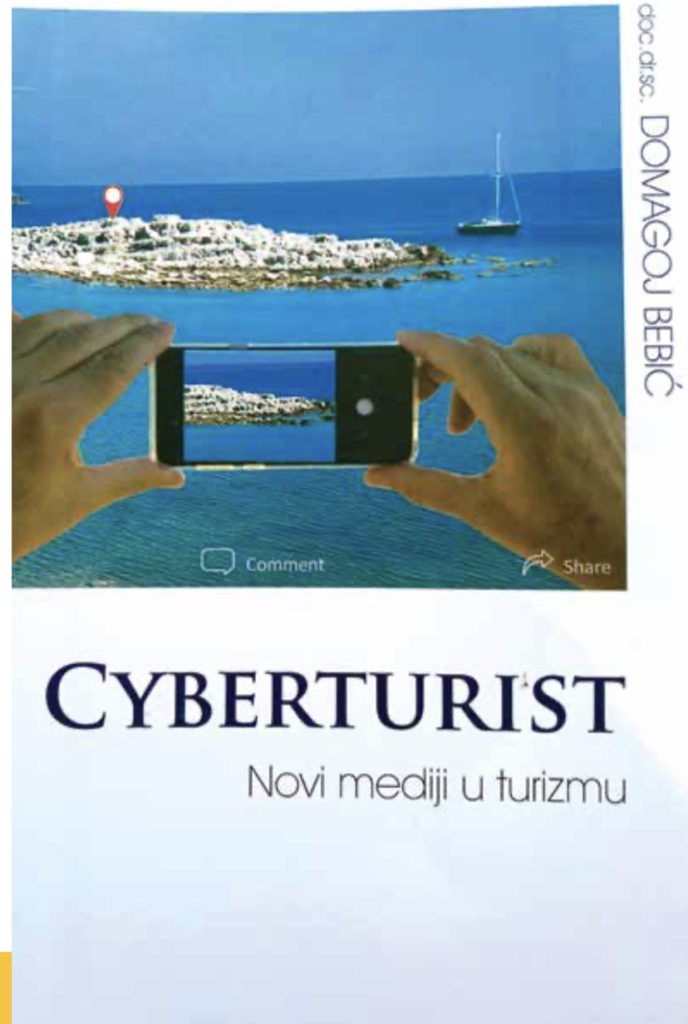
Domagoj Bebić is author of the book -Cybertourist, new media in tourism.
Cybertourism stands for the change in tourist communication patterns and tourist promotion. Due to the change that was introduced with the rise and popularisation of new media today we
deal with completely new communication rules and practices. The development and popularisation of social media has redefined core media practices.
THE HOLIDAY OF YOUR DREAMS! New promotional video showcasing the beauty of Central Dalmatia launched!
The Split-Dalmatia County Tourist Board has launched a new communication concept - a promotional video called Central Dalmatia - A Dream Waiting For You
After months of dormancy and marketing inactivity, the Split-Dalmatia County Tourist Board has launched a promotional campaign aimed at the surrounding markets. The Split-Dalmatia County Tourist Board has been patiently waiting for the adequate conditions to be achieved, i.e. for a favourable epidemiological situation to be declared, and for the establishment of tourist traffic to begin.
The most prominent part of the promotional campaign is a new video, launched just a few days ago, aimed at targeted European markets, and designed by the Split-Dalmatia County Tourist Board to communicate with its millions of followers on social networks Facebook, Instagram, Twitter and other online platforms. Making a step forward in terms of marketing as we begin re-opening borders and establishing tourist traffic in these areas. Given the circumstances that have ensued across the world due to the COVID-19 pandemic and the almost complete cessation of tourist movement, this campaign wants to draw the attention of current and future tourists to the beauty of Central Dalmatia, the favourable epidemiological situation in this region, and the availability of travel.

Central Dalmatia and all of its treasures, the beauty of its lakes, rivers, sea, beaches, bays, towns and islands are ready and waiting for guests to arrive. In Central Dalmatia there lie safe, preserved, coronavirus free locations which are full of hidden beauty and are always ready to reveal themselves to dear friends and guests. Central Dalmatia truly represents a treasure trove of feelings and a set of memories for those who have already been met with its beauty.
This is a dream that awaits all those who will meet Central Dalmatia for the very first time. Central Dalmatia is still here and is now ready for socialisation again, sending out an invitation for all who want to get a taste of a holiday which will never leave their minds and hearts. All of the above is why Central Dalmatia is inviting all those who want to experience real adventures on the journey of a lifetime, to come and get better acquainted with this area as the most special and indeed most diverse car destination. At every new corner, behind every bend in the road, and after exiting every tunnel, Central Dalmatia provides a new, most beautiful postcard.
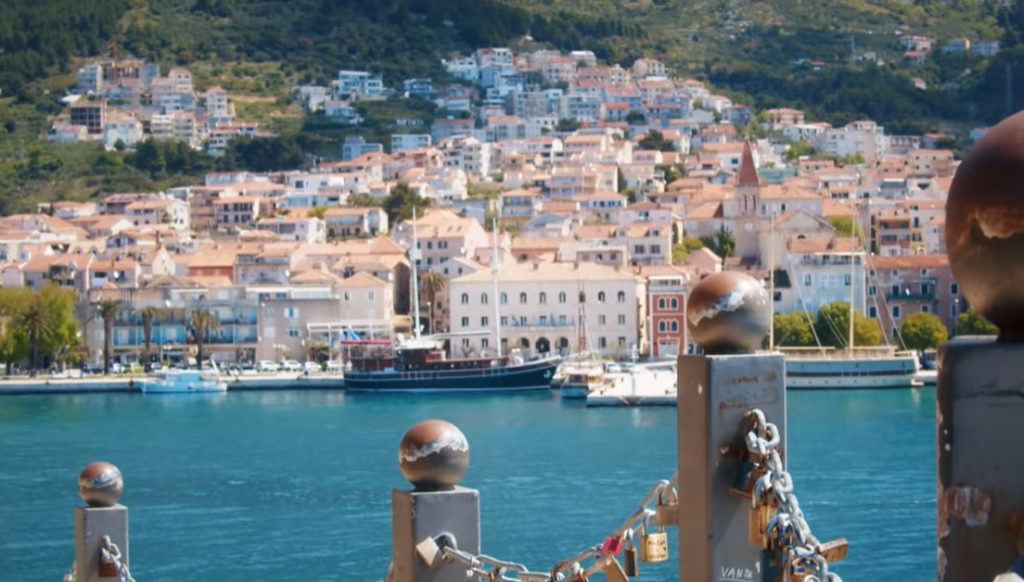
The Split-Dalmatia County Tourist Board has thus launched promotional campaigns aimed at the markets of Germany, Poland, Slovakia, the Czech Republic, Slovenia, Bosnia and Herzegovina and Austria. And this time, it’s turning towards all those who are ready to step into this new platform of Central Dalmatia’s tourist offer.
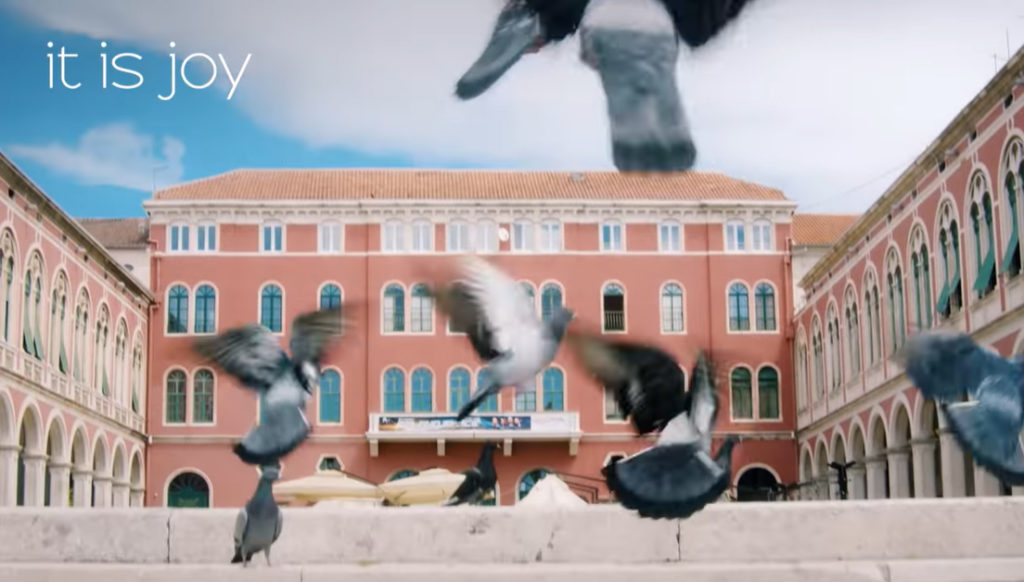
Those who do step into this new platform will be provided with a perfect holiday that they will never forget even in the post-coronavirus era. The platform suggests that people come and get better acquainted with the specialties Central Dalmatia offers as a car destination, which includes a wide variety of specifics. Because Central Dalmatia is more than just another tourist destination, one of those aforementioned specificities is the feeling of 100 percent freedom, and at the same time the most beautiful sense of harmony. It is an area where every friend and guest can feel all the treasures this area has to offer - all in one place.
’We are carefully monitoring the situation in the main emitting markets of Central Dalmatia, just as our hoteliers, caterers and hospitality workers, tourist camps, owners of family accommodation and the nautical tourism sector are all waiting for an agreement between the epidemiological and tourist professions which should enable the protection of human health and the realisation of the summer portion of this tourist year. But in the meantime, despite the modest funds available to the County Tourist Board under these circumstances, we have prepared promotional campaigns aimed at our traditional markets of Germany, Poland, Slovakia, the Czech Republic, Slovenia, Bosnia and Herzegovina and Austria. Through them, we will further promote Central Dalmatia as a destination to which one can drive. The most prominent part of the promotional campaign is the new video that was launched a few days ago, which is aimed at targeted European markets and represents a step forward in terms of marketing at this time when we’re starting to open borders again and establish tourist traffic in these areas,’’ says Joško Stella, director of the Split-Dalmatia County Tourist Board.

Through this way of getting better acquainted with the area, every new and previous guest in Central Dalmatia has the opportunity to get to know the connection between the past and the present, the gastronomy offered here, as well as get a taste of adrenaline, fun and relaxation. Through car tours, they will get to see Central Dalmatia’s UNESCO cities, Trogir and Split, drink coffee in Emperor Diocletian’s square, enjoy the healthiest Mediterranean food in the world, and watch kite surfers on the city’s beaches.
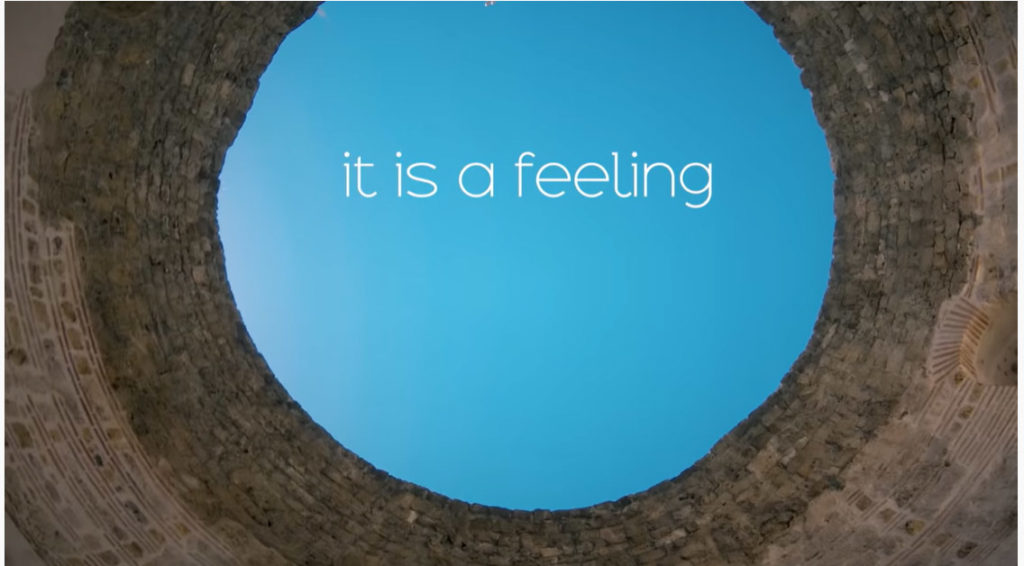
They will go to the Dalmatian hinterland, taste grilled trout from the rivers, and taste top-quality home-made wine from carefully looked-after vineyards. They will head south, to the famous beach in Bol, to Zlatni rat, and see this unique world phenomenon that changes shape as the wind blows with their own eyes.
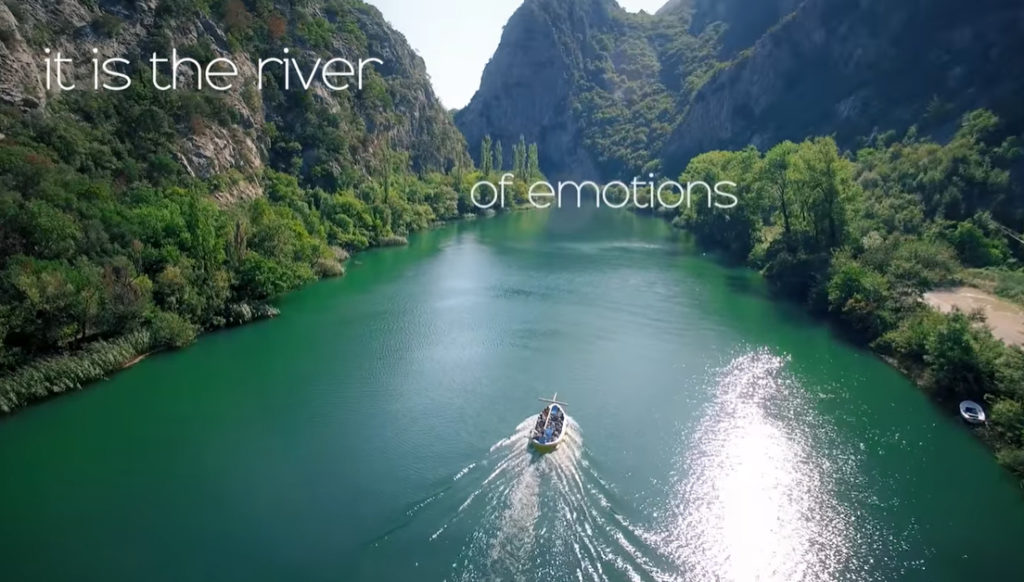
They will swim in the crystal clear coves, enjoy the sea, which has never been more gentle and transparent, and then they will return to the coast again. They can then soar up high into the hills of Omis, to enjoy the lookout from the palms of their hands, and in its centre, in a city where honour and freedom were guarded by the famous Omis Pirates.
There, one can walk through the cobbled streets and head in the direction of the Makarska Riviera and choose which of the gorgeous beaches to descend down to. There, they will feel something that will never leave their heads again, some will feel the warmth of the soul of the place and its people, some will have the feeling of unique fun imprinted on their souls, and everyone will have a memory that will stay with them forever.
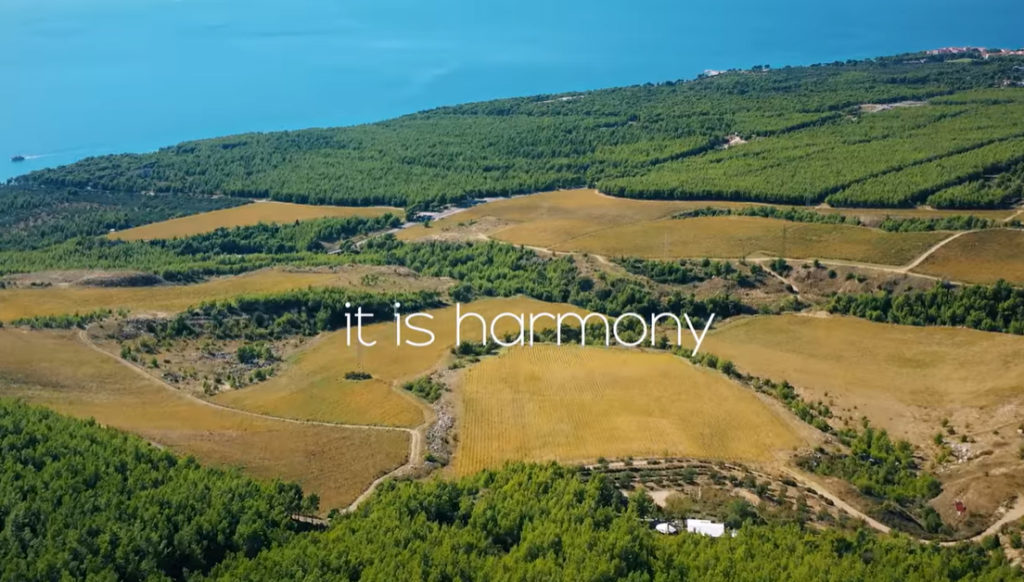
Because when Central Dalmatia invites you as a guest, then everyone who responds will start breathing with full lungs again. Come to Central Dalmatia to taste happiness.
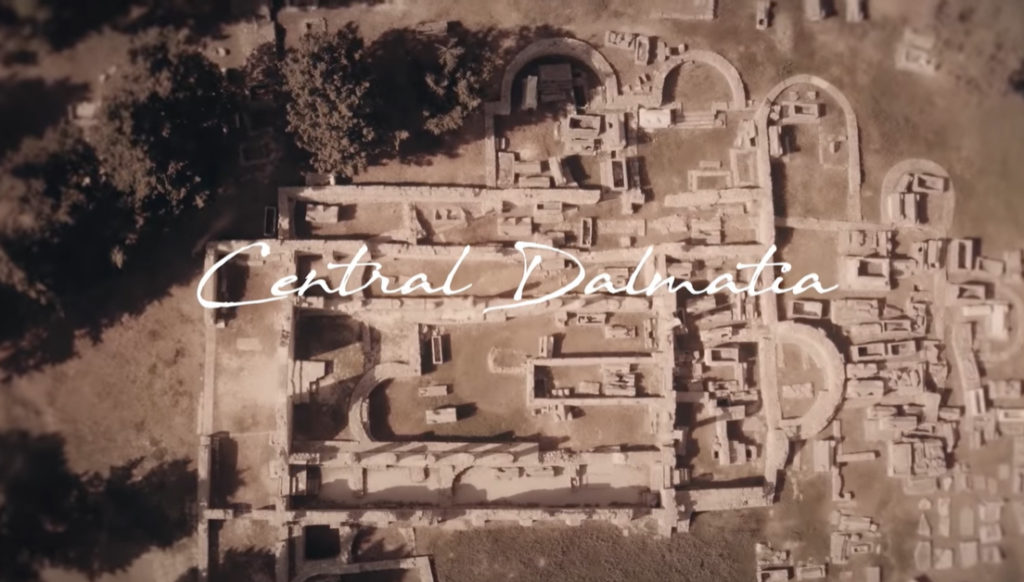
More: dalmatia.hr
Hvar's Arsenal - Winner of the European Heritage Awards/Europa Nostra Awards 2020.
EUROPE’S TOP HERITAGE AWARDS HONOUR 21 EXEMPLARY ACHIEVEMENTS FROM 15 COUNTRIES.
Ahead of the celebration of this year’s Europe Day (9 May), the European Commission and Europa Nostra are proud to announce the 2020 winners of the European Heritage Awards / Europa Nostra Awards. Europe’s top honour in the heritage field goes to 21 exemplary achievements from 15 European countries (for the full list see below).
This year’s impressive collection of award winners range from the restoration of Rubens’ garden pavilion in Antwerp (Belgium), to the revival of the renaissance arsenal on the island of Hvar (Croatia); from the trans-European network “Tramontana” dedicated to the research of the tangible and intangible heritage of mountainous regions, to the sensitive preservation of a cultural landscape formed by subterranean caves and wineries in the province of Burgos (Spain); from the rebirth of the impressive Basilica di Santa Maria di Collemaggio in l’Aquila (Italy), heavily damaged by the devastating earthquake of 2009, to the “Ambulance for Monuments” with an emergency team of craftspeople ready to save endangered heritage in Romania; and from “Scanning for Syria”, a research project carried out by a research centre in The Netherlands, to a major exhibition marking the 75th anniversary of the liberation of Auschwitz, organised in co-production between Poland and Spain.
Heritage lovers and supporters from Europe and all around the world can vote online for their favourite award winners and decide which achievement will win this year’s Public Choice Award. In times of confinement and physical distancing, the European Commission and Europa Nostra hope to inspire a particularly large number of people to discover this year’s award-winning achievements and to share the names of their three favourite winners. The Public Choice Award will be announced in the autumn of 2020. The winners of the Grand Prix, entitled to receive a monetary award of €10,000 each, will also be made public on this occasion.
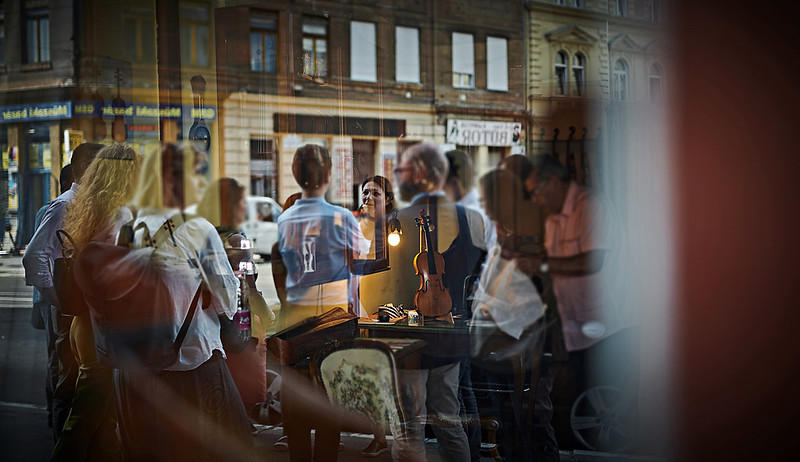
“The COVID-19 crisis has made clear just how necessary culture and cultural heritage are to people and communities across Europe. At a moment where hundreds of millions of Europeans remain physically separated, our cultural heritage continues, more than ever, to bring people together. This year’s winners of the European Heritage Awards / Europa Nostra Awards are inspiring and powerful examples which truly contribute to a closer, more united and more resilient Europe,” said Mariya Gabriel, European Commissioner for Innovation, Research, Culture, Education and Youth.
“In these trying times, our award laureates, with their success stories of how adversity can be overcome through expertise, dedication and teamwork, are true messengers of hope. These exemplary awarded projects demonstrate that cultural heritage is vital to our mental and physical recovery from the trauma caused by the pandemic. Our shared heritage and its custodians can contribute in so many ways: from making accessible cultural content via creative digital solutions to undertaking concrete restoration and rehabilitation works as an act of social and economic rebirth for our cities and villages,” stated Hermann Parzinger, Executive President of Europa Nostra.
The European Heritage Awards / Europa Nostra Awards were launched by the European Commission in 2002 and have been run by Europa Nostra – the European Voice of Civil Society Committed to Cultural Heritage – ever since. The Awards have the support of the Creative Europe programme of the European Union.
The Award winners were selected by independent juries composed of heritage experts from across Europe, upon thorough evaluation of candidatures submitted by organisations and individuals from 30 European countries. The Juries also decided to give three Europa Nostra Awards to remarkable heritage achievements from European countries not taking part in the EU Creative Europe programme, namely Switzerland and Turkey.
In 2020, two new ILUCIDARE Special Prizes will also be awarded from among the submitted applications to the European Heritage Awards / Europa Nostra Awards. The ILUCIDARE Special Prizes will be announced on 28 May. ILUCIDARE is a project funded by Horizon 2020 with the aim of establishing an international network promoting heritage as a resource for innovation and international relations.
2020 Award Winners
(listed alphabetically by country)
Category Conservation
Rubens’ Garden Screen and Garden Pavilion, Antwerp, BELGIUM
Hvar’s Arsenal, CROATIA
Epitaphs of the University Church of Leipzig, GERMANY
The Museum of Fine Arts, Budapest, HUNGARY
Basilica of Santa Maria di Collemaggio, L’Aquila, ITALY
LocHal, Tilburg, THE NETHERLANDS
Subterranean Caves and Wineries of El Cotarro, province of Burgos, SPAIN
The Iron Bridge, Shropshire, UNITED KINGDOM
Category Research
Tramontana Network III, FRANCE/ITALY/POLAND/PORTUGAL/SPAIN
Turin Papyrus Online Platform (TPOP), ITALY
Scanning for Syria, THE NETHERLANDS
Dedicated Service
Education, Training and Awareness-Raising
Cross-border Collaboration for European Classical Music, CZECH REPUBLIC
Arolsen Archives Online, GERMANY
The Secret Life of a Palace, Gödöllő, HUNGARY
Uccu Roma Informal Educational Foundation, HUNGARY
Auschwitz. Not long ago. Not far away, POLAND/SPAIN
The Ambulance for Monuments, ROMANIA
Europa Nostra Awards go to three remarkable heritage achievements from European countries not taking part in the EU Creative Europe programme.
Category Conservation
Manor Farm of Bois de Chênes, SWITZERLAND
Category Dedicated Service
Société de Lecture, Geneva, SWITZERLAND
Education, Training and Awareness-raising
SARAT – Safeguarding Archaeological Assets of Turkey, TURKEY
The Call for Entries for the 2021 edition of the Awards is now open and the application forms are available on the Awards website. Submit your exemplary project and share your expertise and success!
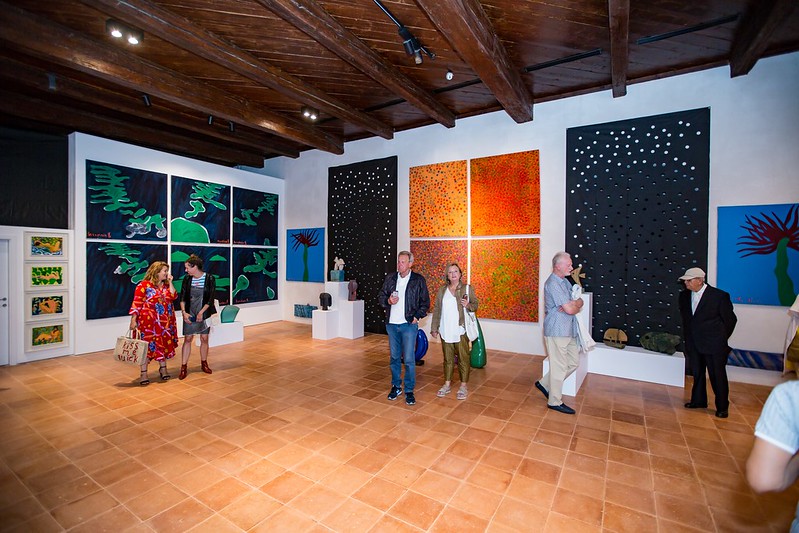
Hvar’s Arsenal
May 07, 2020 | Conservation | Croatia | Hvar
The Arsenal building, centrally located in the town of Hvar, the most important harbour of the island, has been carefully restored and successfully transformed into a vibrant cultural centre for visitors and the local community alike. The Croatian Ministry of Culture and the Ministry of Regional Development were partners to Grad Hvar in the 30-year project to rehabilitate Hvar’s Arsenal. The project was funded by the Hvar municipality, the Ministry of Culture, the Ministry of Regional Development and Split – Dalmatia County with additional funds coming from civil associations and the European Regional Development Fund.
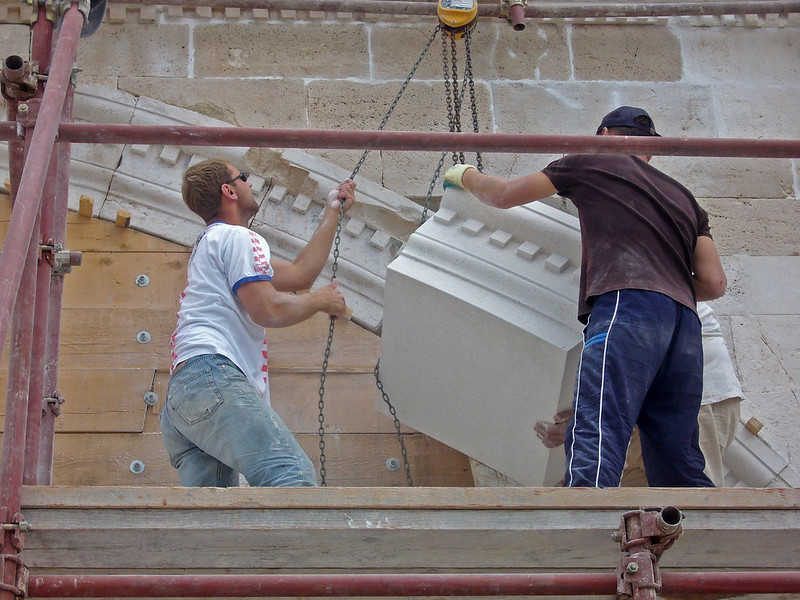
The construction of the medieval Arsenal began in the 13th century. Archaeological finds indicate that it was used as an arsenal since the 3rd-4th centuries AD. It was not until the early-17th century that the building achieved its present appearance, comprising a boatyard on the ground floor with a theatre and arsenal storage on the upper floor, which was adapted to a gallery and reception room.
The extremely demanding project to rehabilitate the Arsenal included documentation, research studies and a conservation report (1989-2005); the reconstruction of the load bearing structure (2005-2009); archaeological excavations (1994-1996 and 2014-2015); phases of reconstruction and renovation (2014-2018); and concluding work on the interior of the building, including updates to the theatre, gallery and reception room (2018-2019).
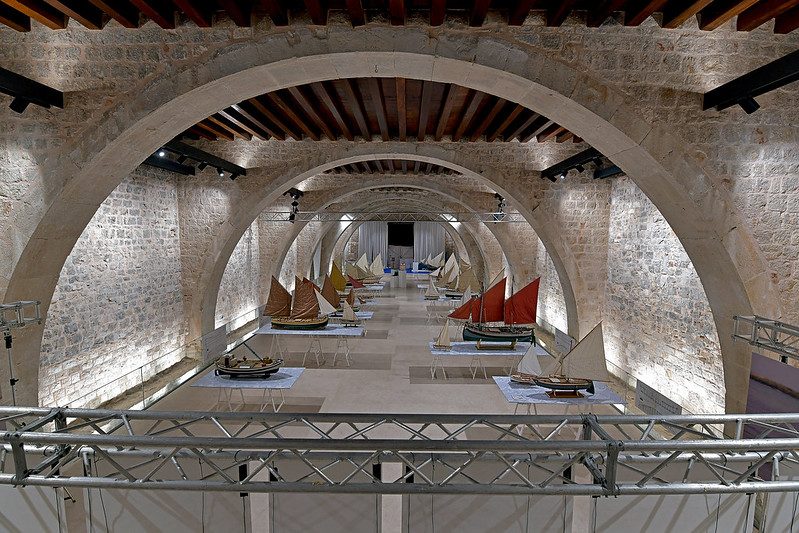
The ground floor space has retained its original character with exposed stone walls and arches while new multi-purpose facilities have been installed, providing Hvar’s citizens with a venue to host a wide range of cultural and social events. The original Venetian wooden beams are still present on the ceiling of the gallery on the first floor while some other original features of the building, most notably the frescoes and theatre boxes have been kept and restored to their original form.
The necessary new additions to the building were designed in a contemporary style, thus emphasising the original character of the building. These new components to the building’s historical layers have successfully evoked a dramatic meeting of old and new.
The Jury noted that “this respectful revitalisation project has adapted a very significant building to the modern needs of the community and adds a new cultural dimension to the tourism of the area. It represents a long-term effort to ensure the preservation of the Arsenal, a site of high heritage value. The stratification of the 16th-century building and the later 18th-century theatre has been properly recognised in the conservation works. These sites are evidence of a long history of international trade in Europe and are significantly located in the harbour area where they continue to play an important role as a place of connection”.
More information
www.hvar.hr

Stories from Bol are travelling the world!
Would you like to find out more about organically grown products that you can eat in Bol on the island Brač or where to buy locally produced goat products and extra-virgin olive oil? Maybe you are interested in finding a fisher monger selling freshly caught fish or restaurants where you can enjoy local specialities prepared with wild herbs? Or perhaps you would like to get lost in the sweetest daydreaming while listening to the beautiful sounds of the guitar?
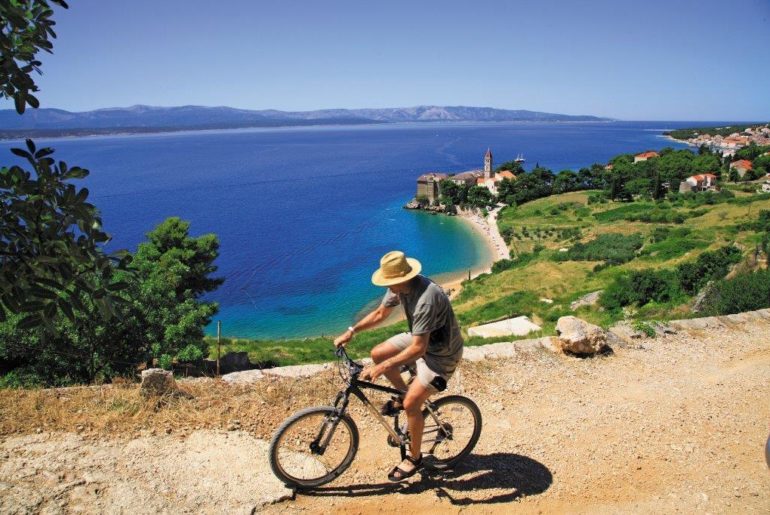
Our stories from Bol, a new project by the Bol Tourist Board (TZ Bol), will tell you all. With an idea to emphasize the unity in the local community, their mutual support, and the importance of the local population with tourism written in their DNA, TZ Bol has brought the locals together to send a simple message “See you in Bol!”,to all those who have already visited this beautiful town, as well as to future visitors of this delightful and scenic town located in the south of the island of Brač.

They wish to share first-hand stories with their guests, stories that cannot be found in magazines, about irresistible tastes and scents of local food and products, about wild plants and herbs, and about an authentic experience of this town in all its beauty.
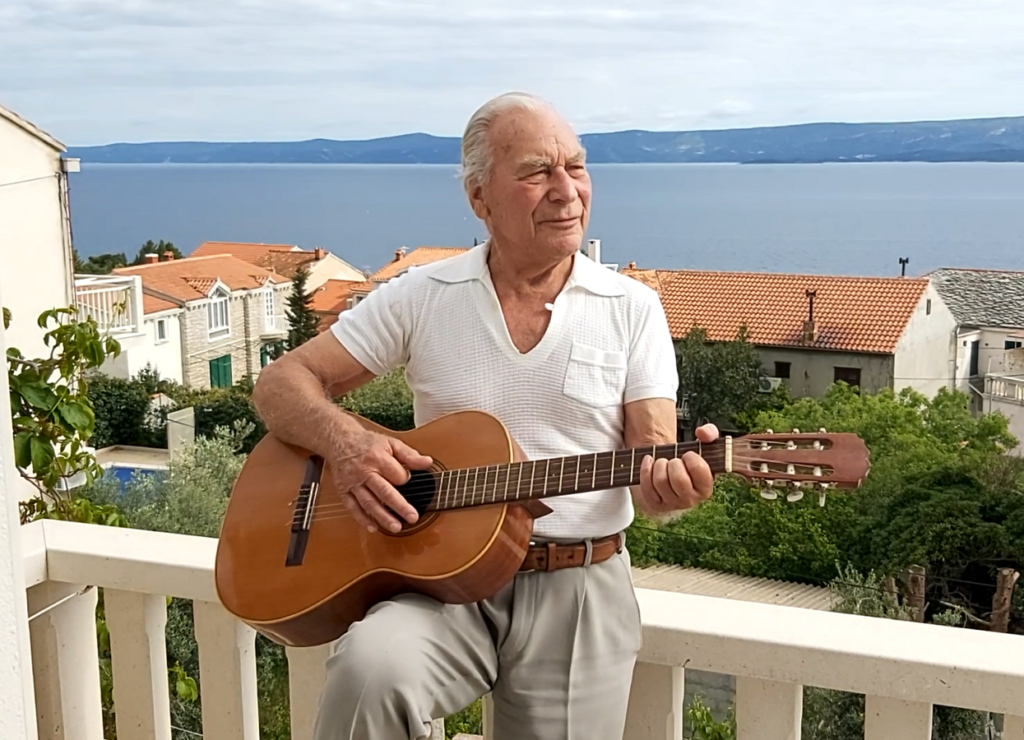
And here we do not only refer to the famous Dominican monastery from which you can enjoy a scenic walk to one of the most beautiful beaches in the world, Zlatni rat, or attractive biking trails, but also to the generations of dedicated people that make this small town so charming.
In the perfectly imperfect video clips and photographs, Franci Marinković from the Pusa restaurant shares his story.
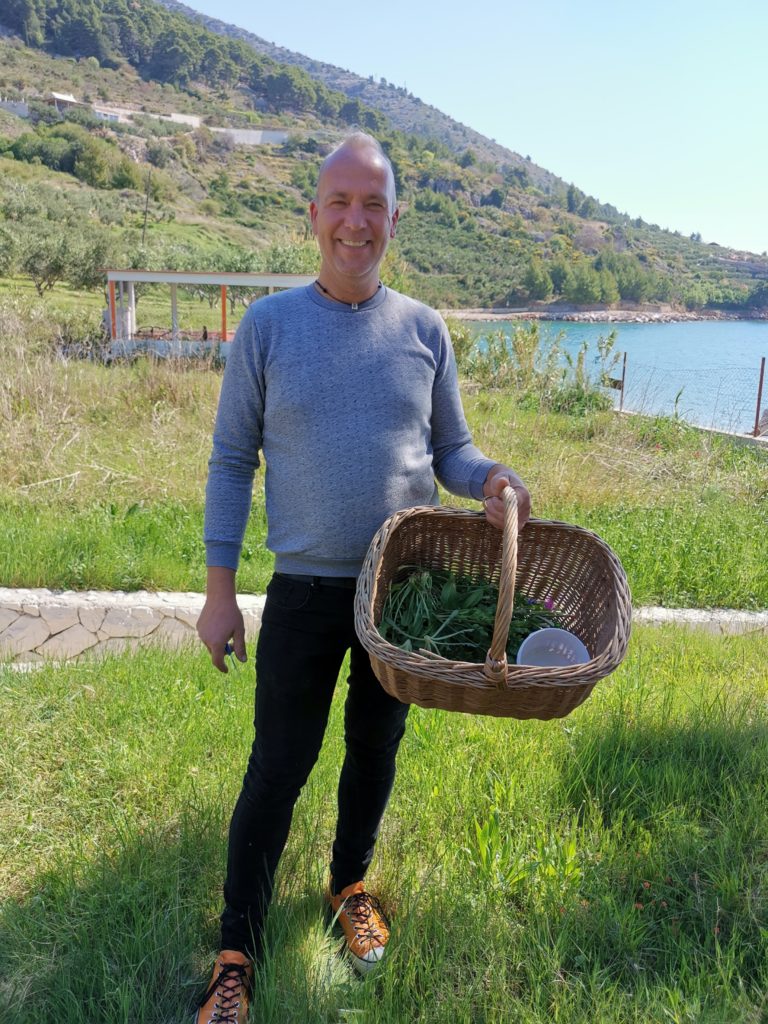
Apart from the adored specialties with wild herbs, he always enchants his guests with singing and guitar playing.
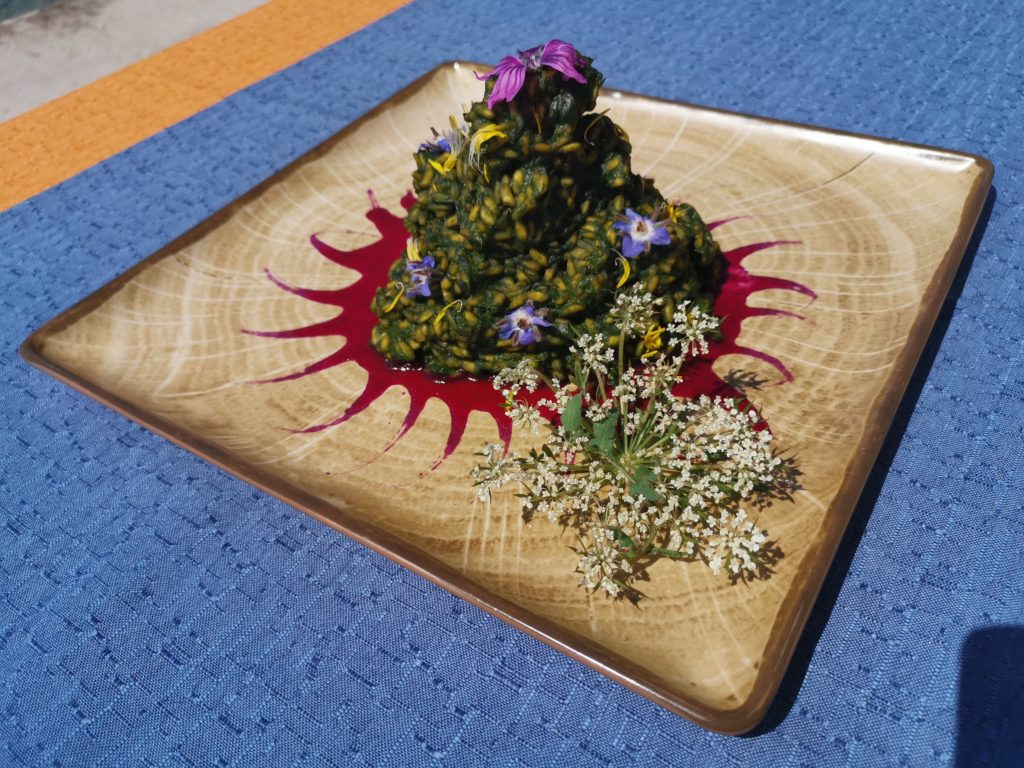
For almost ten years, Meri Bodlović and her husband are dedicated to organic farming, and olive and wine growing on their family farm.

Mirjan and his Mom, Irena, are successfully combining farming, production, and catering.
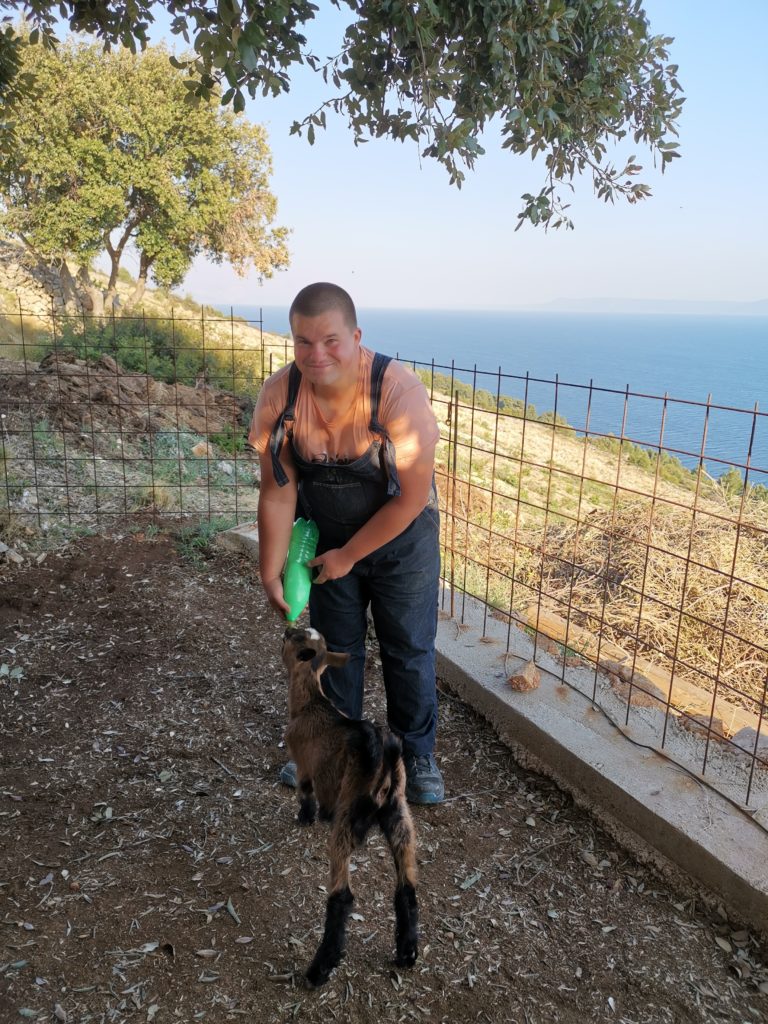
Their specialty, Cheese in sugar, can be tasted at their tavern Dišpet.
Nikica Bodlović from the Bodlović family farm proudly talks about olives and their family olive grove with 250 olive trees and golden drops of their extra-virgin olive oil.

Pravdan Katić, a professional fisherman with 15 years of experience, enthusiastically talks about his job. While playing the guitar, a favourite summer instrument, Pjerin Jugović sings and plays the same way he used to many years ago to attract tourists.
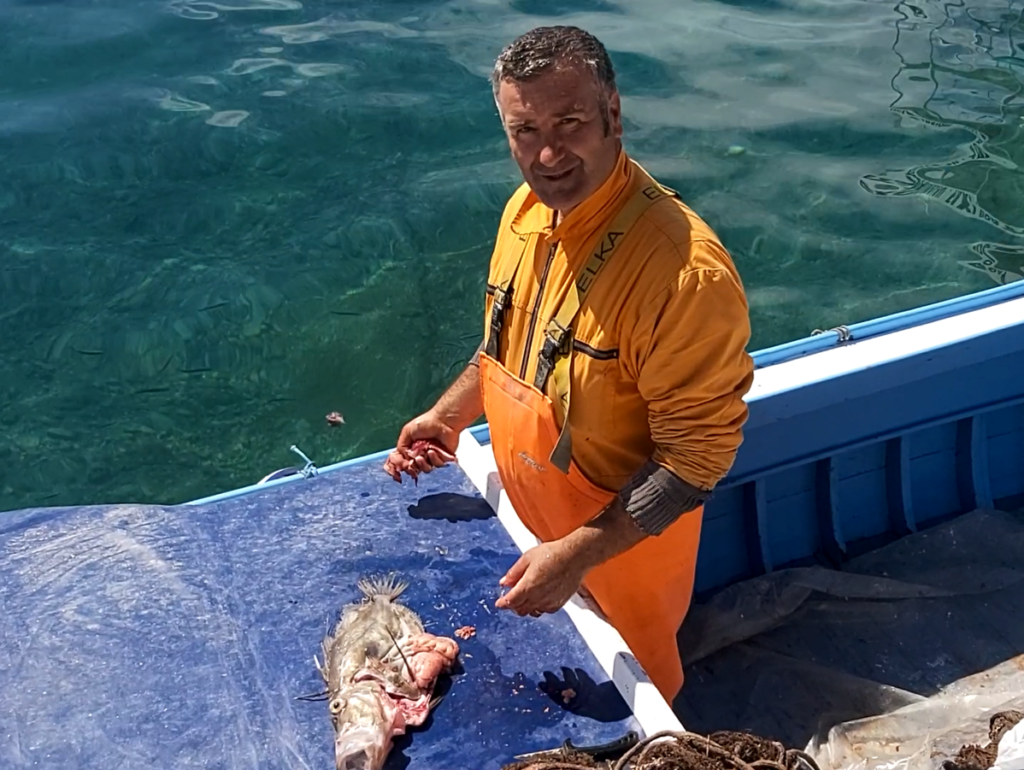
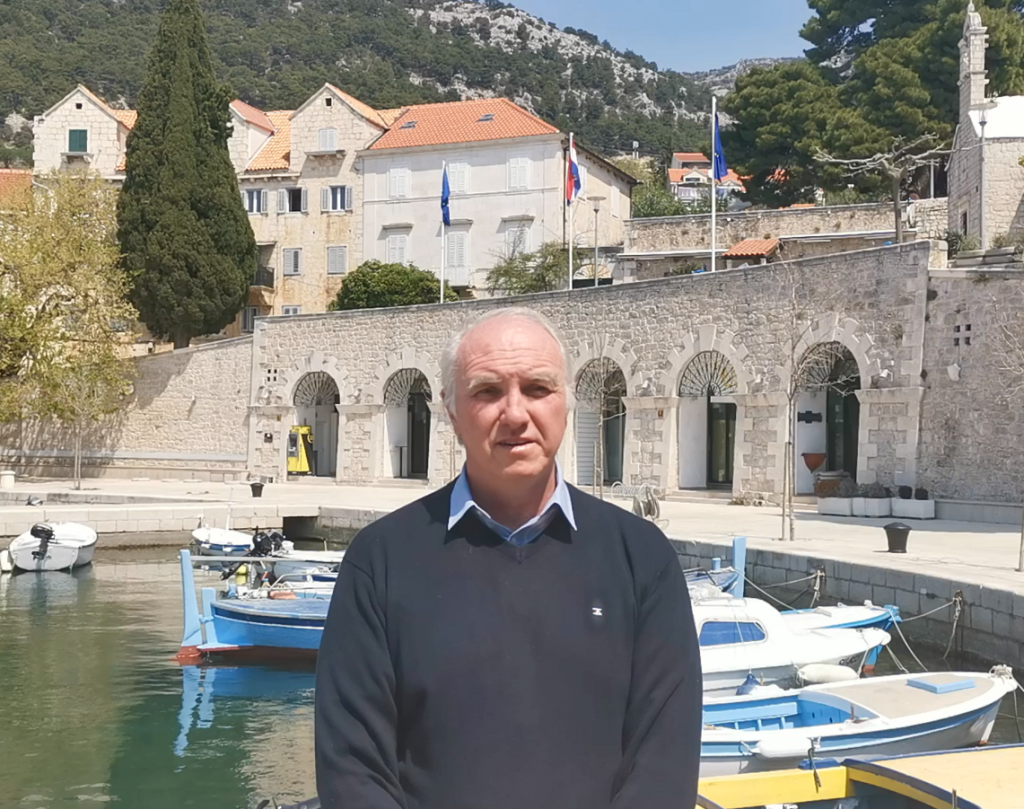
The director of the Bol Tourist Board, Markito Marinković remarks: “This project aims to engage the local population in active promotion of their town. We would like to introduce our guests to people that will be there for them during their stay in Bol. I believe that this is a winning formula because who can tell the stories of Bol better than its people? This is also an opportunity for Bolke and Boljani to actively participate with their suggestions and engagement in the joint promotion of our Bol.”
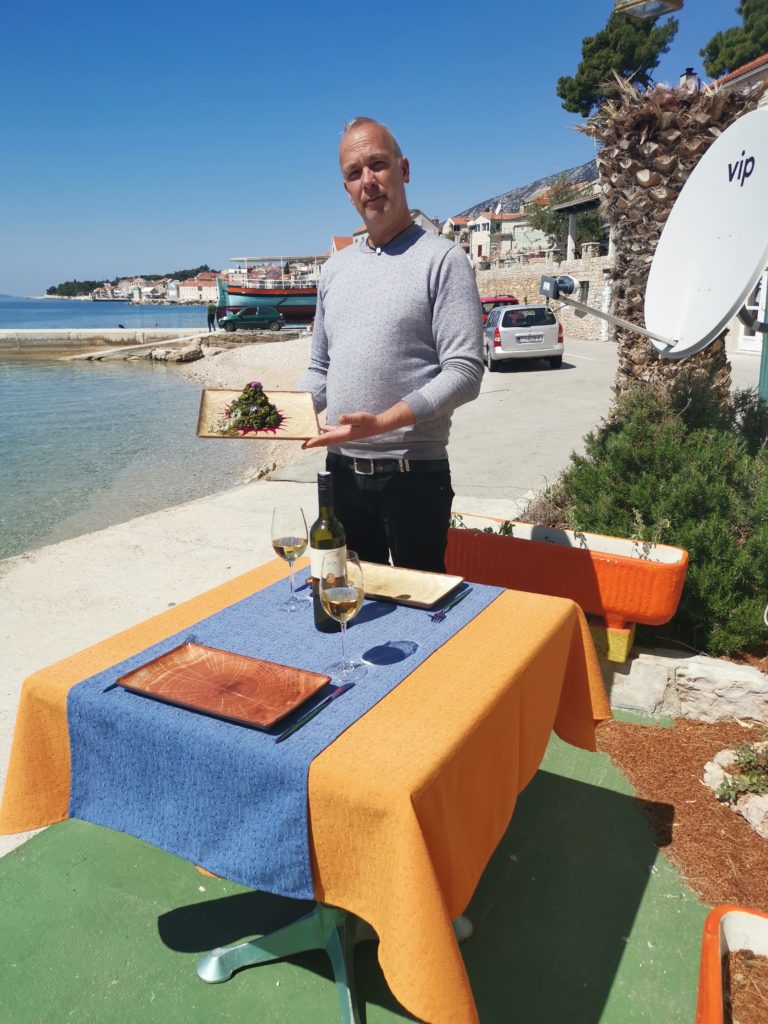
This is just the beginning of the TZ Bol narrative that will present accounts of their citizens and positive local experiences over social media, IG and FB: Bol - Bol - Symbol of the Adriatic, in the following months.
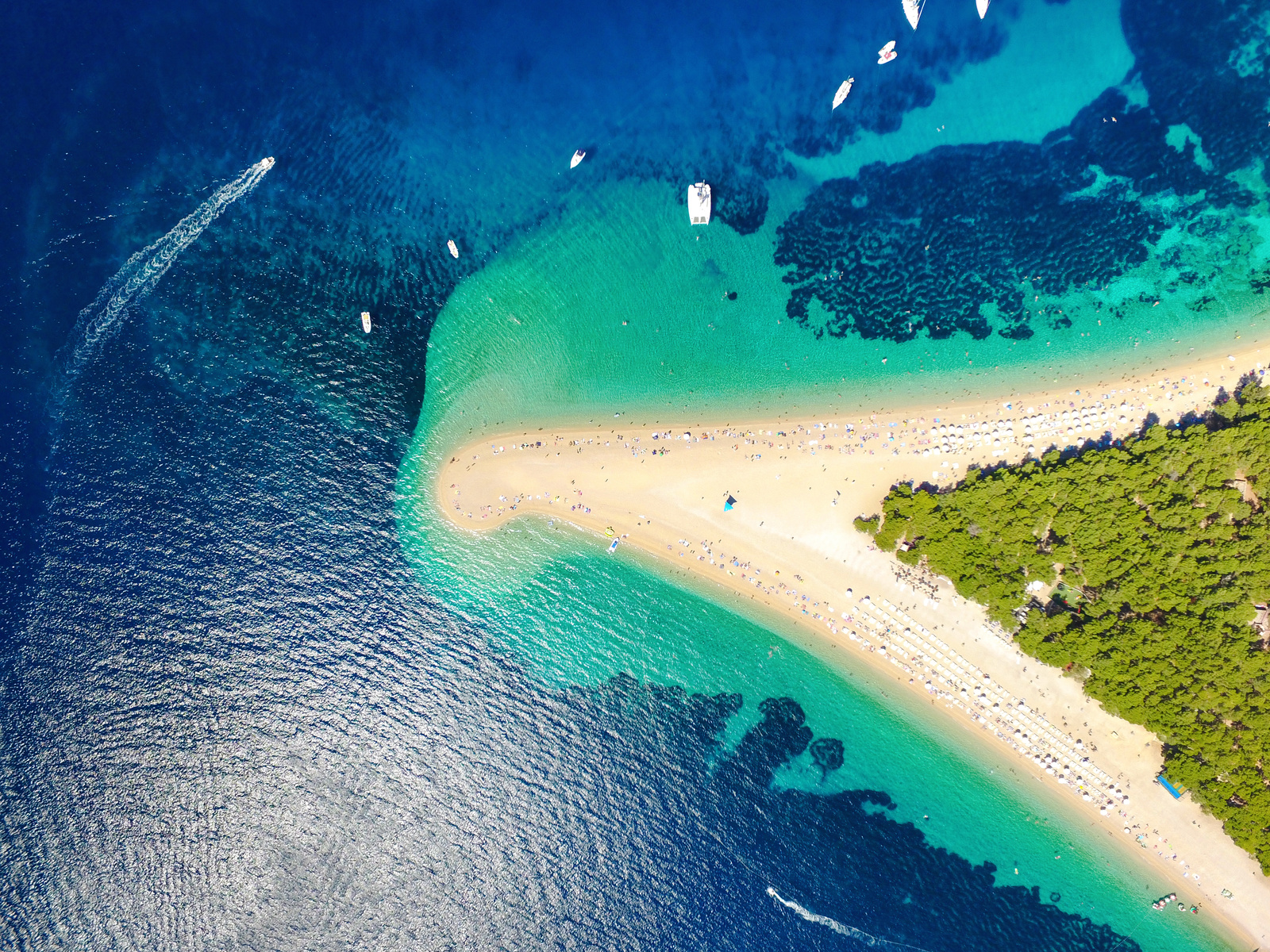
PROUD AND UNITED IN PRAYER The 500-year-old Hvar tradition of the Procession "Za Križen" will continue this year
Procession "Za Križen" (Following the Cross) is a unique religious rite that has been held continuously since the year 1658
There is no island sacral manifestation that is more monumental, and at the same time more mystical, touching and traditional than Hvar’s internationally known Procession "Za Križen" (Following the Cross)

It is not just a ritual in which the faith and piety of the people are manifested; in the case of Hvar, it is an event of the people that has been reflected in its continuity for five centuries. It takes place on the night of Maundy Thursday and Good Friday, and is performed as a religious sequence consisting of six processions that simultaneously move to six Hvar towns. And they never meet during this night-time procession.
The procession is a unique religious rite that has been held continuously since the year 1658, having experienced a partial interruption during World War II. Back in 1943, the Italian fascist authorities forbade the island to participate in the procession. Only the closest entourage participated in the event with the crossbearer. One year later, in 1944, the procession was banned by the Nazi authorities on the island.
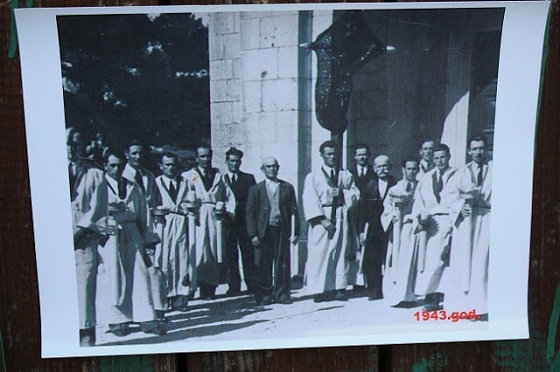
At that time, in El Shatt, there were in fact a large number of people from Hvar who initiated that tradition from their native island and organised the procession in Egypt, with the consent of the British refugee camp command. Dining rooms represented churches, and even improvised altars were erected. About 8,000 people participated in the procession, including the Allied soldiers. The memory of this procession, apart from a few preserved photographs, has also been preserved by the crosses from El Shatto which are kept in the parish churches. The Procession of the Cross was inscribed on the UNESCO List of Intangible World Heritage back in 2009.
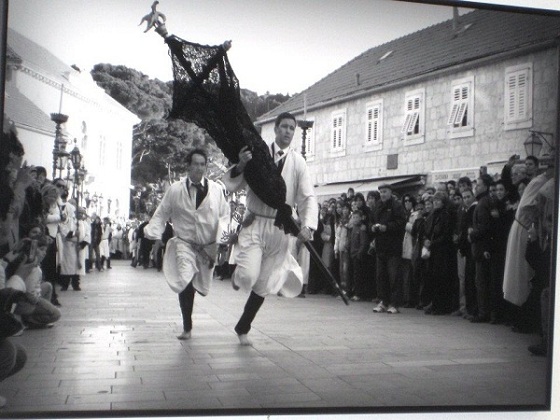
Once again this year, despite the coronavirus crisis, this unique religious event will take place from Good Thursday to Good Friday, on April the 9th, 2020. Only the closest entourage will participate in the event with the crossbearer, following all of the recommended social distancing measures.
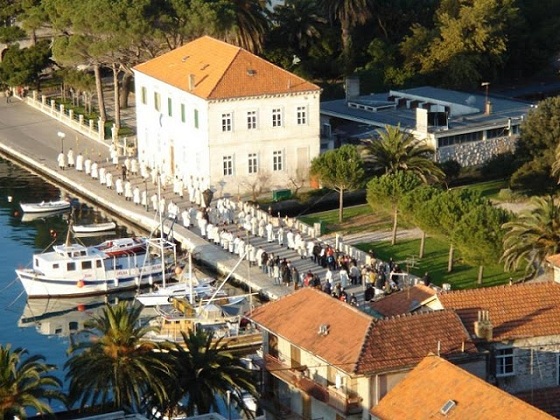
The highest honour in this story is worn by the bearer of the cross, a key person carrying an 18-pound heavy cross.
This role is of great pride for every citizen of Hvar, and in life, sometimes with a wait of 20 years, only a few get to enjoy this rare opportunity. Most often as a fulfillment of a vow made to oneself, or at the family level.
In deep silence, filled with prayer, and deep religious worship, the cross bearers and believers, in a long continuous column, begin their journey with the procession, presenting in the most beautiful way a memorial of religious love always bound in suffering.
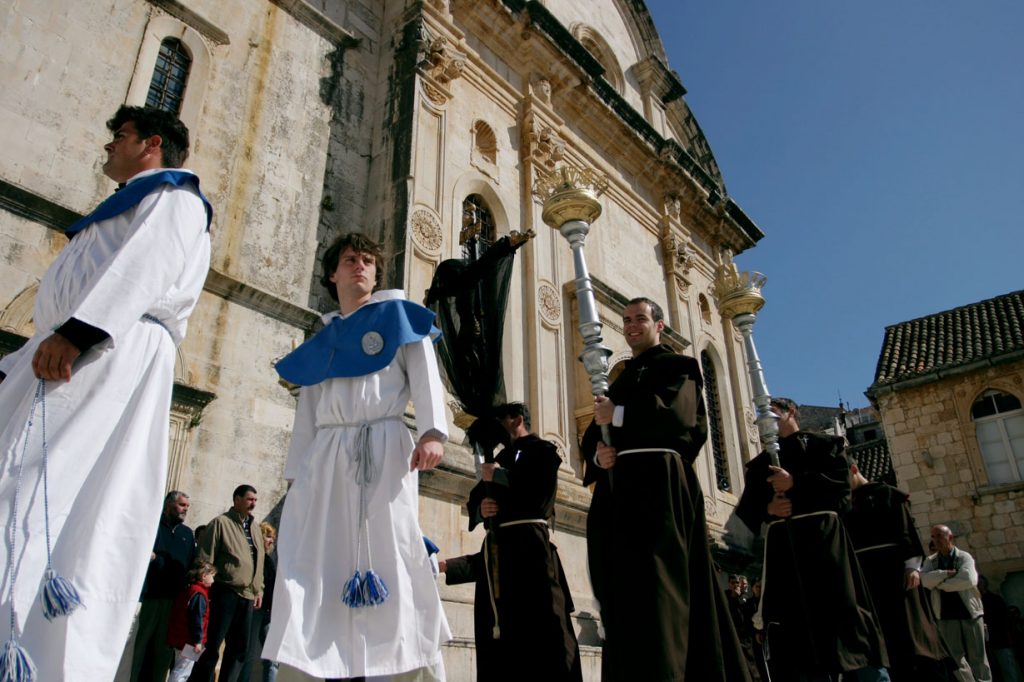
The procession simultaneously starts from the parishes of Jelsa, Pitve, Vrisnik, Svirce, Vrbanj and Vrboska. It has moved for centuries in a given trajectory, clockwise, without meeting and ending in the initial parish. If the processions were to encounter one another during that long night-time journey, the people would mark something like that as enormous bad luck. The procession also has its sacred music, an eighth-century octosyllable text of the Lamentations of the Virgin Mary, performed by cantors. The Procession Following the Cross is one of Hvar’s traditions, which every year records an increasing number of believers from the country and the world. They usually describe their participation in this event with the word - magnificent.
Photo: archive of tourist boards of the island of Hvar
More: TZ Jelsa
Intangible heritage of Dalmatian Zagora – an important element of cultural and national identity
Apart from series of natural and gastronomic goods, our country is also proud of admirable collection of UNESCO-protected intangible cultural heritage - by representation first in Europe, third in the world!
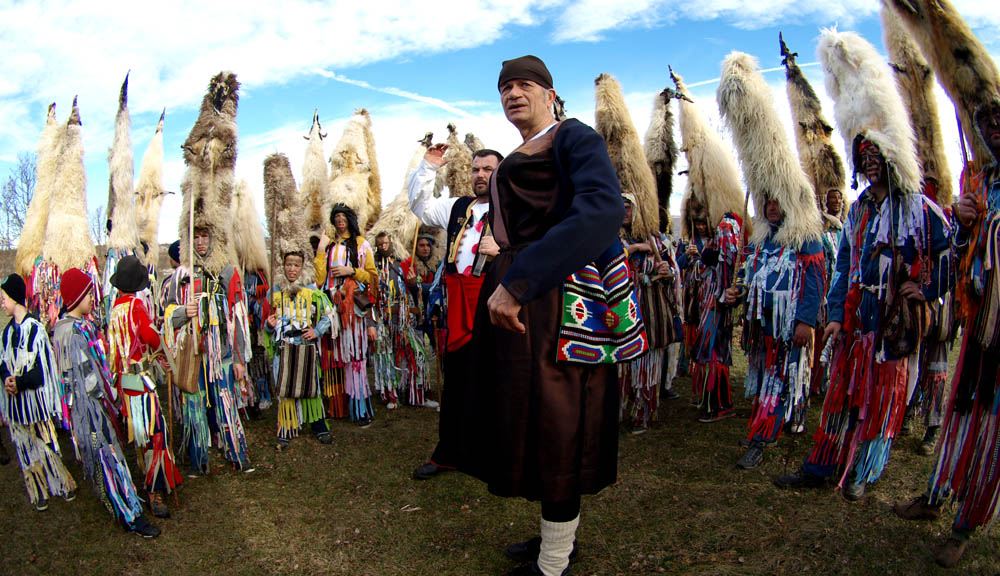
Considering the amount of cultural heritage that our country cherishes, the list is expected to expand in times to come.

Intangible heritage encompasses different shapes of folk and traditional cultural expressions – language, oral literature, music, dance, games, mythology, ceremonies, customs and traditional crafts; but also living communities where these shapes of culture are being cherished in.

The most famous of them all, the pride of Sinj and Cetina region, is an equestrian game Sinj Alka. It has been established in memory of the victory of Sinj people against the Ottomans in 1715; and as a gratitude to Our Miraculous Lady of Sinj who, according to a legend, saved Sinj and its defenders. From then on Alka has been performed in almost uninterrupted continuity. The game is regulated by Alka statue book that includes rigorous rules that ensure its authenticity, its origin and purpose. It has been protected by UNESCO since 2010.
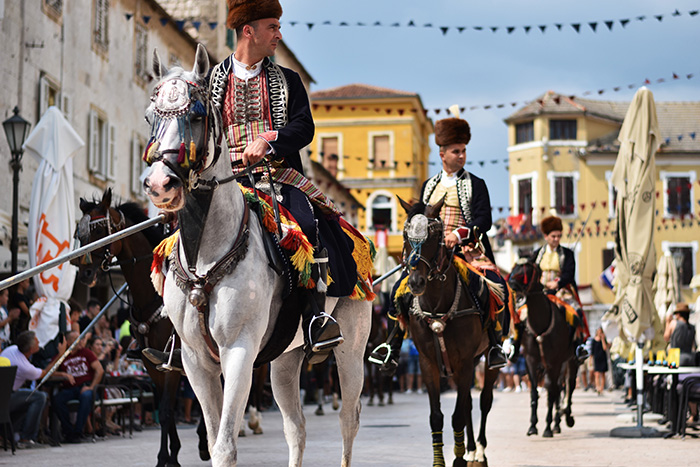
Ojkavica is a characteristic singing with many melodic fineries, the most basic being shaking technique on the syllabus "oj", which can be at the beginning, in the middle or at the end of the song. Two or more singers sing in multi-part, strongly and loudly, while the song lyrics are mainly very unique and suggestive.

It is sung in entire Dalmatian Zagora, while in Sinj its traditional name is rera. It has been protected by UNESC also since 2010. Even to this day it is passed on from one generation to another thanks to perseverance of cultural-art societies and folklore groups.

With their continuous efforts they are saving rera from oblivion, as well as another UNESCO-listed cultural good – Silent Dance. It is a type of dance cherished in Dalmatian Zagora and unique for the way in which is performed – in circle, or more often – in pairs that move in circles or freely along the dance area.

Sometimes it is danced accompanied by rera, ganga, ojkavica or bagpipes, but in Dalmatia Zagora, almost exclusively without any musical background.

Today it is danced (although more rarely than before) for carnivals, on fairs, folk parties, weddings, local, regional or international folklore festivals and on local festivities in patron saints’ honour.

Ministry of Culture of Republic of Croatia protects numerous endangered intangible goods, with aim to cherish, protect and preserve them. One of these goods is the art of making boats in Otok near Sinj. It is a specificity of this region, which arose from the fact that Otok is in near vicinity of the Cetina river.

Written records about the beginnings of boat building do not exist, but the oldest preserved boat is about seventy years old. Economic activities (mostly agriculture), the number of inhabitants and the very position of the village are the main reasons for making Otok people use boats more intensely than others in their surroundings. Depending on the river depth, they used to paddle while sitting or even standing.
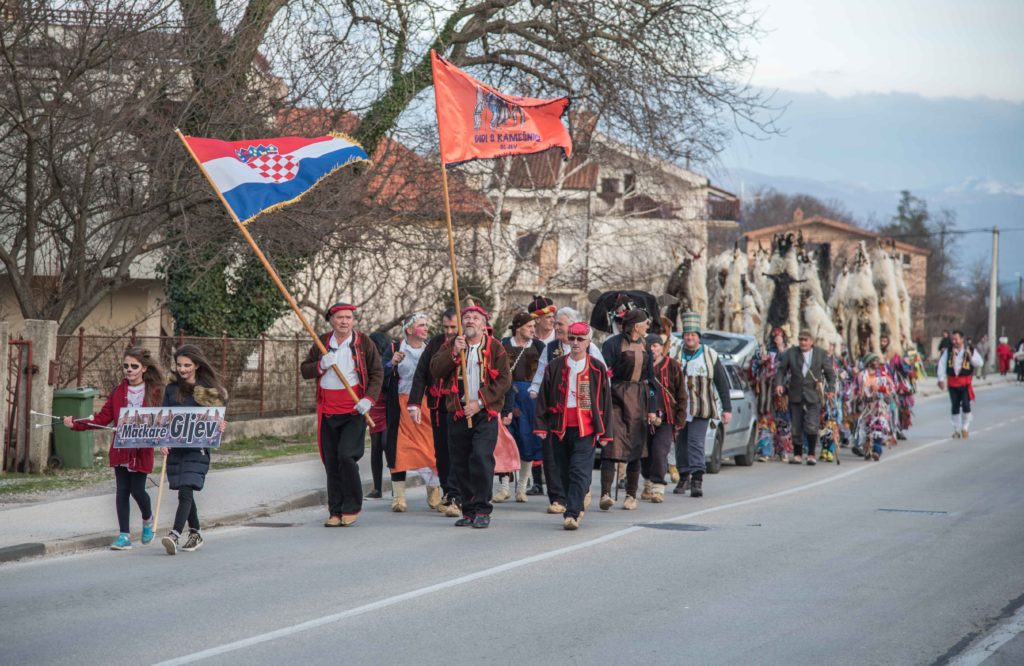
Annual carnival processions in villages under Kamešnica in the area of Sinj and Trilj town and Otok municipality have a long tradition and are the best promotor and keeper of carnival customs in these areas.
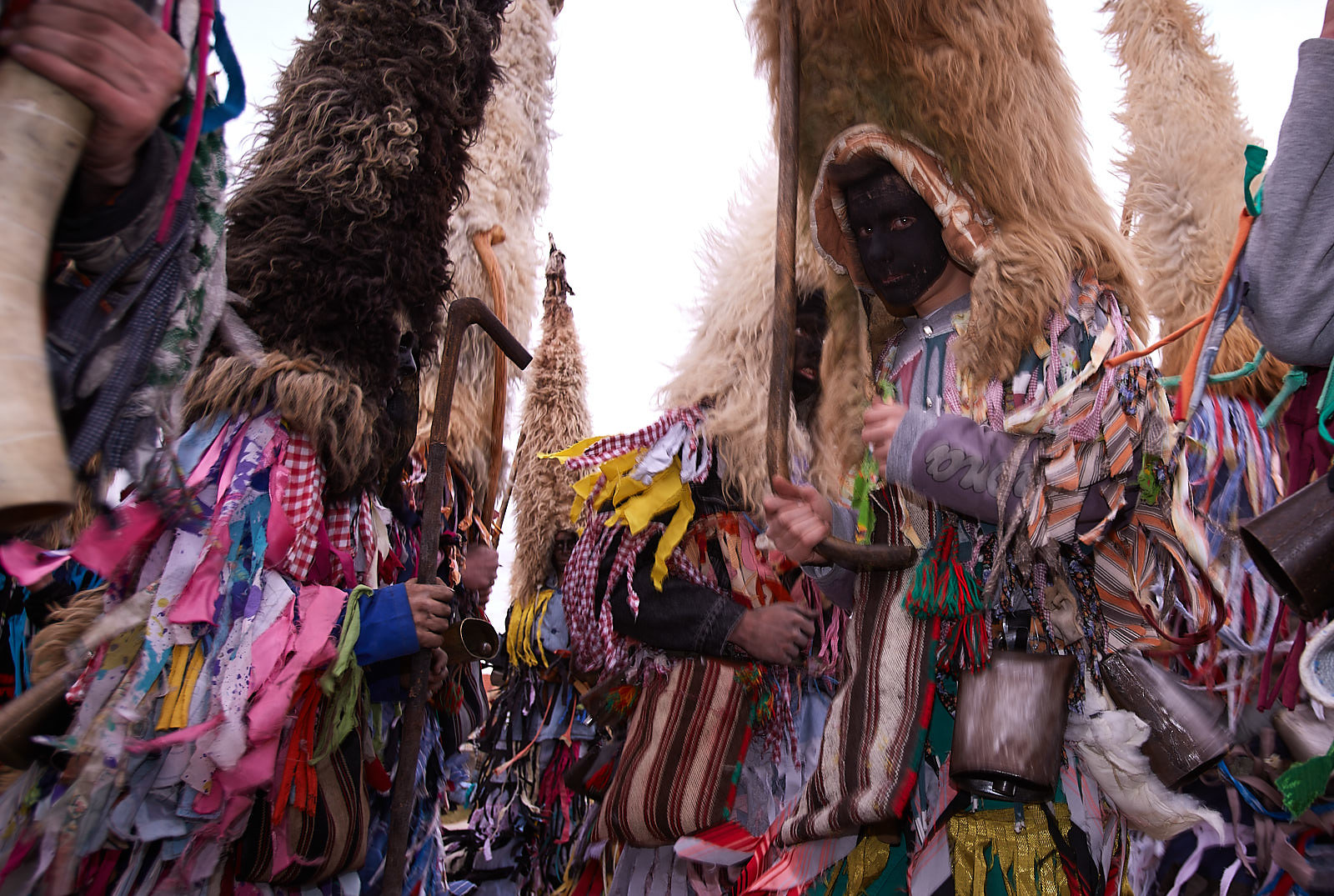
The processions are unique and original way of presenting ancient customs, frequently accompanied by the sounds of carnival bells and other specific rituals. The most attractive part of the procession are noisy and colourful didi, with 1,5 metres high sheep skins on their heads and bells around their waists.
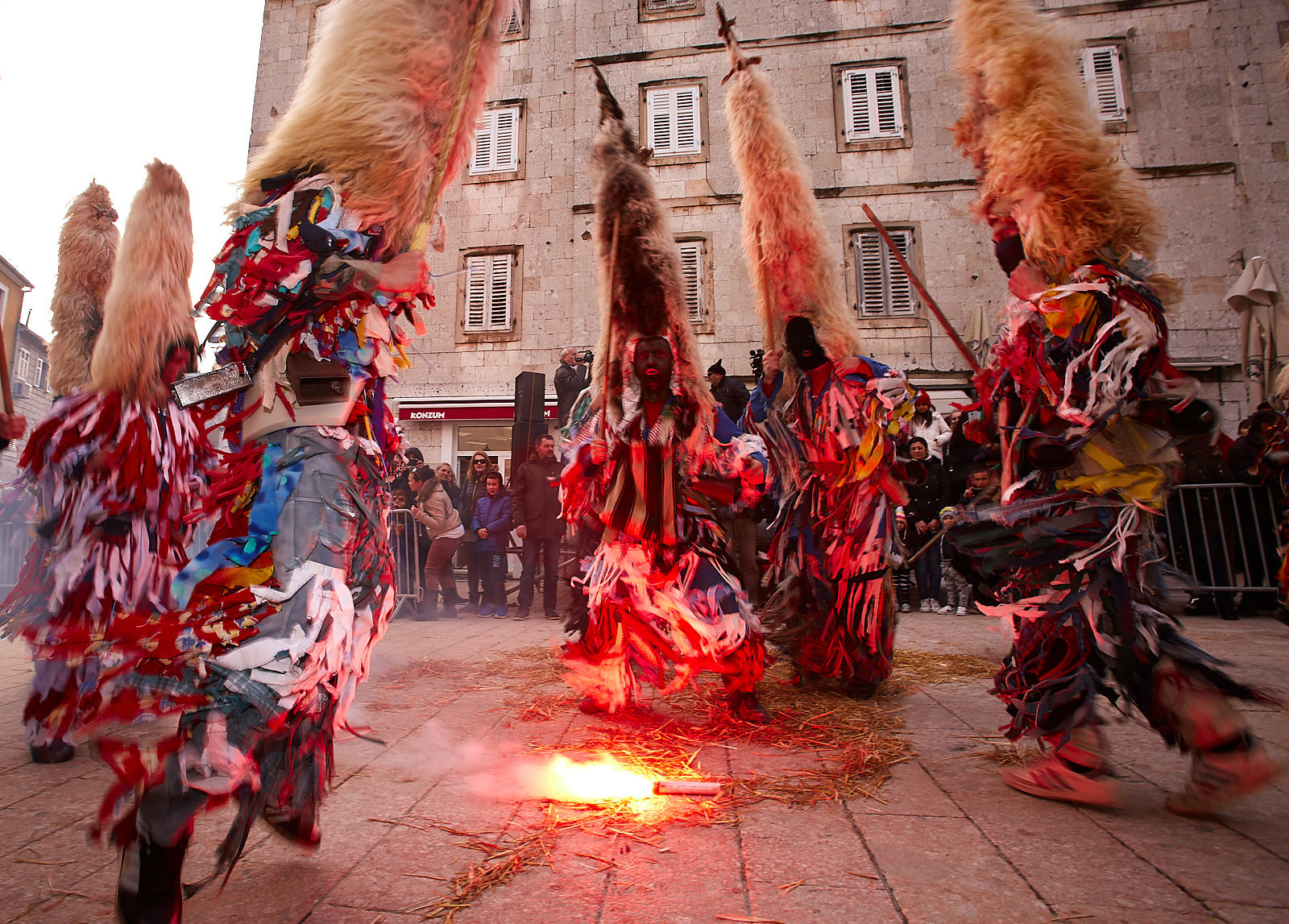
They are dressed in old clothes with colourful tassels and embody ancient struggle of good spirits and the winter, which they try to chase away with noise and jumping. Didi from Kamešnica have recently been guests of a famous carnival in Sardinia, where they have successfully showed a part of our tradition outside our borders.

Klapa singing is a traditional multi-part a cappella homophonic singing. Klapa songs are recognizable by their music structure, harmony, melody and lyrics. Despite various external influences, klapa song has kept its originality and faithful audience till today.

One of the old crafts that are on the verge of extinction is – traditional hand-wheel pottery from Potravlje. It was announced intangible cultural good in 2013, and the Ministry of Culture has nominated it for UNESCO protection. In our regions it has been used since the 4th century B.C., while in greater part of Europe this type was long ago replaced by foot-wheel pottery.
Unique
artistry of making clay dishes in this fashion has been only preserved in
Potravlje village in Hrvace Municipality – in only two families: family of Jure Knezović, where his sons Ivan and Pile have carried on the tradition, and
the family of Jure's brother Dušan Knezović.
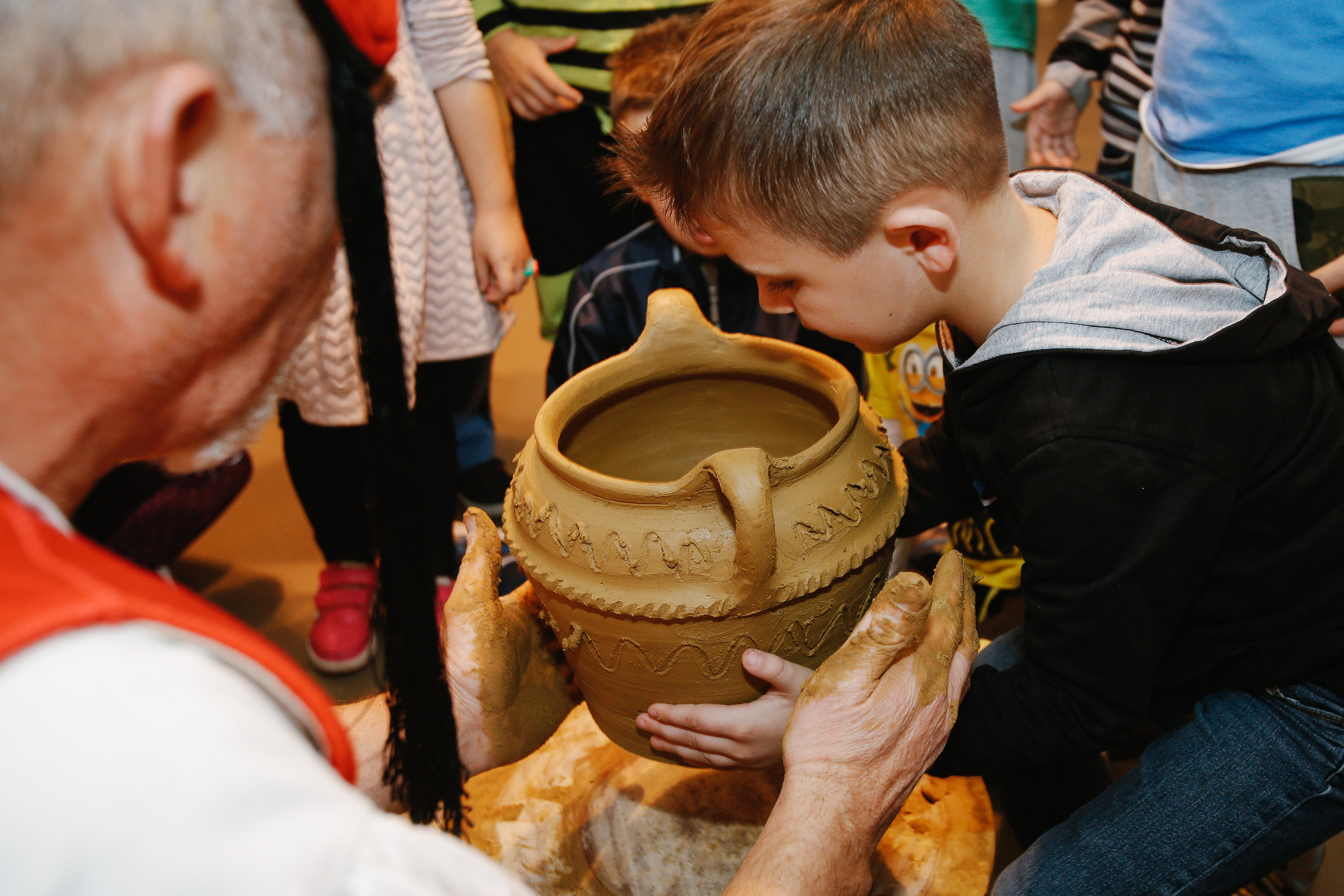
The potters from Potravlje, or, as they are usually called in this region, bakrari used to supply the whole Cetina Region and greater Dalmatia with their products
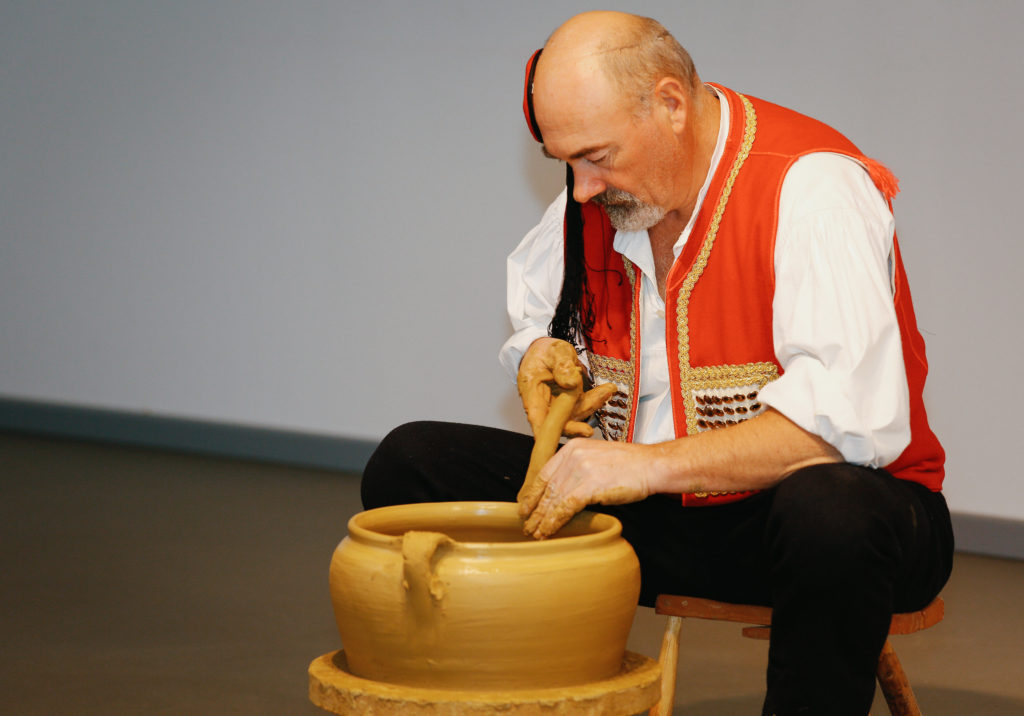
Up to the present day, they have sold their products at fairs in Sinj, Trilj, Zadvarje, Vrlika, Metković, Benkovac, Split and elsewhere. Apart from traditional pots, new types of pots are made nowadays, for instance, amphoras (for tourist purposes), flowerpots or pitari, and various miniature traditional pots sold as souvenirs.

It is of utmost importance to preserve this part of our traditional culture and enable it to continue developing by passing on the knowledge onto young generations. With this goal in mind, Sinj Tourist Board, supported by the Ministry of Culture of Republic of Croatia, has been regularly organizing workshops of traditional hand-wheel pottery from Potravlje. For this effort it was awarded Plautilla award in category of The best cultural-tourism product. Great attendance rates and good feedback from foreign and national visitors, especially the young ones, bring hope that this craft is to live on and blossom.
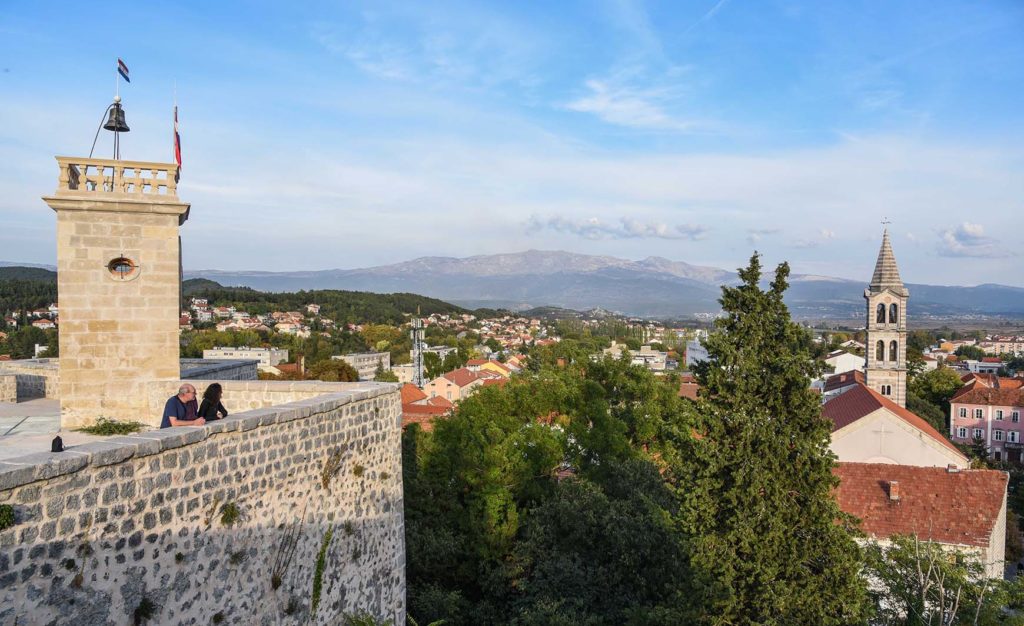
Preserving endangered intangible heritage is an important factor of not only cultural and national identity, but also of continuing efforts to blend these unique and priceless goods into our great tourist offer, all in correspondence with the laws of sustainable development.
More: www.dalmatia.hr
Photo: www.dalmatia.hr, croatia.hr, archive of tourist boards of Split – Dalmatia County

Roman roads will take you back to turbulent history of Central Dalmatia!
Split-Dalmatia County can be explored in various ways, and one of them is travelling along old Roman roads, which are a proof of former turbulent historical periods.

Soldiers from Roman legions marched along them, while numerous pilgrims and others searched a better place for living along this extensive network of roads.
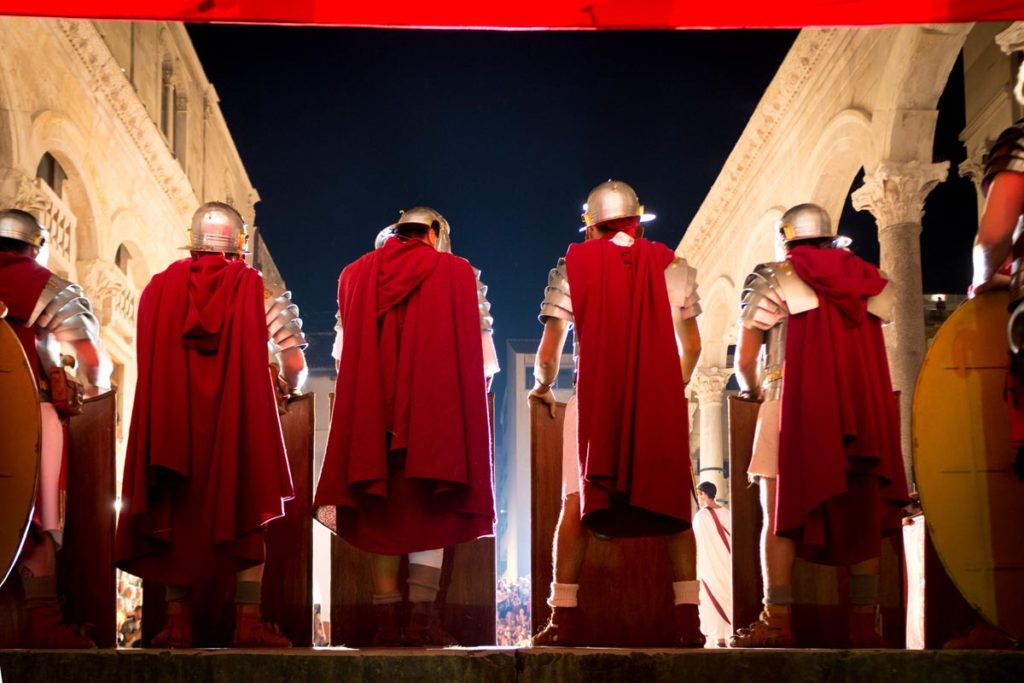
Former busy roads are today transformed into routes full of interesting remains, old military camps and artefacts from archaeologic sites. Central Dalmatia has a lot of them, and therefore this area is a bate for tourist who like to jump backwards to history.
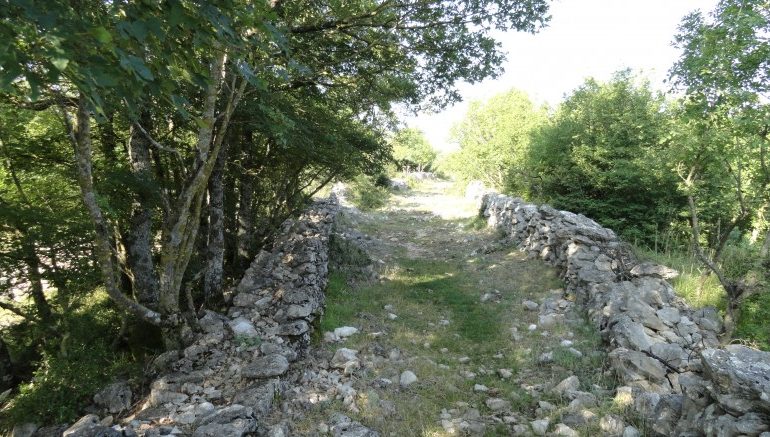
Why go to Rome, when Roman roads can be seen here as well? Their centre was in Salona, old Roman town near Split. Salona is not by chance called antique jewel, its historical structure and infrastructure displays all the wisdom of its builders, impressive for even today’s visitors.

Where will Roman roads take you? In various directions, through protected landscapes of the Cetina canyon, Prološko lake, Red and Blue Lake in Imotski, Vranjača Cave, along the remains of old-Christian necropolis, roman military camps, sacral buildings, historical forts and numerous fortifications.
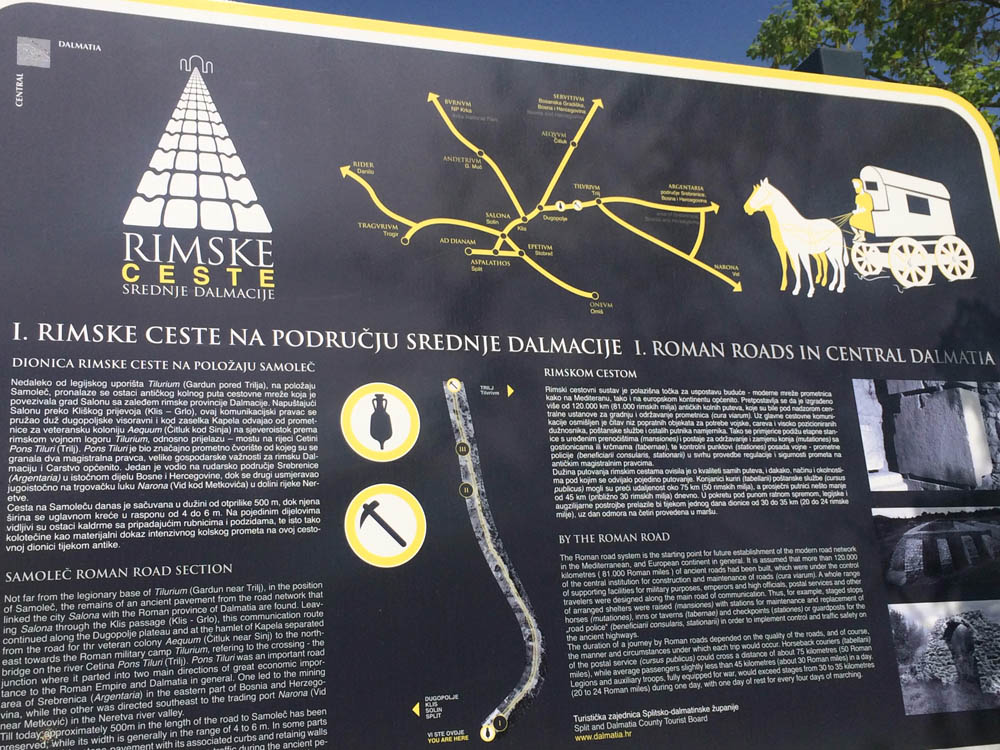
Their tourist, scientific and historical relevance was upgraded in 2012 by Joško Stella, director of Split-Dalmatia Tourist Board and Lino Ursić, external associate on project of archaeological tourism of the County. In attempt to save old roads from oblivion, they started a project called Roman Roads of Central Dalmatia.

The project surpassed its borders with an exhibition opened on 6 April in Archaeological Museum in Zagreb. The goal was to get people from our capital and numerous other tourists familiar with significant part of Dalmatian and Croatian history.
While developing the project, its initiators have made a big progress regarding preservation and evaluation of Dalmatian road history. For example, in the centre of tourist attention they managed to place Tilurij, remains of old Roman military camp near Trilj, to which leads a network of Roman roads.
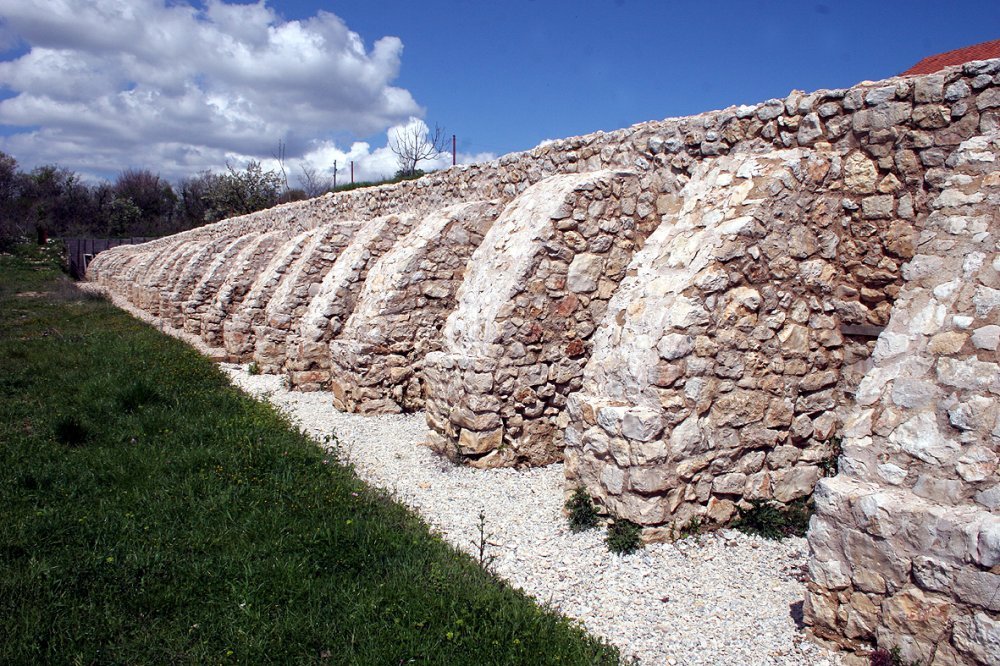
Inside this historical edifice Roman bedrooms will be reconstructed as an interesting tourist product. It is the first project of this kind in Croatia, who falls into category of experimental archaeology. Furthermore, it presents a new platform in tourist offer of Split’s hinterland. Numerous participants who have entered the project testify of its importance: Trilj town, Split-Dalmatia County, County’s tourist board and Archaeological Museum from Zagreb.

Roads are not merely roads, they are the paths leading to important sites. When watched from tourist level, old Roman roads are also links to natural beauties, archaeological sites, many excursion points and belvederes. In addition, they lead to localities where one can take part in numerous activities like mountaineering, hiking, horse-riding, cycling, kayaking, rafting…
But we
mustn’t forget this region’s specialty – rich gastronomic offer, i.e. homemade
traditional specialties that can be tasted along old roman roads. In order to
explore treasures of this region, set out on a journey, step by step. Each day
in a different direction, each day meeting new vista of beautiful
Split-Dalmatia County.
We offer
you their suggested itinerary:
Military
road: Salona - Klis - Andetrium (Gornji Muć)
Roads of
new conquests and determining borders: Salona – Klis, Dugopolje – Dicmo –
Aequum (Čitluk) – Servitium (centre of command of First Pannonian Fleet)
Miners’
road: Salona – Tilurum (Gardun, Trilj) – Argentaria (Srebrenica area)
Merchants’
road: Salona – Tilurum – Narona (Vid near Metkovića)
Salona –
Spalato
Salona –
Epetium (Stobreč) – Oneum (near Baučića village, Omiš) – Makarska
Salona –
Siculi (Resnik) – Tragurium (Trogir)
Photo: archive of TB of Split Damlatia county, dalmatia.hr

Discover the ‘’Game of Thrones’’ filming locations in Central Dalmatia
In Central Dalmatia, tourists have an incredible opportunity to step into the fantasy world in the blink of an eye, right into the cinematic scene, to the very locations where the legendary HBO series ‘’Game of Thrones’’ was filmed.
The whole world has long since known that one of the most watched and popular television series in history was filmed in Croatia. And regardless of the fact that the filming and broadcasting of the series has now been completed, fans' interest in visiting the series’ filming locations hasn’t ceased.

Owing to this mega project, Dubrovnik has become the dangerous city of King's Landing, the stronghold of the powerful Lannister family. But it isn’t only the ramparts, towers, and lookouts of this city which have become a draw for fans of the cult series, there are also numerous locations across Split-Dalmatia County that are enthusiastically visited by fans of the series.
Split and Split-Dalmatia County were attractive to the authors and creators of the series precisely because of their original historical locations, and because of the fact that the scenery was original here and that it only had to be adapted to the story of the series with the use of some special effects.
Split, a city under UNESCO heritage, with its perfect historical
construction, delighted GOT screenwriters who, at the city’s very heart,
discovered fascinating locations for filming the series. And then they realised
that the environment of Split is just as powerful, deciding to shoot some of
the most important scenes of the global spectacle in this part of Croatia, and
then to place all of those those locations on a map of the GOT locations that
every serious fan of the series must visit.
DON'T MISS ANY IMPORTANT
DETAILS!
In order not to wander aimlessly, the Split-Dalmatia County Tourist Board has made sure to invest significant marketing resources in promoting this project and has prepared an attractive map of Game of Thrones filming locations.
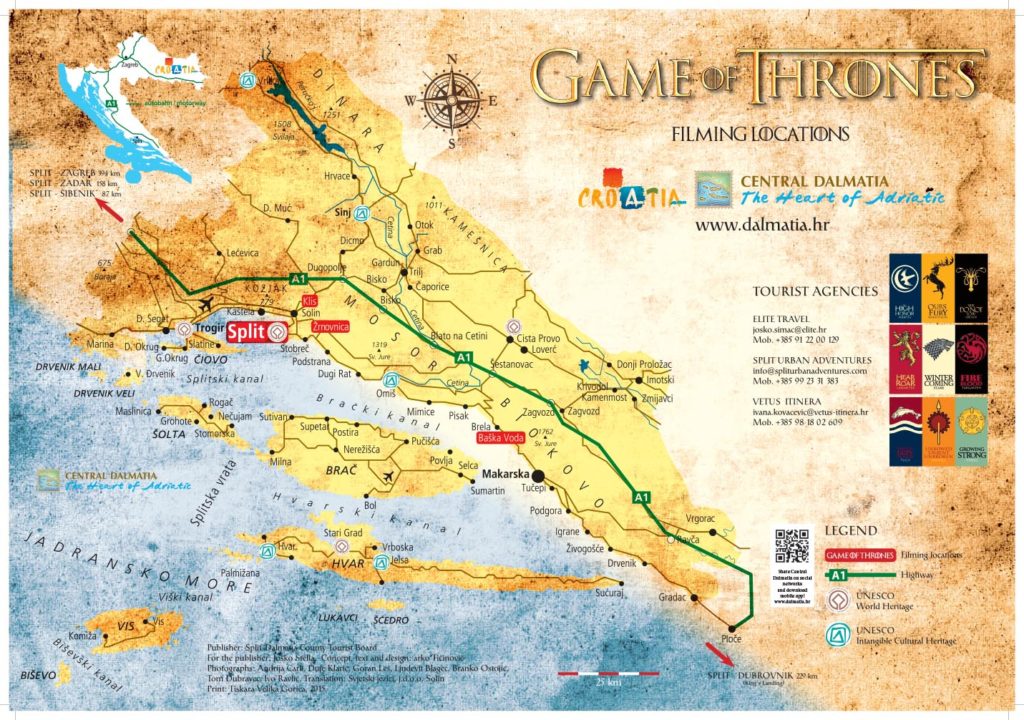

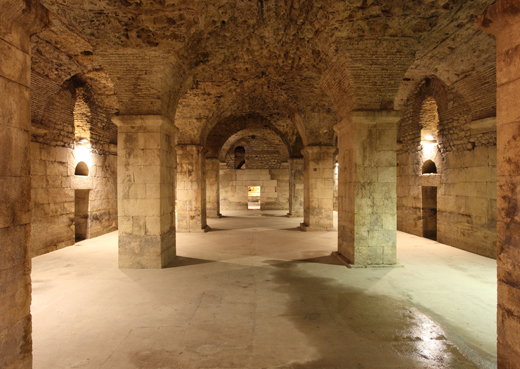
Game of Thrones filming locations in Split-Dalmatia County:
- Split - Cellars (Podrumi)
This truly monumental space, which stretches beneath the famed
Diocletian's Palace, is breathtaking in its beauty. The stone structures, the
arches, the secret passages, the impression of cold that the underground world
provides are all part of the home of the former Roman emperor Diocletian.
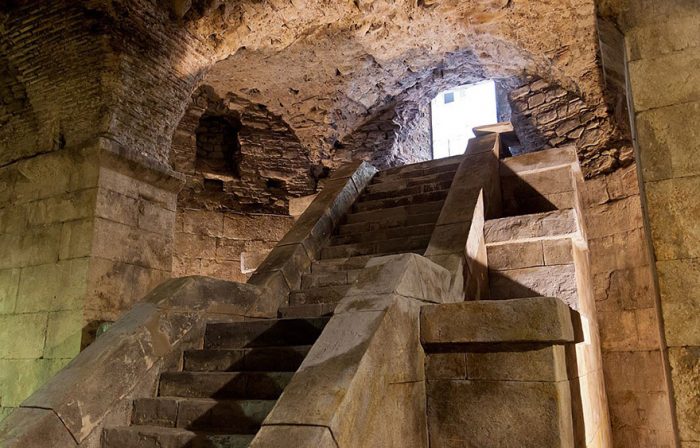
These cellars are an unavoidable stop for many tourists. And since this very old area in Split became a GOT site, numerous fans of the series have come to see it. Desiring to feel the atmosphere, the mystique of the dungeons, the room where the powerful Daenerys locked her famed pet dragons.

Here, among the smooth stone walls below Split, from which dragons cannot escape, some of the cult scenes were filmed.
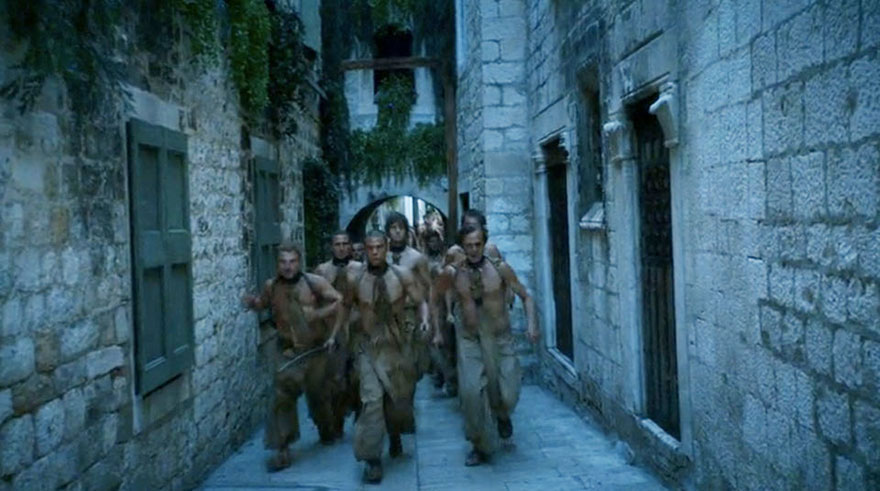
2. Split - the alleyways
After the cellars where the stone atmosphere creates a pleasant cold even during the highest summer temperatures, a climb to Peristyle awaits tourists. This is a fascinating imperial square, with its open-plan setting. And then an easy walk to the streets of Split, across the old stone floor, past the facades of the houses where people still live today.
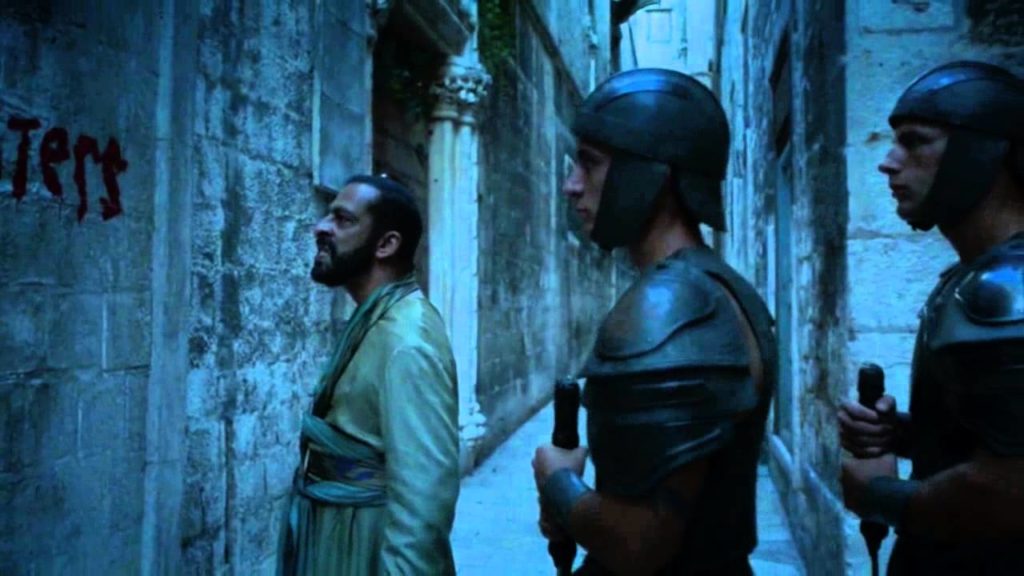
Here, in the veins of the city, Daenerys's slaves were plotting around the fire to conspire, thinking up their new moves. In the palace, the Mother of Dragons filmed numerous scenes, including the one where she sat on her throne.
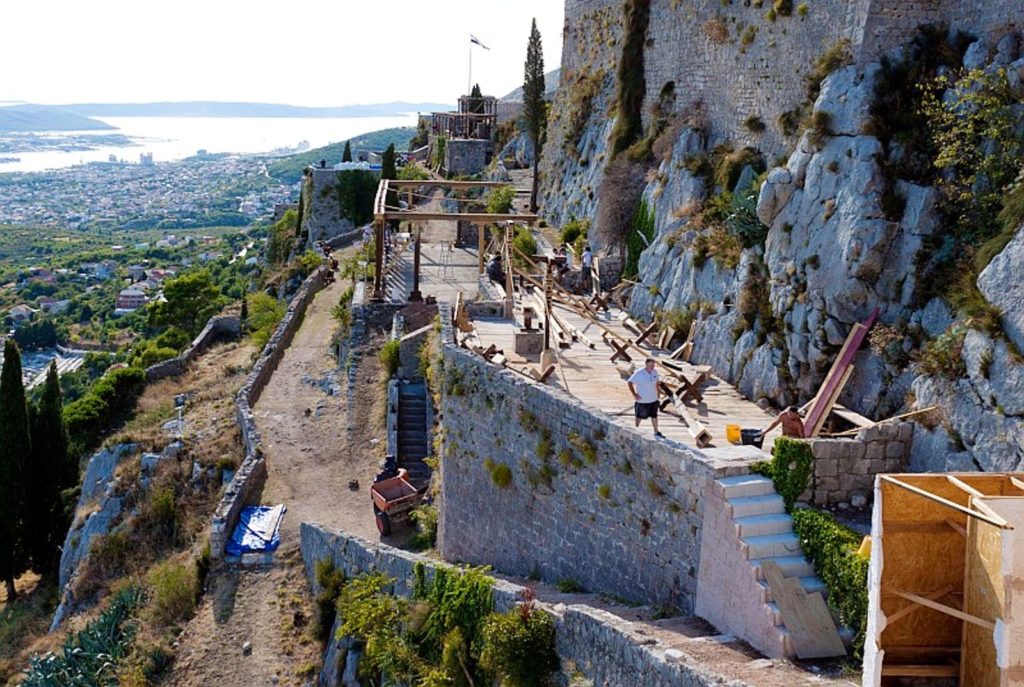
3. Klis Fortress
The view of it is fascinating, the view of a huge powerful
building on the top of the mountain near the sea, from which a beautiful view
of the valley, Split at the foothills, the coast, the islands is offered. In
the GOT series, it is in this historic building that the scenes of the largest
of the great city-states of Slaver’s Bay, Meereen, were filmed.
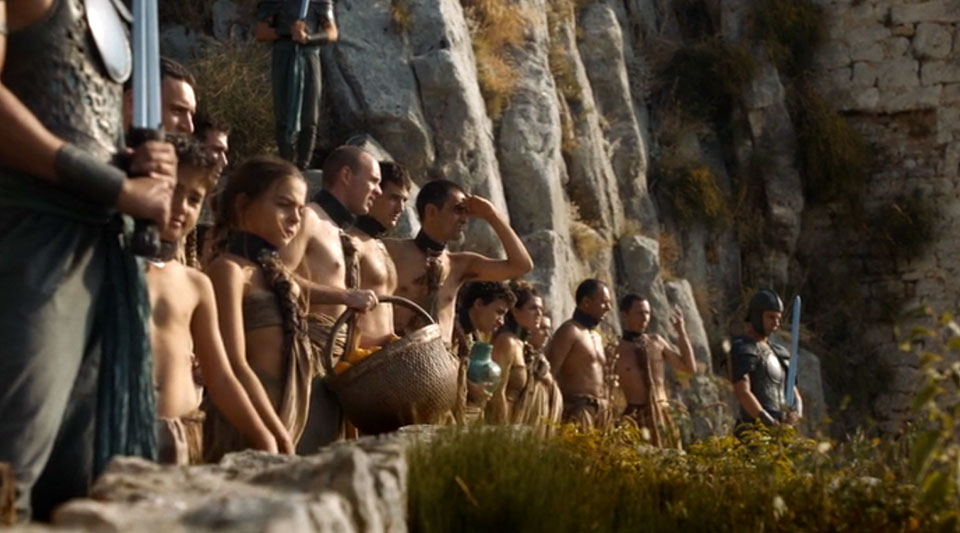
Klis Fortress came to the forefront in the season in which Daenerys conquers the city of Meereen. Fans of the series will remember her as the site of a masses of scene, packed with slaves dressed in modest togas, who flooded the gravel paths leading to the medieval building.
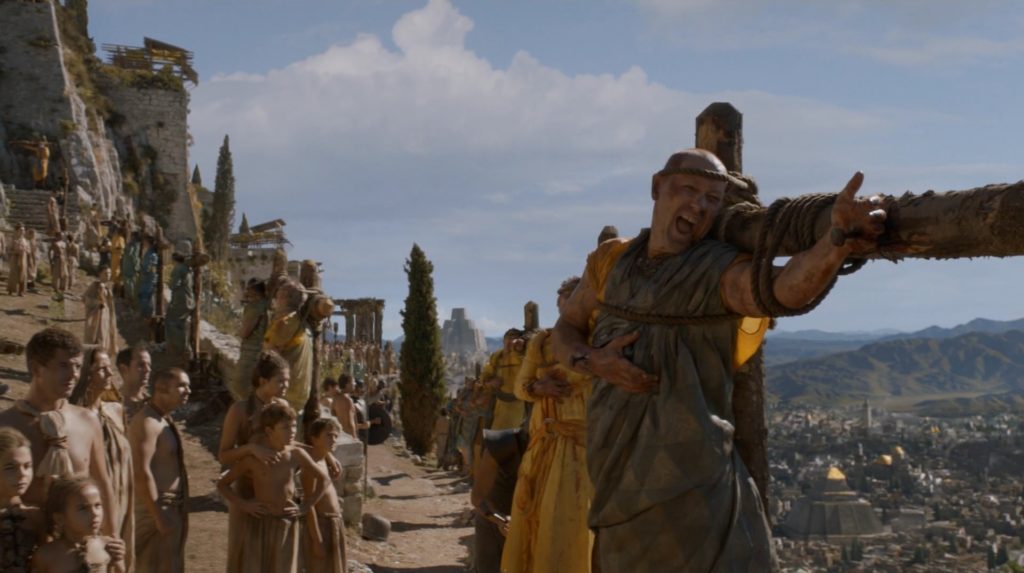
This is exactly where Khalesi publicly impaled the disobedient city authorities for everyone to witness.
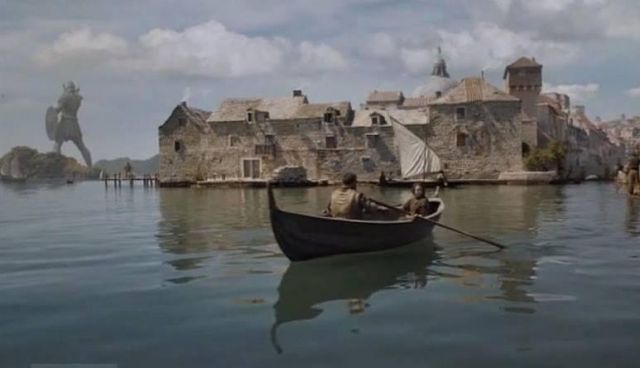
4. Kaštel Gomilica
Remember Braavos, a seaside town, and the scene where young
Arya mysteriously stands on a pier? This scene was filmed in Kaštel Gomilica, a
small town not far from Split, and at its heart is a medieval castle belonging
to Benedictine nuns.
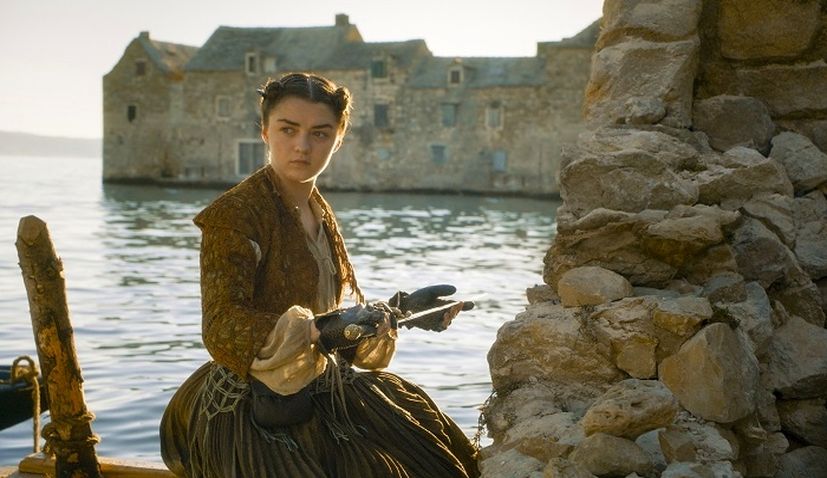
It was in this small, peaceful, beautiful town that Arya transformed into Cat, took on a different identity, and found her temporary home in the home of fishmonger Brusco and his daughters.Upravo u tom malom, mirnom, prelijepom gradiću,
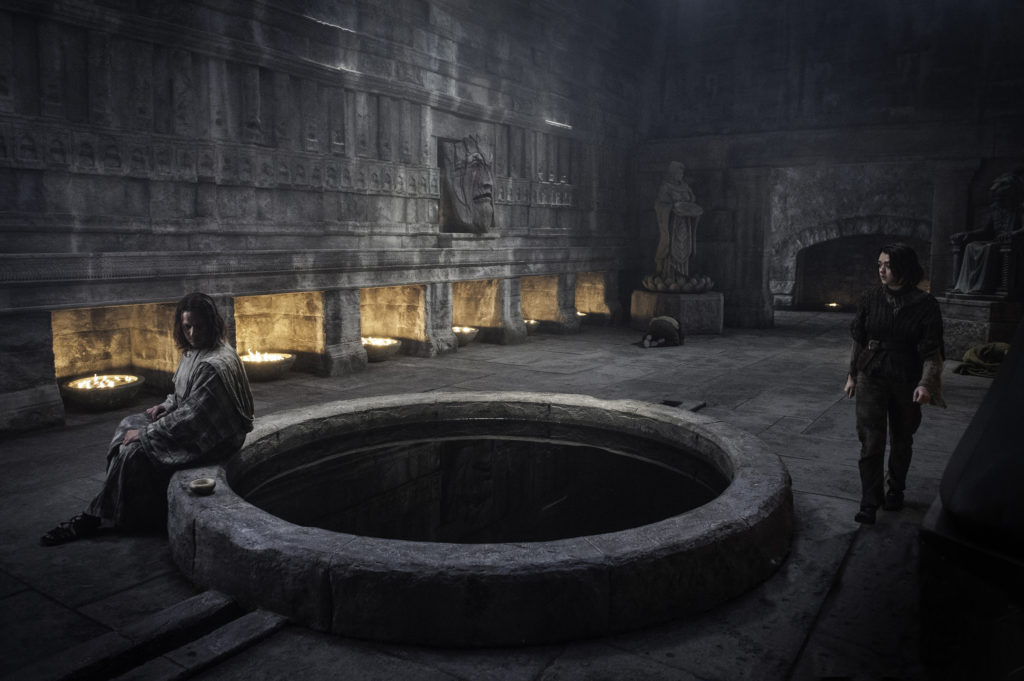
We definitely recommend a visit to this film site, where you can enjoy the beauty of the old town, historical buildings, and movie scenery right next to the crystal clear sea.
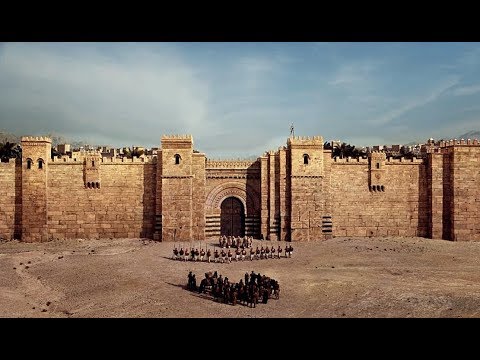
5. Trogir
Can anything be done without it? Can GOT be filmed in this area
without the film cameras stumbling into one of the most gorgeous cities on the
Croatian coast, among the alleyways framed by towers, into a beautiful, living
and breathing UNESCO living monument? No, it can't.

In the series, Trogir '’starred’' as the Qarth trade port, in which wizards imprisoned Khaleesi’s dragons. It is an impressive building that you should definitely visit, to feel the spirit of a city that has preserved its old soul in modern times.

6. Žrnovnica
Another location near the city of Split, which, due to its
exceptional natural beauty, has become the perfect getaway for locals.
The screenwriters discovered it and spread it around the world, and it will remain interesting in a scene that was gladly watched and commented on among the male population of GOT fans. This is a scene in which Missandei, one of the series' most beautiful actresses, appears, as does the bathing scene in a clear river. That river is Žrnovnica, there is also a water mill known as Antoničin mill in which the hosts grind various types of flour to this very day.
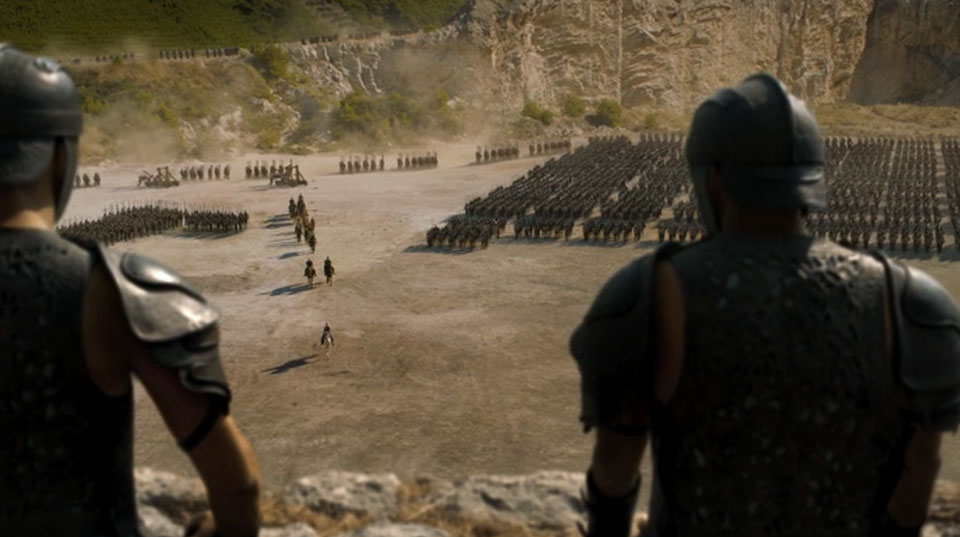
Also nearby is a quarry where the extras practiced their war scenes. This is where the shot was taken in which Daenerys arrives in front of the walls of Meereen, and the one with a duel between Daaria Naharis and Meereen’s champion.
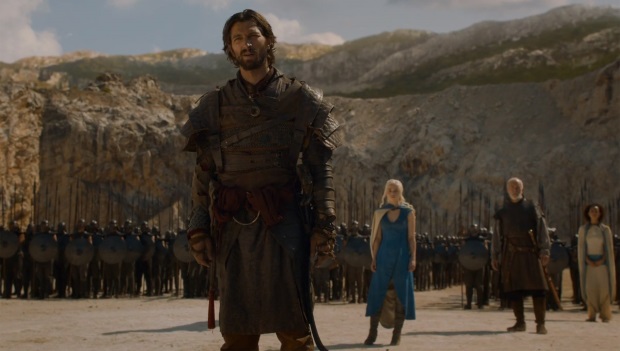
7. Biokovo
The mighty mountain above the Makarska Riviera with its perfect
stone boulders, vantage points, chasms, wild unobstructed nature, numerous
gravel paths, the danger that threatens the uninitiated, and the sort of pride
that only sheer perfection can possess, served as the backdrop ideal for GOT.
And that was for the scene with the flying dragons, these
mighty winged creatures, which, from the heights of the Dalmatian massif,
plunged toward the sea, into the unbeatable beauty of this region.
Daenerys' dragons flew in the area of Baška Voda. More
specifically, back in 2014, these scenes were shot at two locations in the
Baška Voda Municipality. The first location is Greben, located between Baška
Voda and its hamlet of Topići (about 300 metres from Baška Voda and 100 metres
from Topić). The other location is Dvori, located above Promajna, a village 4
kilometres south of Baška Voda.
Both locations are marked on the ground and on maps of the
Baška Voda Tourist Board, and they are also discussed in the section of the new
Baška Voda Tourist Board website called Film Sites.
Photo: archive of TB of Split Dalmatia county , dalmatia.hr, Game of thrones


